The next day was more of the same, so I’ll try not to repeat myself or show too many more pictures of trails in the heather.
The last night of the Challenge I camped on the grounds of Gardyne Castle.
Castles and other ancient structures are labeled in Gothic script on the Ordnance Survey map. Sometimes they’re denoted “ruin,” but sometimes not even when they are. So it’s difficult to tell whether a castle is an occupied house until you get up close.
Gardyne Castle is occupied, although nobody was around when I got there.
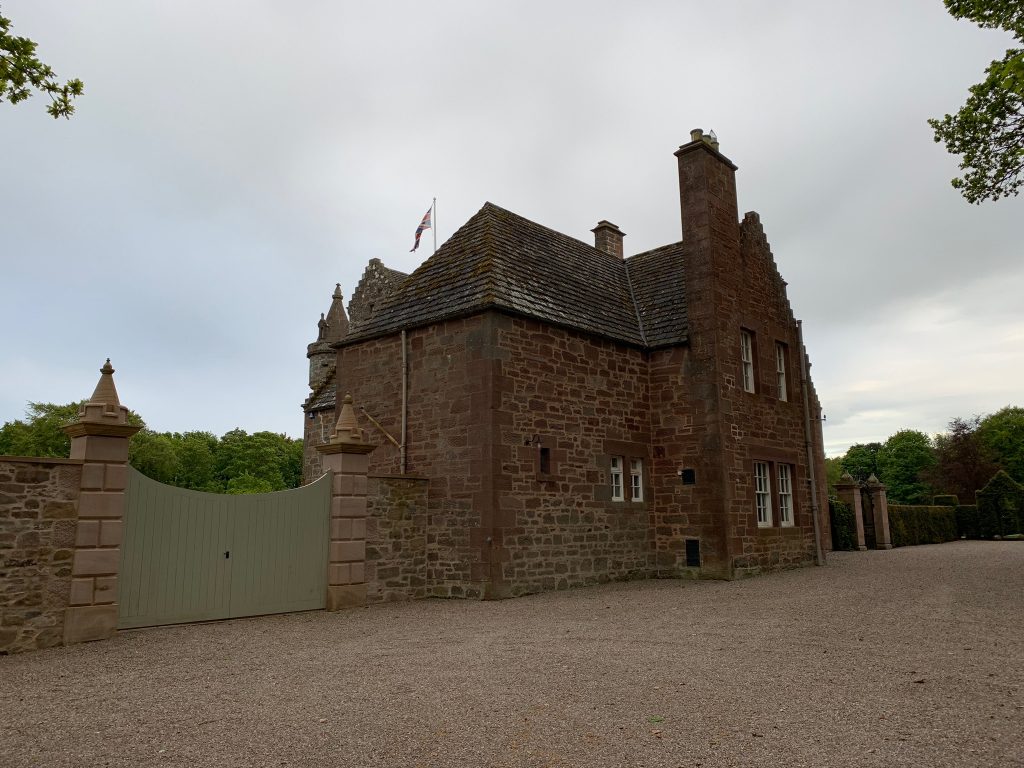
I looked through a wrought-iron gate and saw an formal garden. Somebody is definitely putting money into this place.
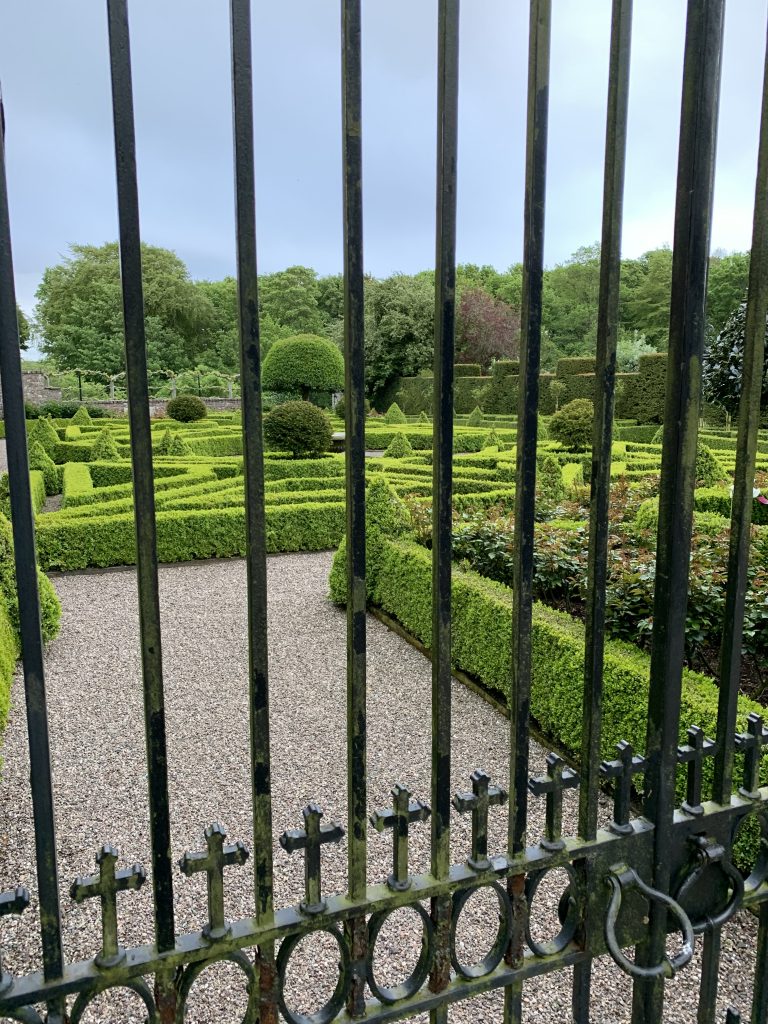
There was lawn nearby, but I didn’t want to pitch my tent there and find the lord and lady arriving for a long weekend at 10 o’clock at night. So I followed a recently mowed swath through an orchard and field, looking for a wide spot where I could put the tent and not be in the way in case the hired man decided to cut the path again very early in the morning.
I didn’t find a “turning place,” but I did eventually get to a large mowed circle with a flagless golf pin surrounded by three well-buried arrows. The site of a pan-athletic pagan ritual? Possibly. It seemed strange, but beggers (and squatters) can’t be choosers.

In truth, it was a beautiful spot, next to a stand of oaks and within view of a newly planted field. Here it is at 4 a.m., as it was starting to get light.
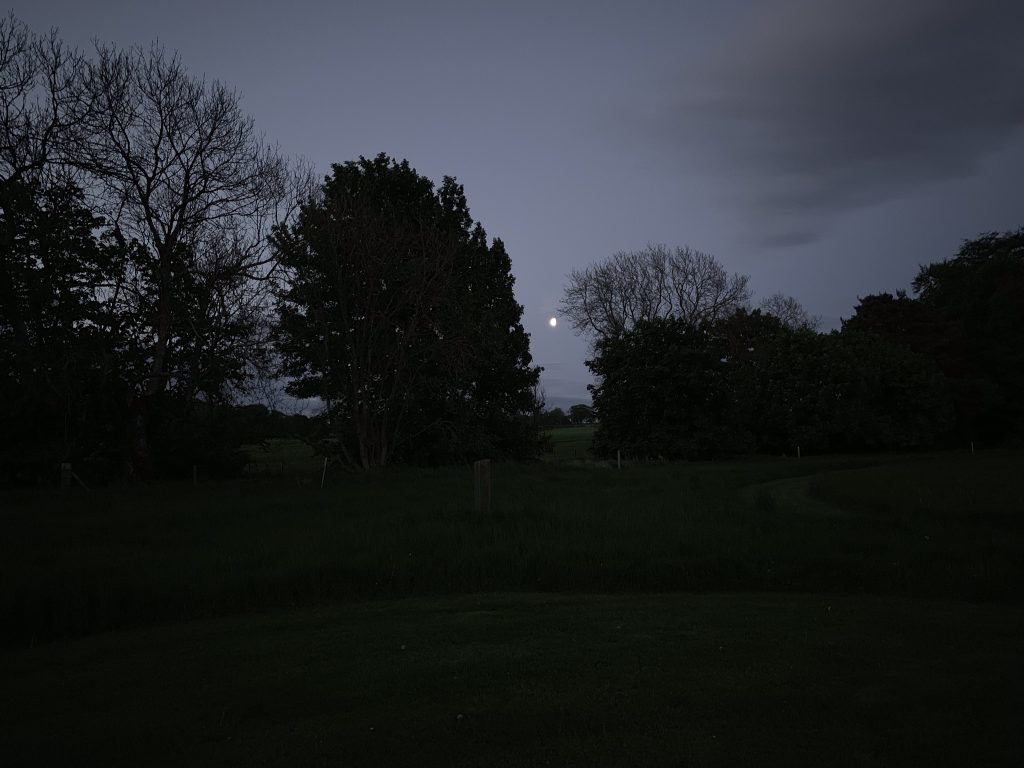
In the morning, a tractor with spray booms crossed the field, but I don’t think the driver saw me.
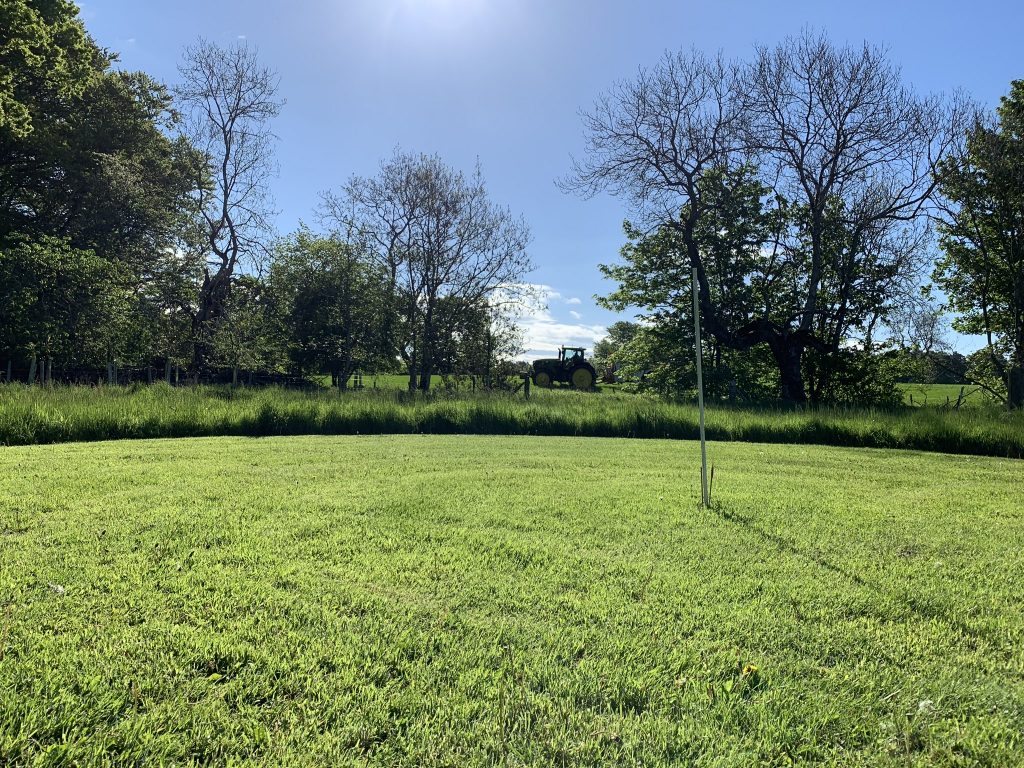
It was hot in the tent by the time I took it down, and it was going to be a sunny day. So I unwisely zipped off the lower legs of my trousers. Poor situational awareness that, as I then walked an hour through high vegetation that had lots of some sort of thistly plant with invisible spines. My legs itched and burned for the rest of the day.
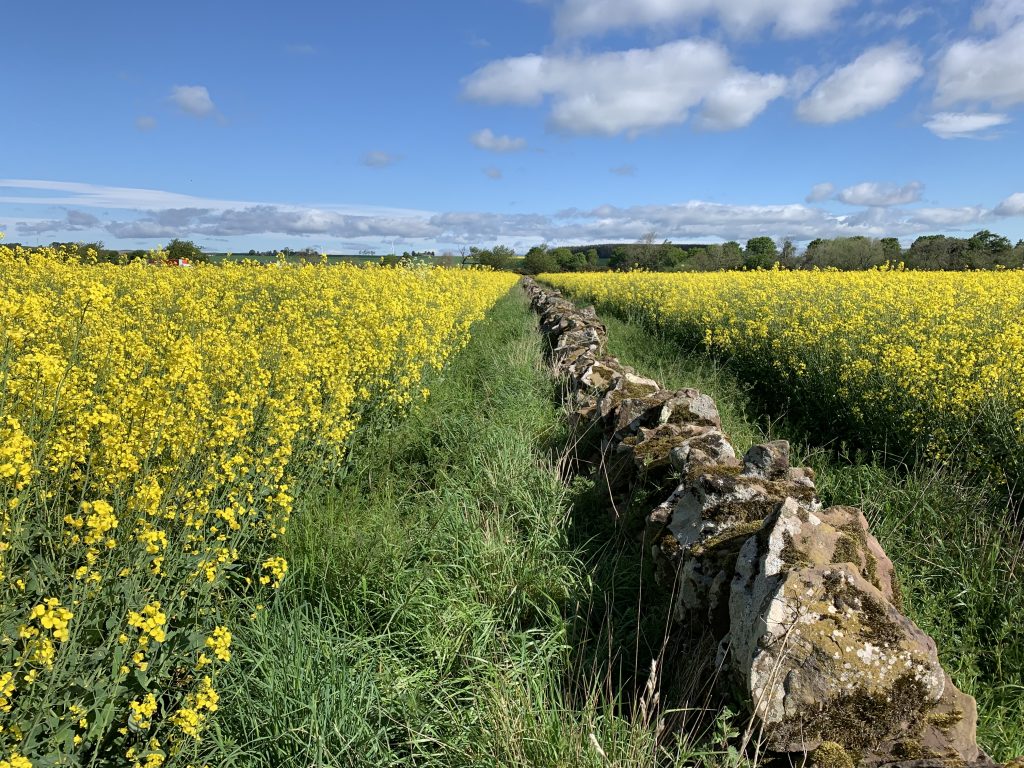
At one point, in a patch of woods, I came across this. You don’t see a lot of standing stones with Christian iconography on them on walks in the United States.
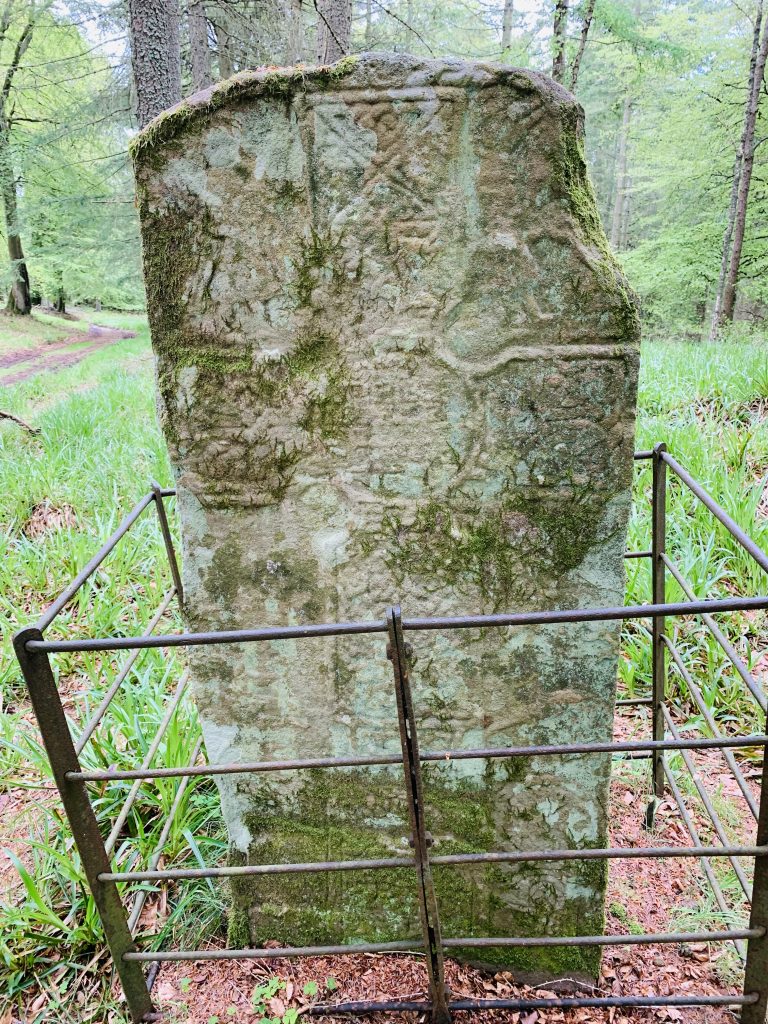
As I passed through the village of Friockheim I saw a lot of people walking from a parking lot to an elementary school carrying camp chairs in bags. I stopped and asked one couple what was going on. They were Hazel and Andy Brown, on their way to watch their seven-year-old grandson, Owen, compete in the school’s spring day of games.
“He’s a wee boy, not so fleet,” Hazel admitted, preparing herself.
The couple has been married for 42 years. They live in the house that Andy grew up in and that has been in his family for 136 years. In previous generations, the family farmed 33 acres. Andy, however, is a car mechanic, not a farmer, still working at 68. The couple has two children, a boy who is also a mechanic, and a girl who’s an administrator at the Glasgow School of Art.
We talked for a while, and the subject of America inevitably came up. I asked if they’d ever been there. They hadn’t. In fact, Hazel has never been in an airplane. Andy has once, in a plane whose engine he worked on.

I trudged on and came to Braikie Castle. This was more like it—a ruin, with birds flying in and out of high open windows. It was built in 1581 and had a roof into the 1950s.
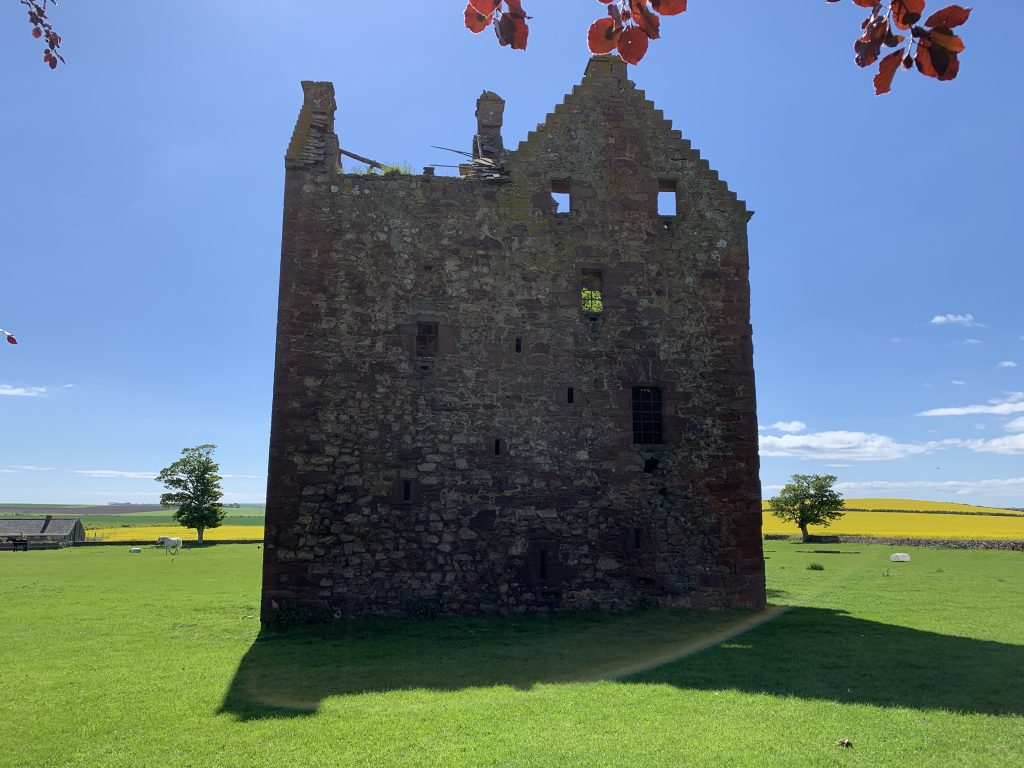
I looked around for an easy way to get over the fences around it. I sorely wanted to go up the tower and look out; it would have been like stepping into a Thomas Cole painting. But that would have taken time and effort, and there was a good chance all the doors would be barred. So I left it for another day. Or life.
As I walked away down a farm road I stepped aside to make way for a front-end loader heading in the opposite direction.
The machine stopped. Its driver was Stewart Nicol, the 55-year-old foreman of the farm. He’d grown up in the hills above Glamis, but had been here for 29 years. The farm grows barley, wheat, oilseed rape (“you call it canola”), and potatoes.
He’d been in Braikie Castle years ago, and up in the tower, too, which even then was missing some landings in the spiral staircase. “Quite dangerous, although of course you don’t think of that as a young man,” he said.
Three huge estates—Panmure, South Esk, and Usan—each running more than 10 miles in different directions, came together very close to the castle. The other two had their own castles, but they’ve collapsed. Not this one. He said: “Those walls are as straight as when it was built.” I asked him to write down the names of the estates, and he did.

I walked on. It was sunny and beautiful, but it was road walking, which is hard on the feet.
Early in the afternoon I stepped off the road onto a dirt track to urinate. I looked up and saw in the distance a hazy, three-shade horizon, not unlike distant views I’d had over the preceding two weeks. This one, however, was flat, and I realized it was the North Sea.
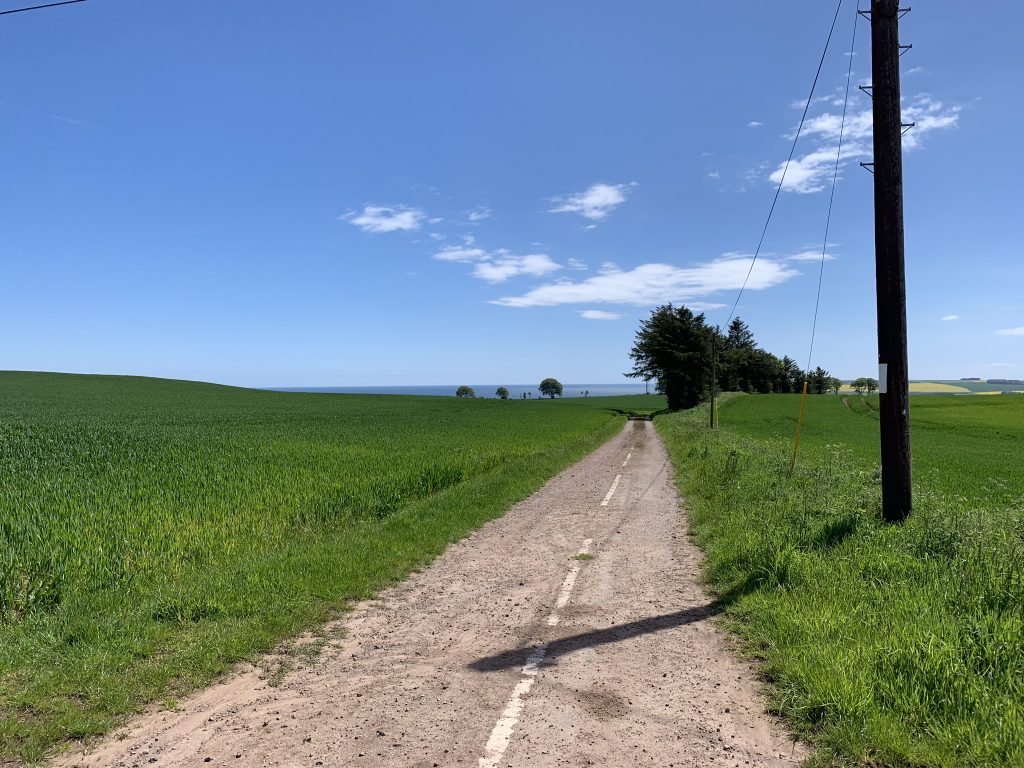
I descended on small roads, following signs for Lunan Bay, which is possibly Scotland’s most beautiful beach. It’s miles long, with cliffs at one end, and the ruins of the Red Castle.
Just beyond a small parking lot was a snack shop with a verandah, and picnic tables in a gravel yard in front. I heaved off my pack at a picnic table. On the verandah were a half-dozen people.
“You on the Challenge?” one of them asked.
“Yes,” I said.
They were the first Challengers I’d seen since leaving Ardrishaig 14 days earlier.
There were three of them, with friends and husband, in one case. The man who’d spoken to me—alas, I forget his name—had started in Mallaig, far north of where I’d started, and walked a 274-mile diagonal to this spot. (That’s more than 30 miles longer than I walked, which was a longer-than-average route). Why? To maximize time in the empty Highlands, he said.
I wasn’t looking forward to trudging back up the hill to the bus stop, and so was grateful when one couple, Barbara and Peter, invited me to ride to Montrose with them in their van. Peter has stopped doing the Challenge; Barbara, about my age, had just finished her 16th.
“Go dip your feet,” one of them said.
So I did.



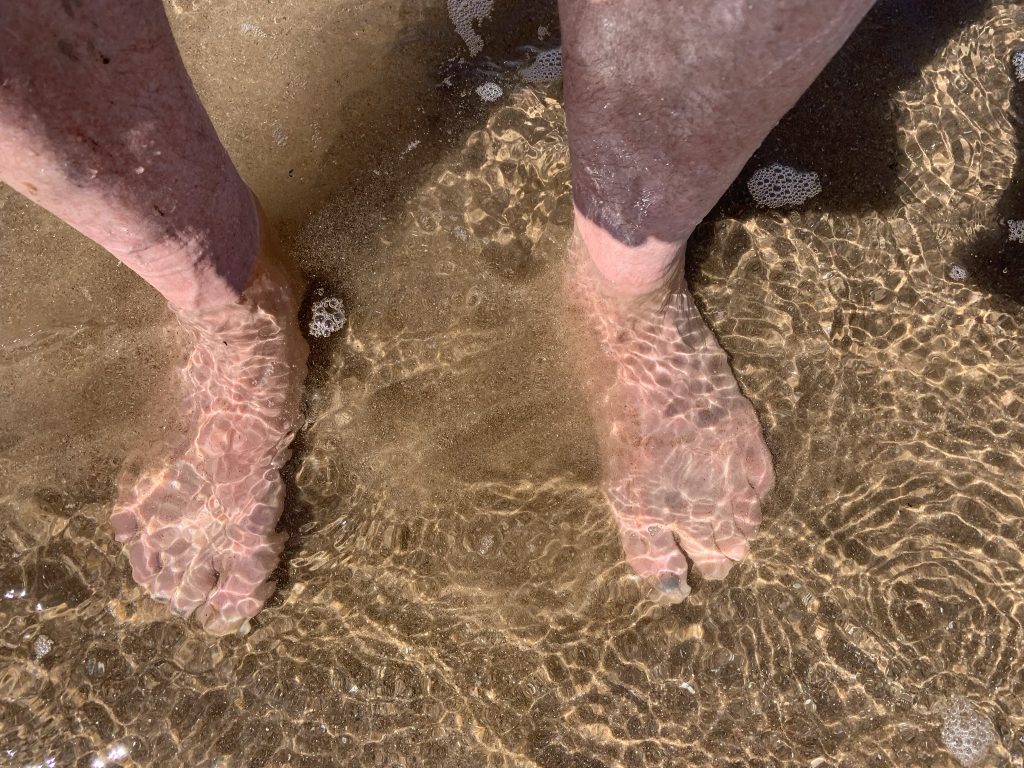
So that was the end, at least unofficially.
I still had to go to Montrose, sign in, collect my bling, and have dinner with the Friday-finishing Challengers. They’re a smaller—and more select in their own way—group than the Thursday-finishing crowd, which was already on its way home.
I signed in at Challenge Control, the room at the Park Hotel where people have been quietly worrying about 379 walkers for two weeks. (For the record, 38 of them chose to “retire”—the gentle term for quit—this year).
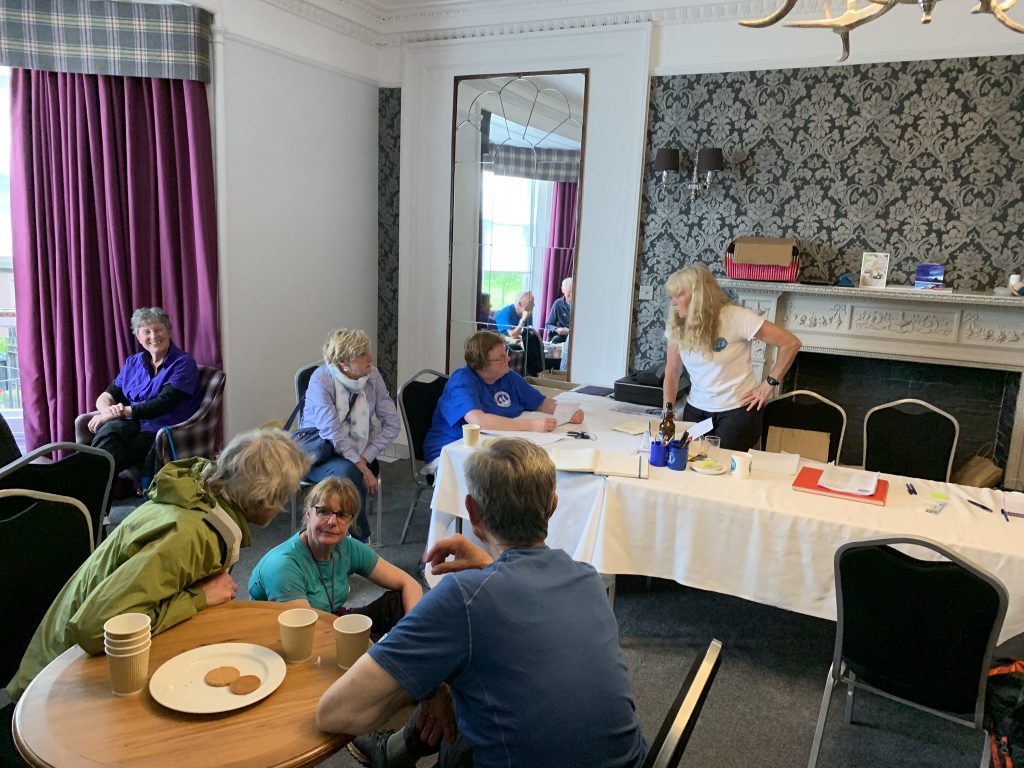
The two people I wanted to see at the dinner both finished on Thursday and had left. I didn’t know anyone, so I sat at a table with strangers.
On one side of me was Graham, a civil engineer who helped create the stage setting for Pink Floyd’s famous concert in Berlin, at the site of the Berlin Wall. Construction uncovered a tunnel for the Nazi leadership that still had food and wine in it, he told me. The Berlin police immediately filled it with concrete so it wouldn’t become a destination for neo-Nazis.
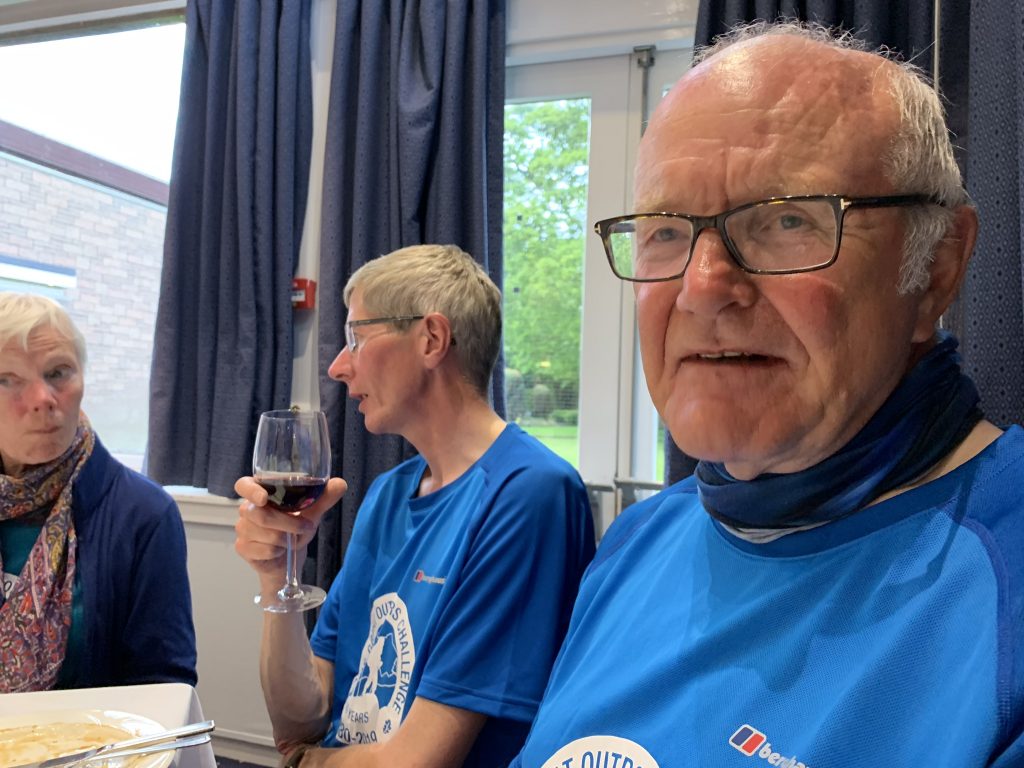
On the other side was Michan, a Dutch journalist and Challenge first-timer. He’d been an exchange student in Green River, Wyoming, for two years in high school. He’d picked the place because of snowboarding.
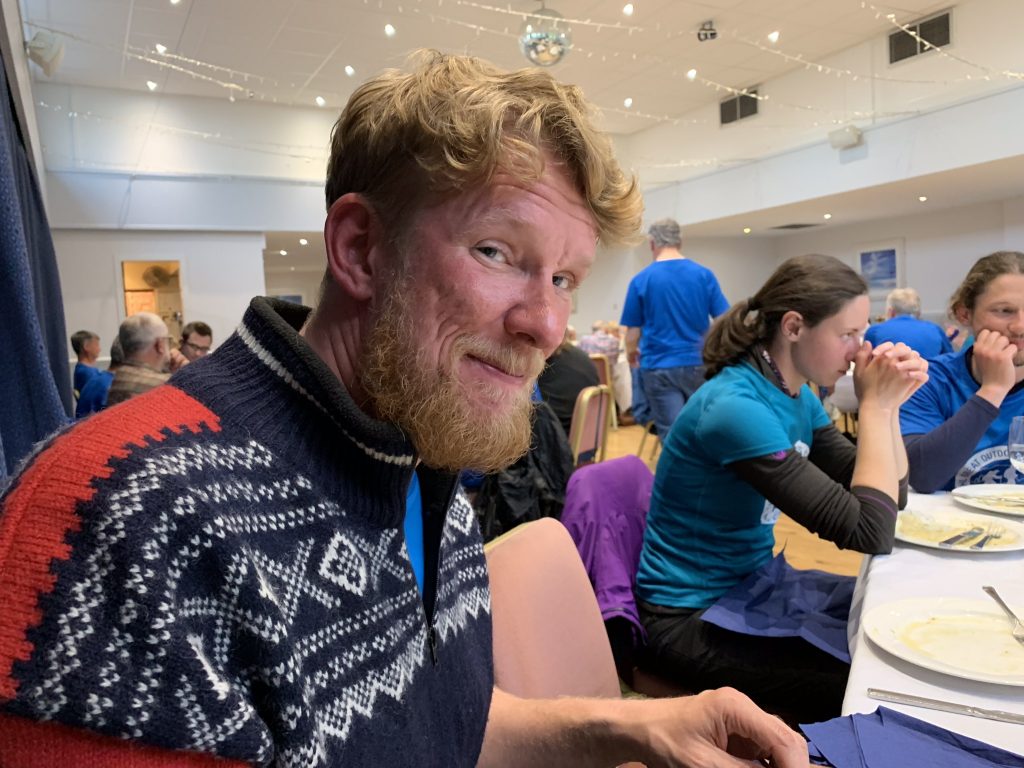
Sue Oxley and Ali Ogden, the patient and indefatigable coordinators of the event, were there, of course.
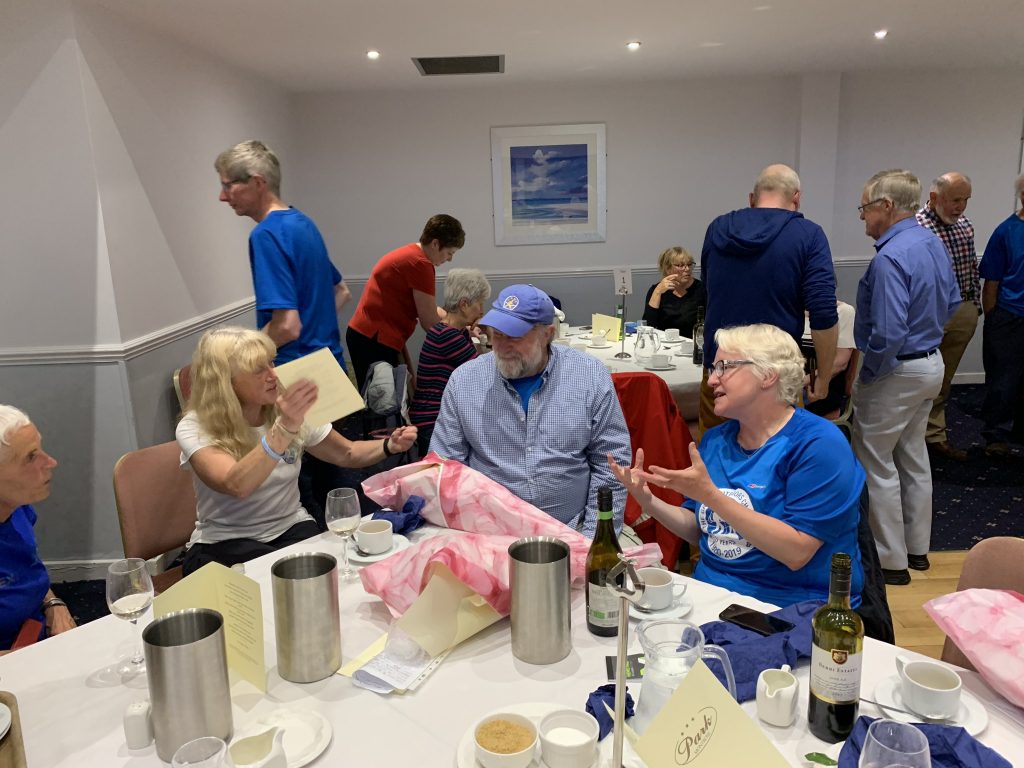
So that was it—almost.
I spent the next day and night in Montrose, although to quote Bob, “Anyone with any sense had already left town.”
As I walked down the high street I passed a Salvation Army thrift store. I stepped in and asked the man at the counter whether it accepted footwear. He said yes, but the store was closing in half an hour and wouldn’t reopen for two days.
I hustled back to the hotel and got my hiking boots. They were old friends. I loved them. But we’d grown apart.
“They’ll have to be cleaned up a bit, but they’re still in pretty good shape,” I told the man, showing him the soles. “Do you think you can sell these?”
“Oh, we can sell those for sure. Brilliant!” he said.
It made me happy to think they might one day see the hills again. As for me, it’s an open question.

So that is it for my report on The Great Outdoors Challenge of 2019.
I’ll be putting up two more posts in the next few days. They’re about World War I, peripherally related to the walk. You might be interested.
In the meantime, thanks for reading this. It means a lot.
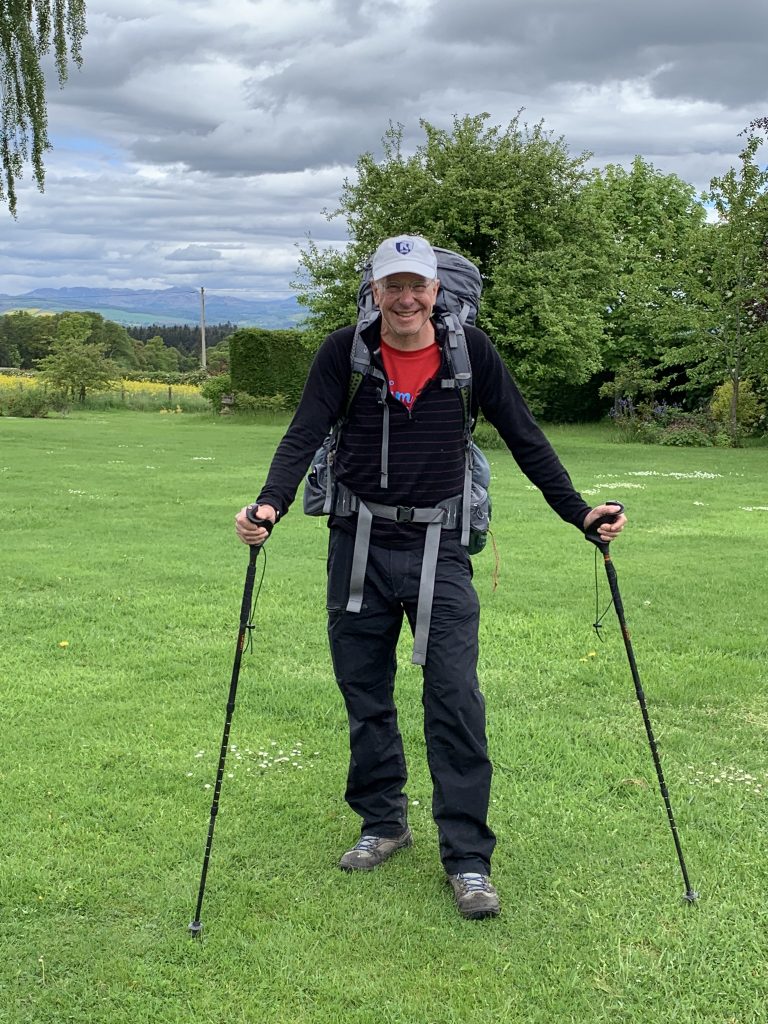
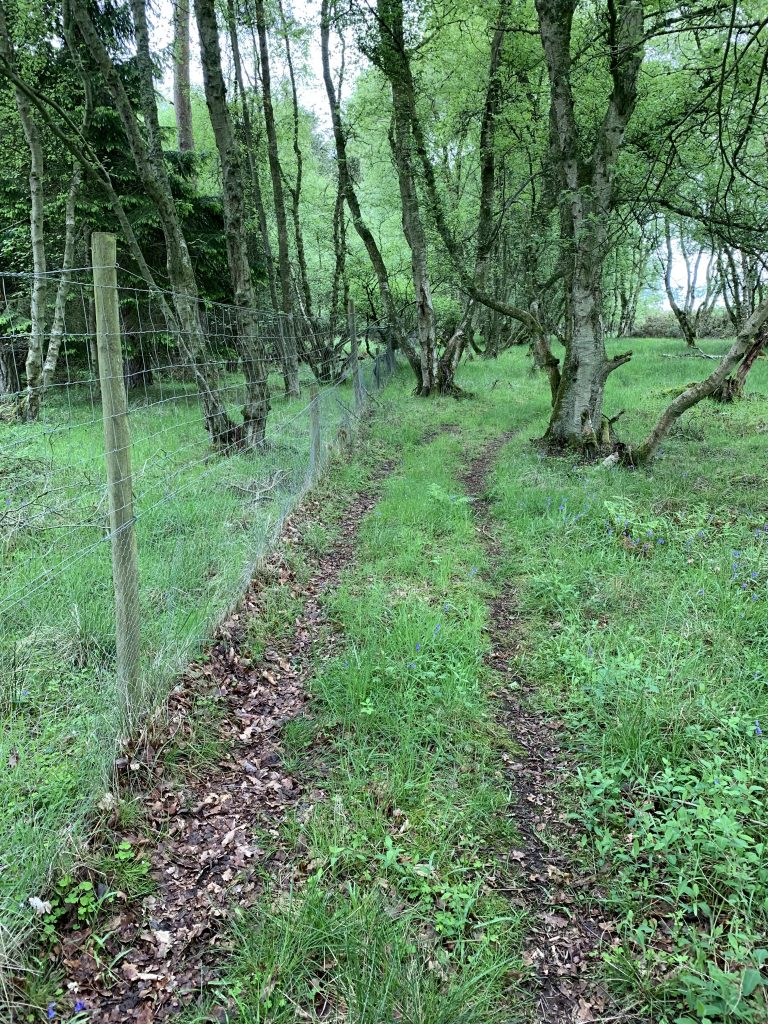
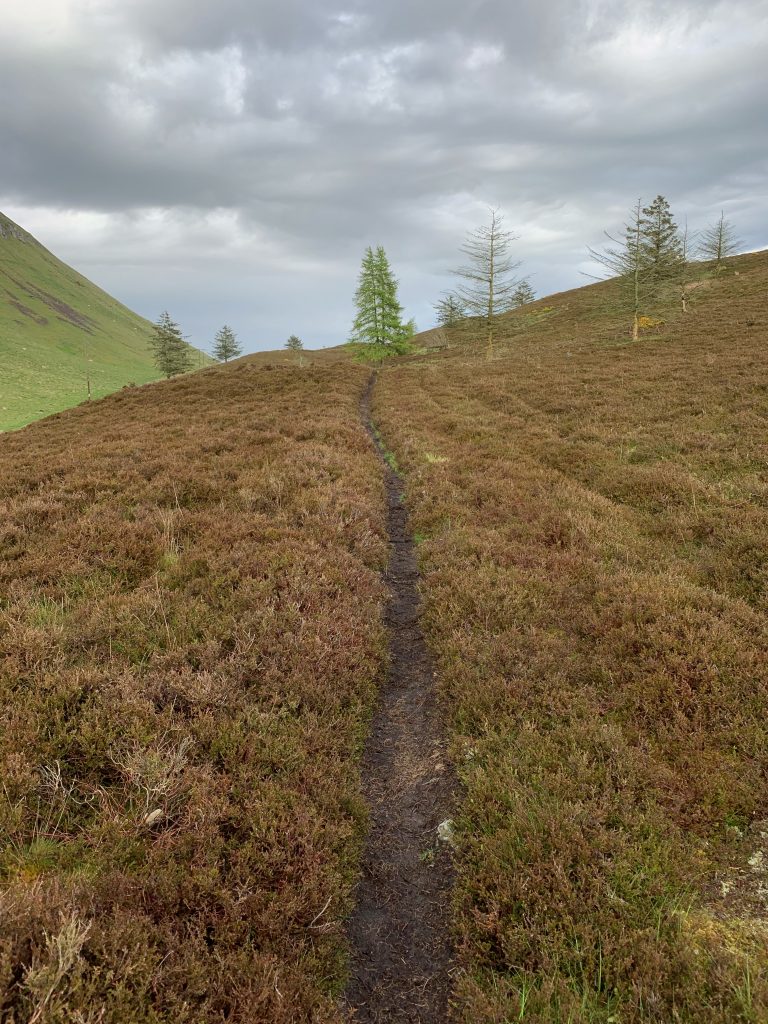

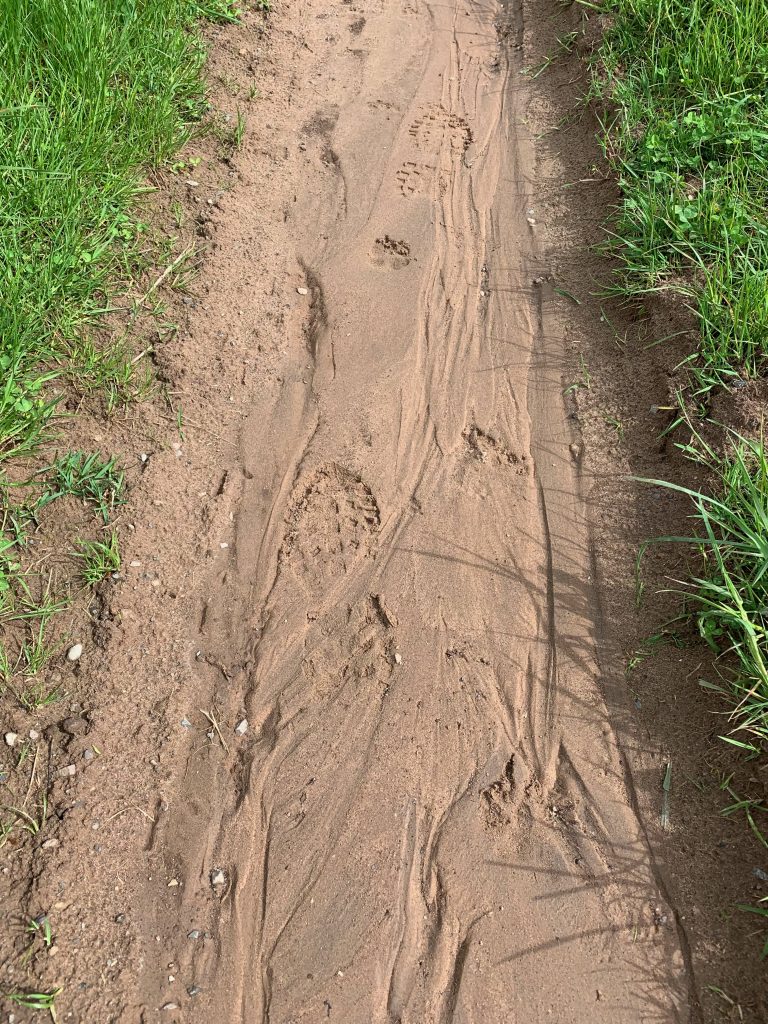
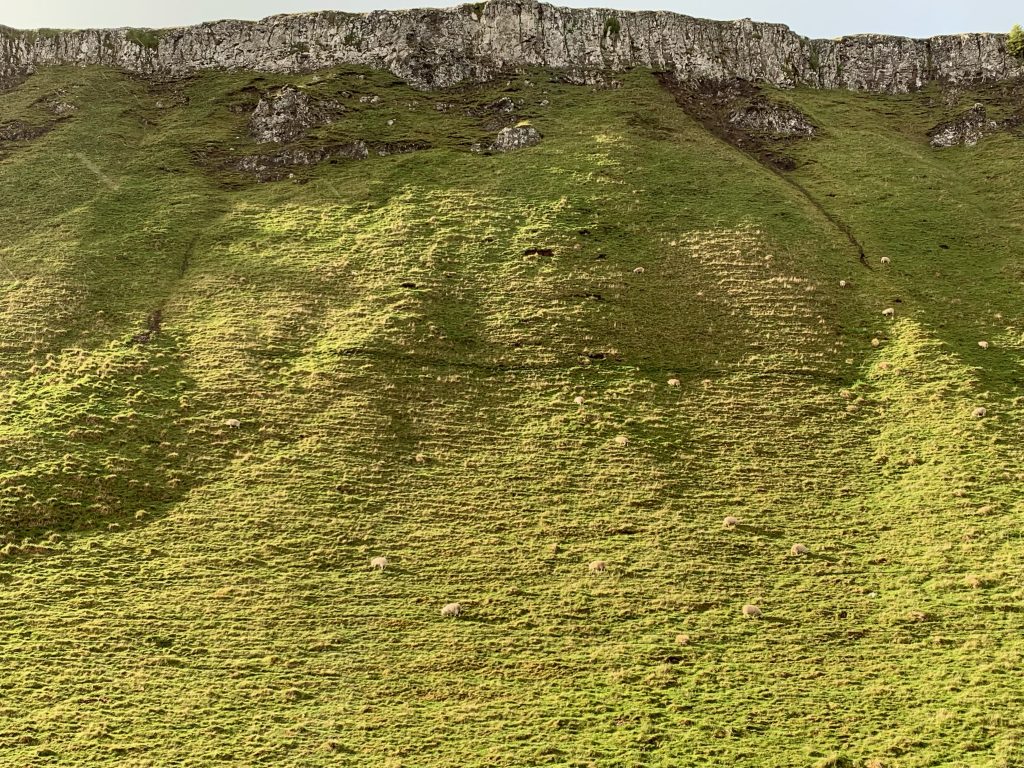
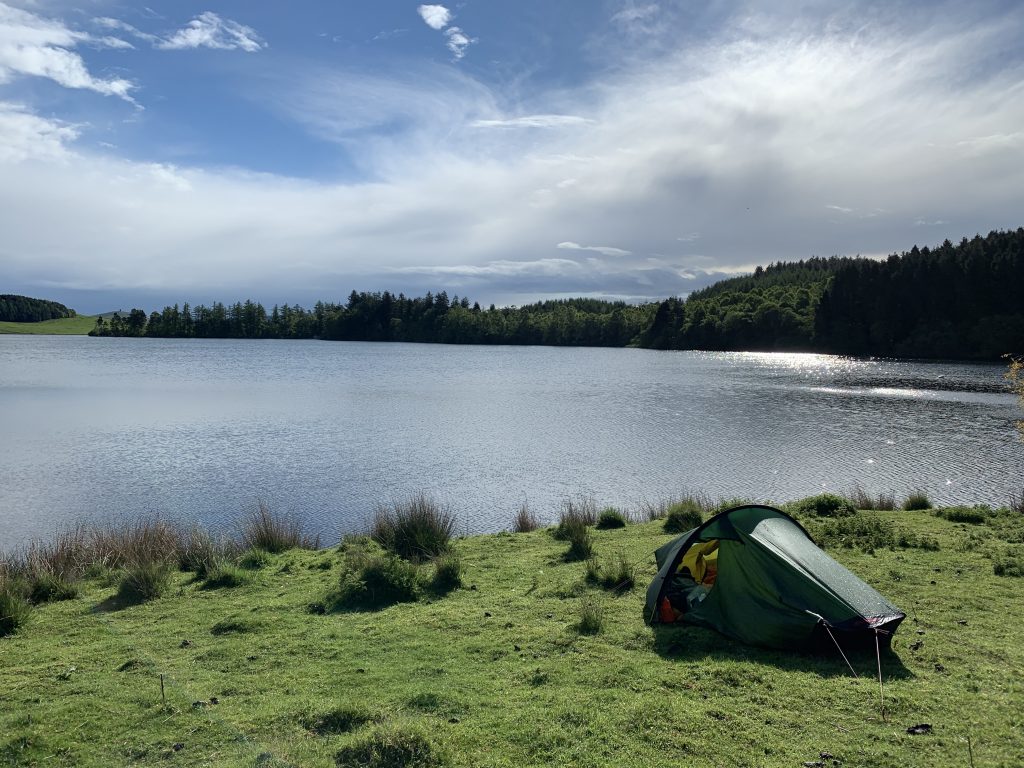
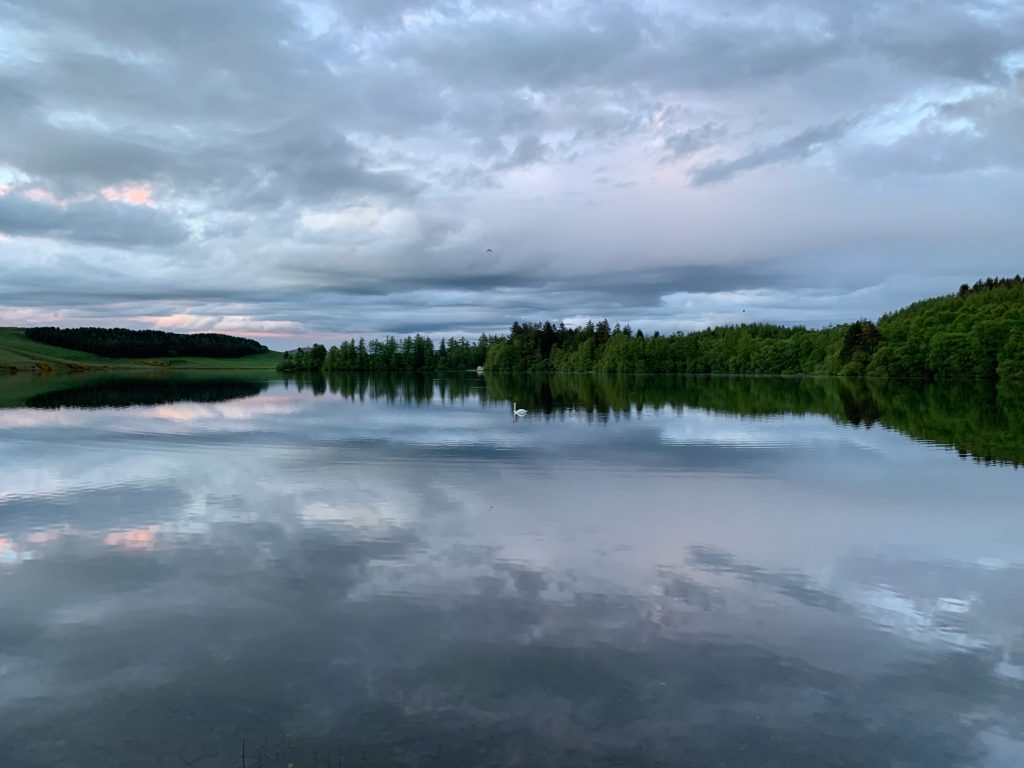
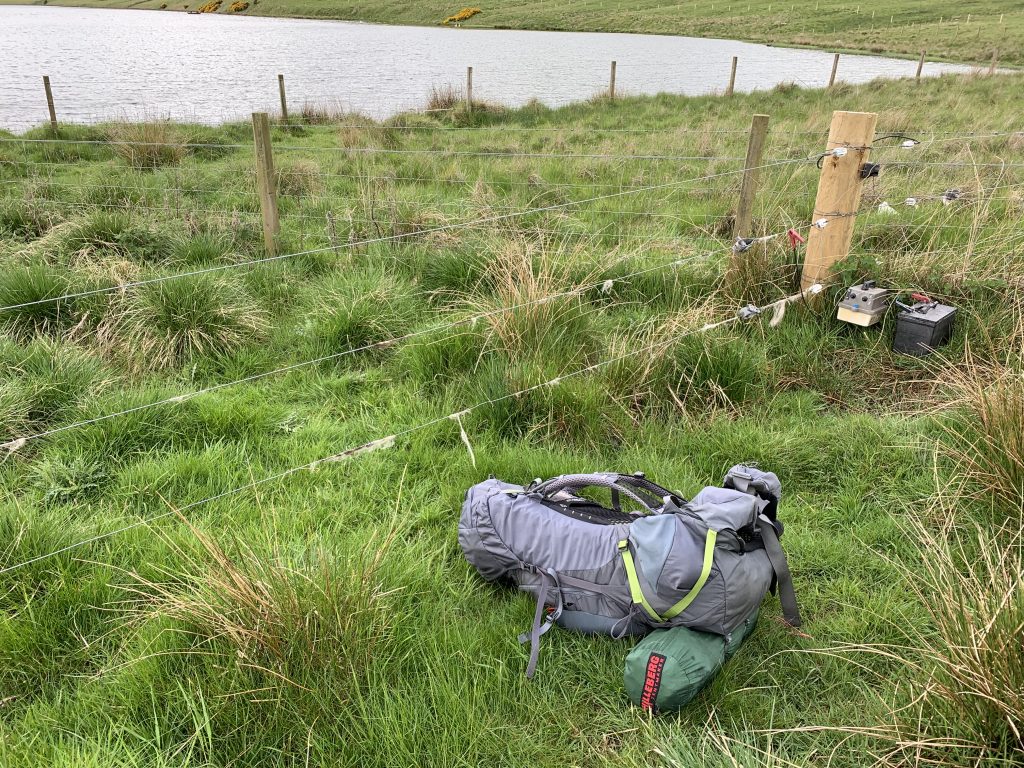
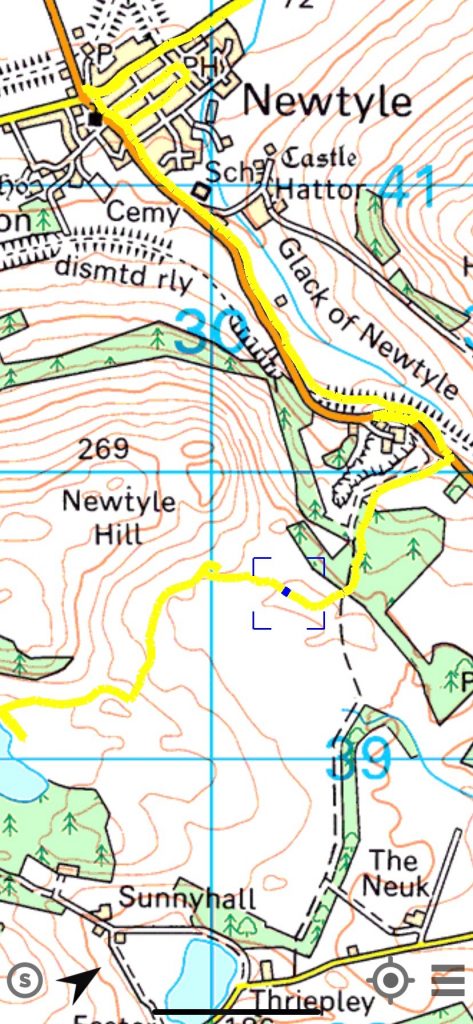
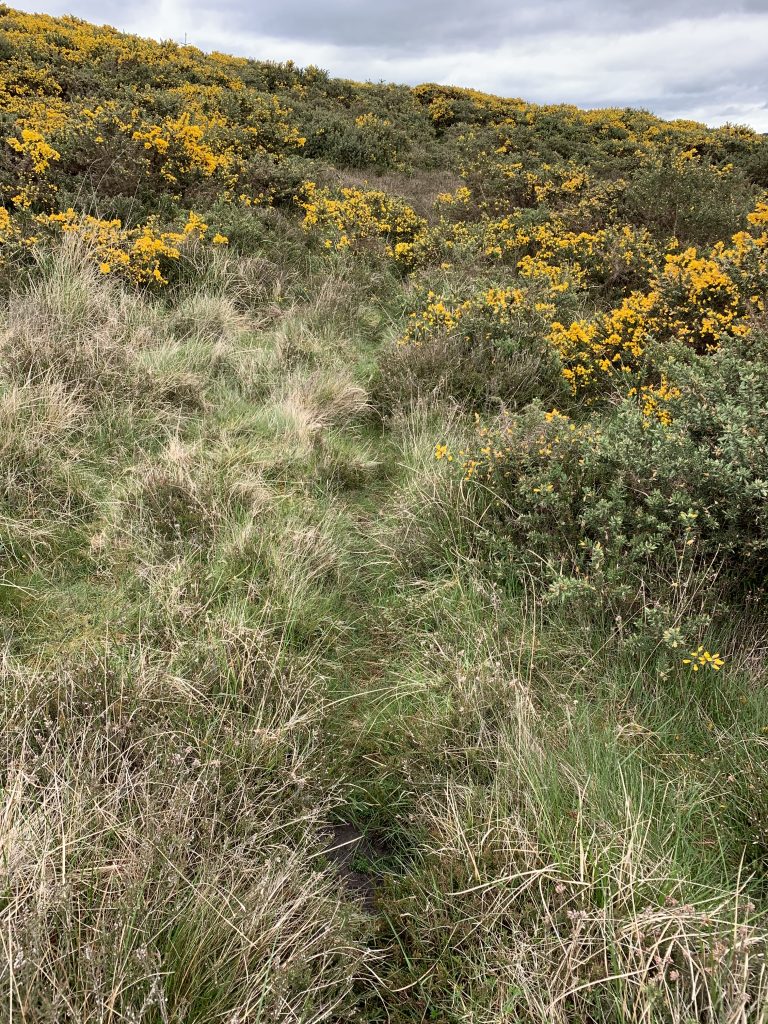
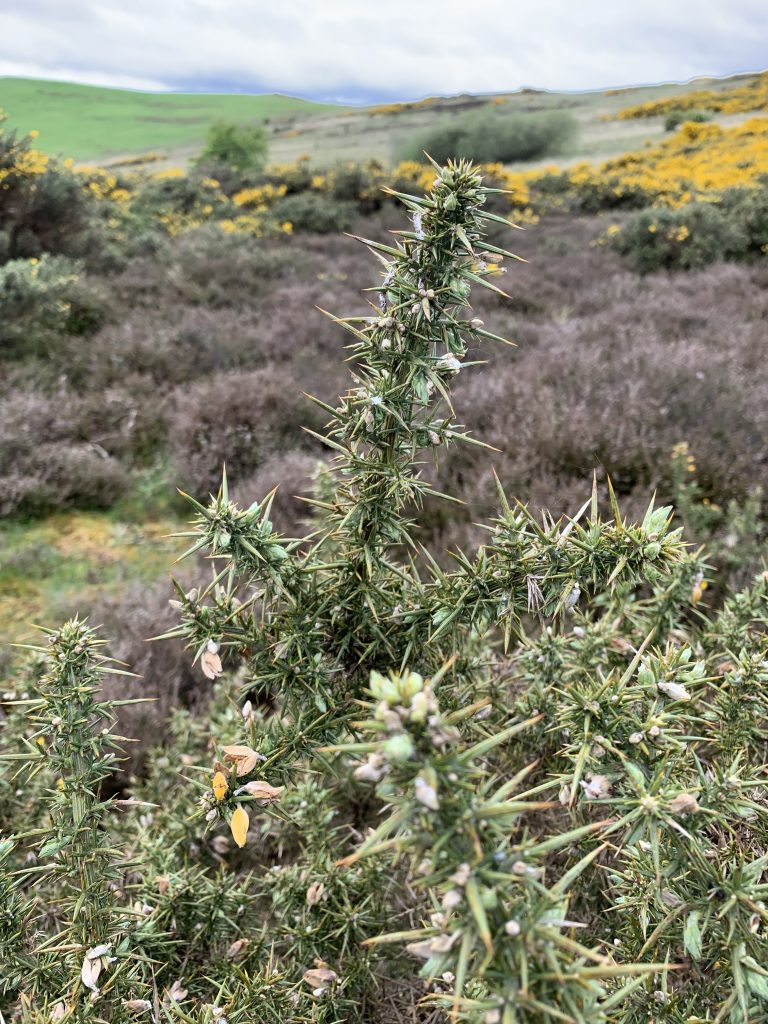

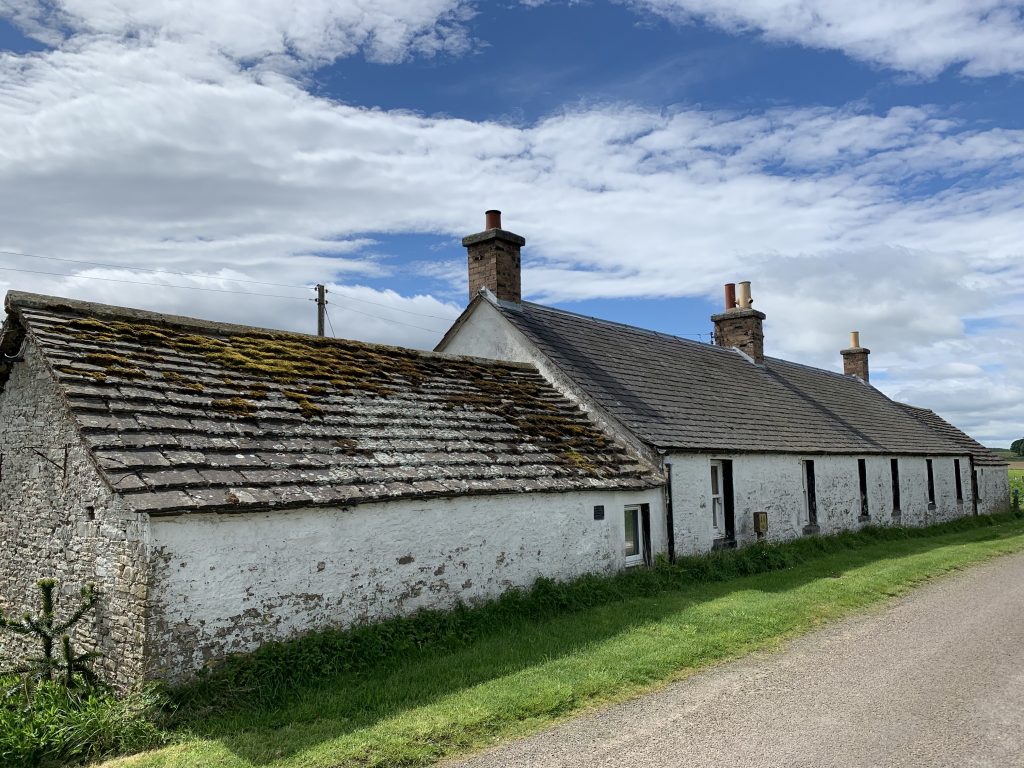
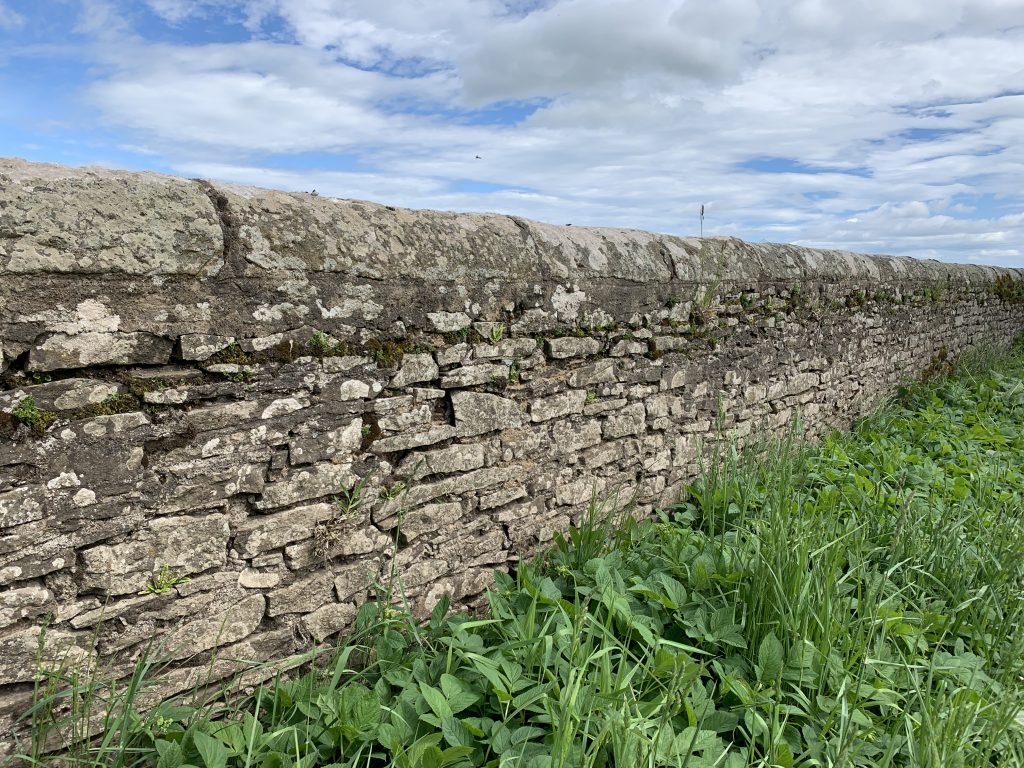
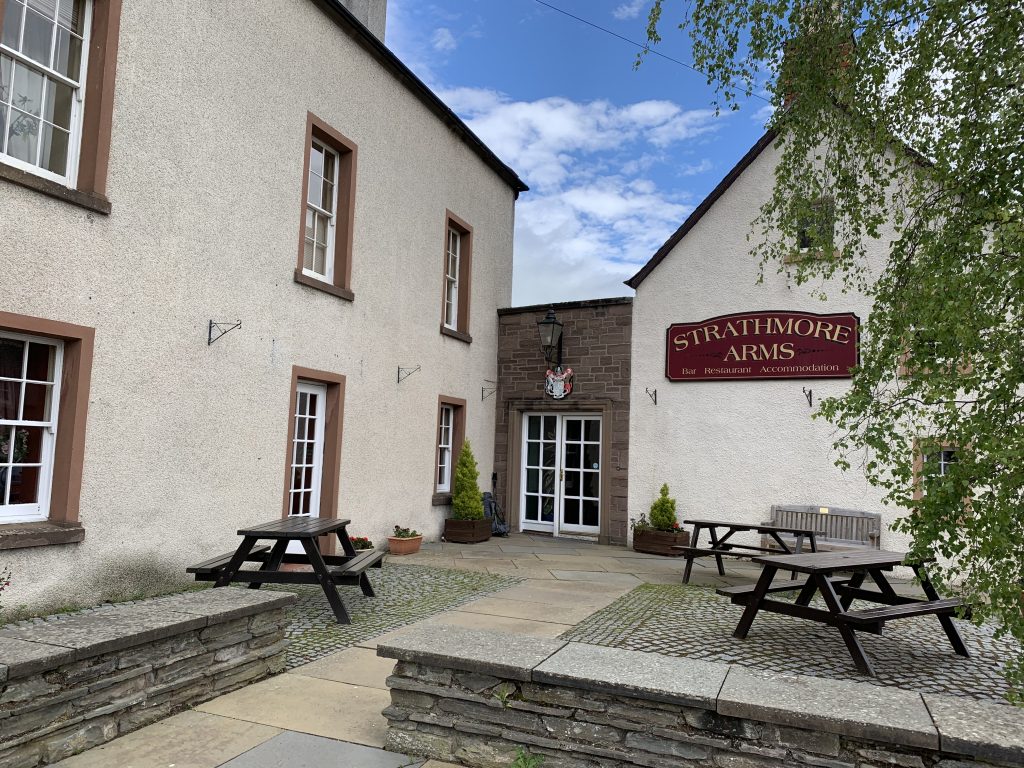
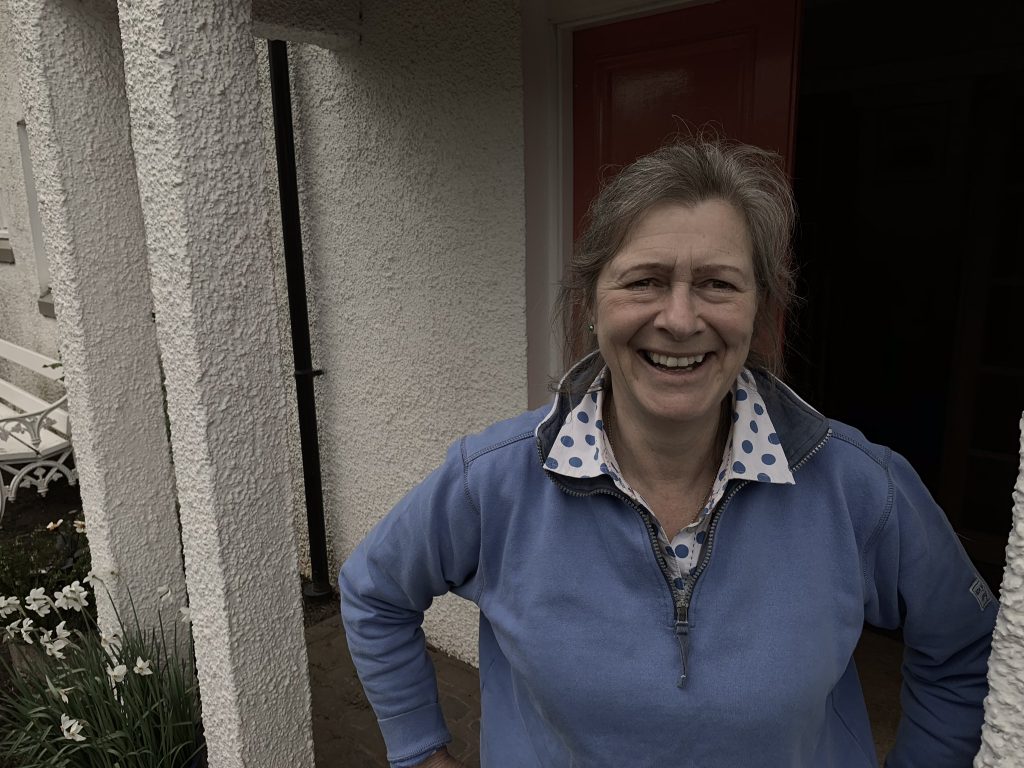
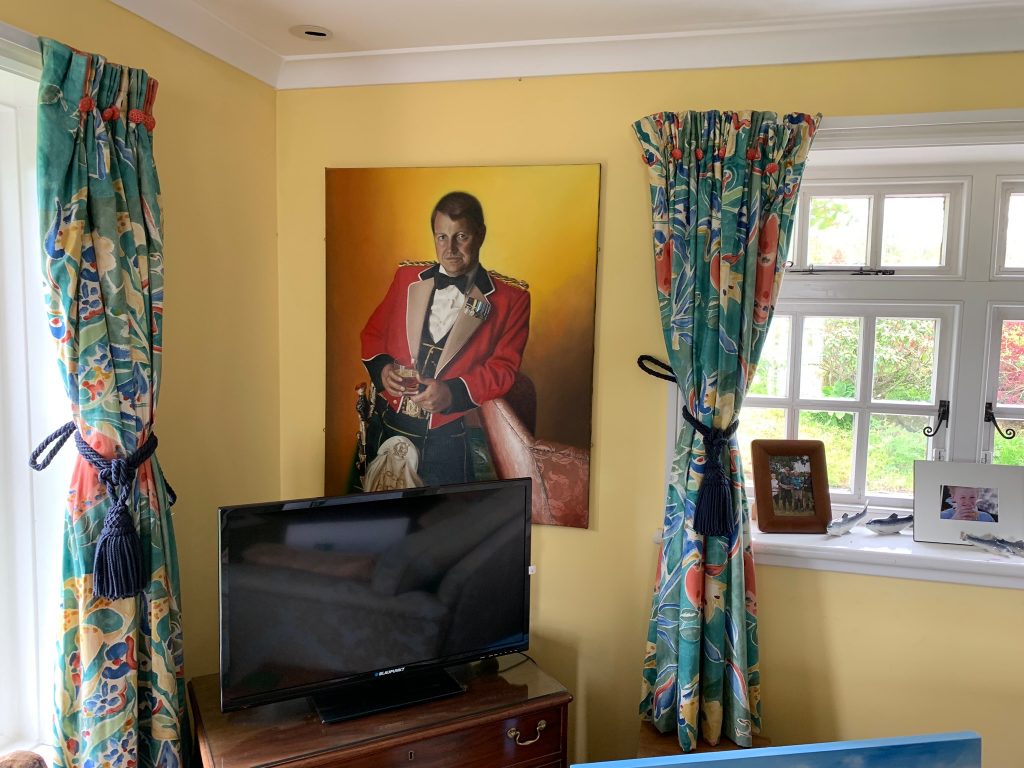
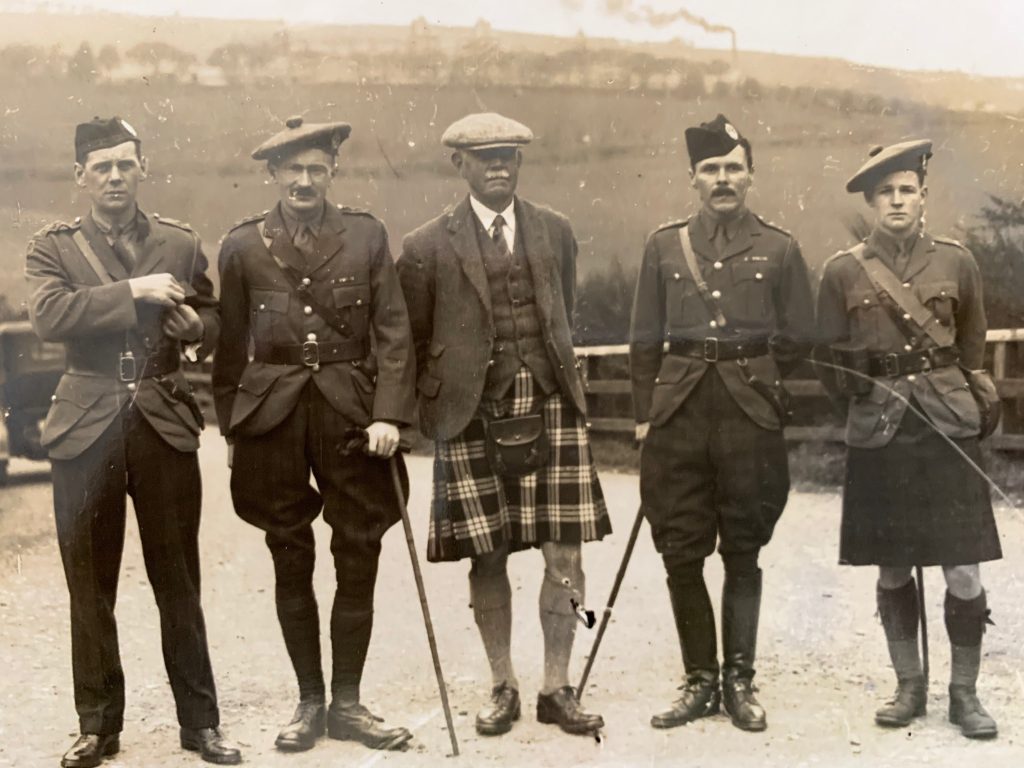

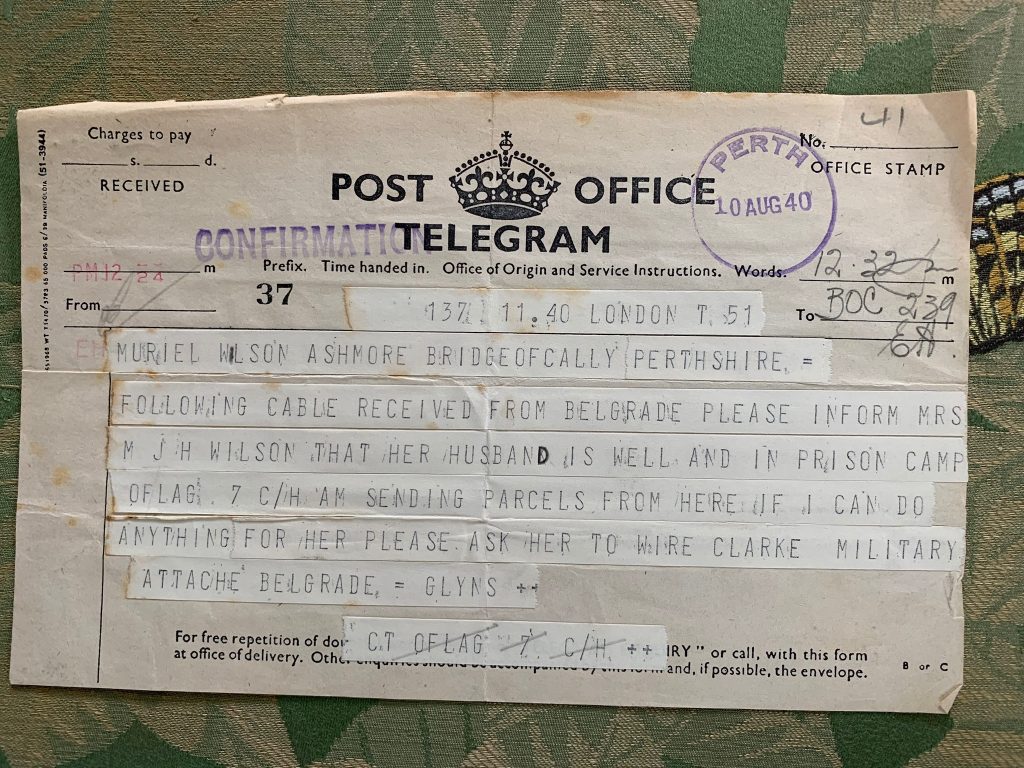
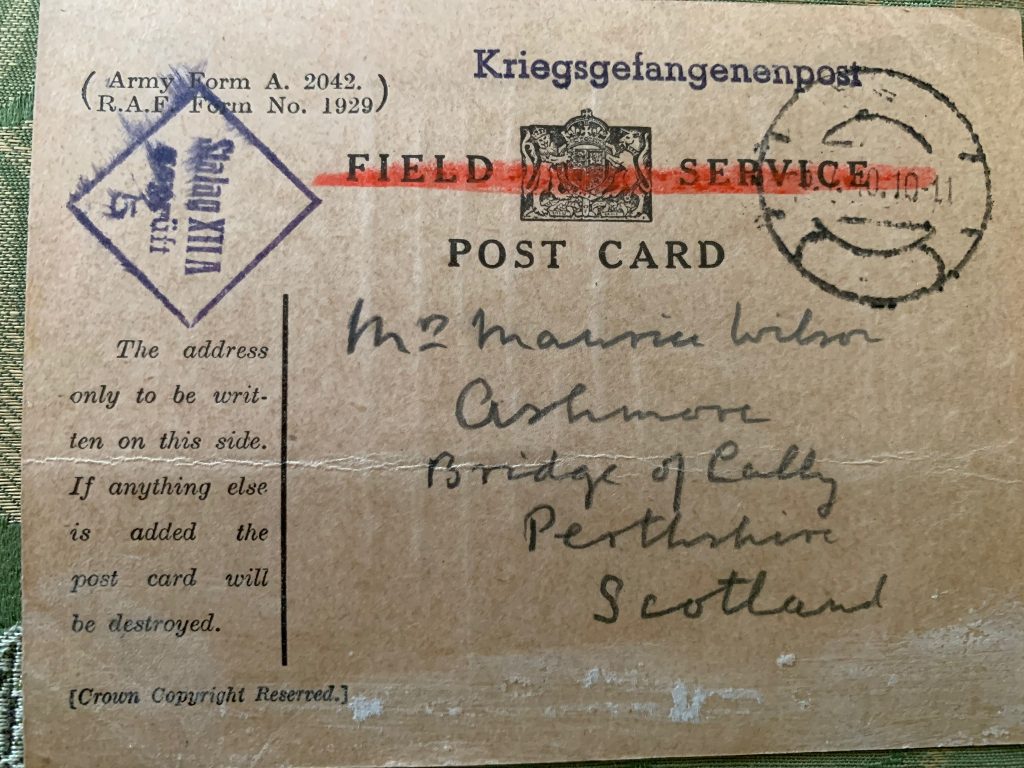

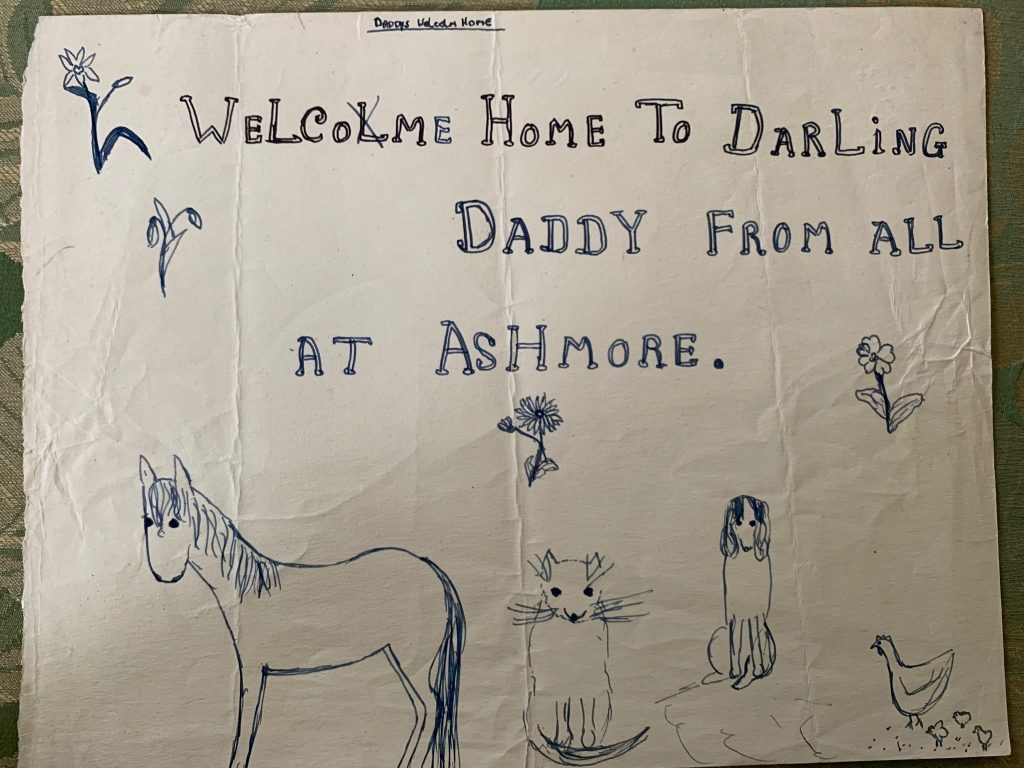


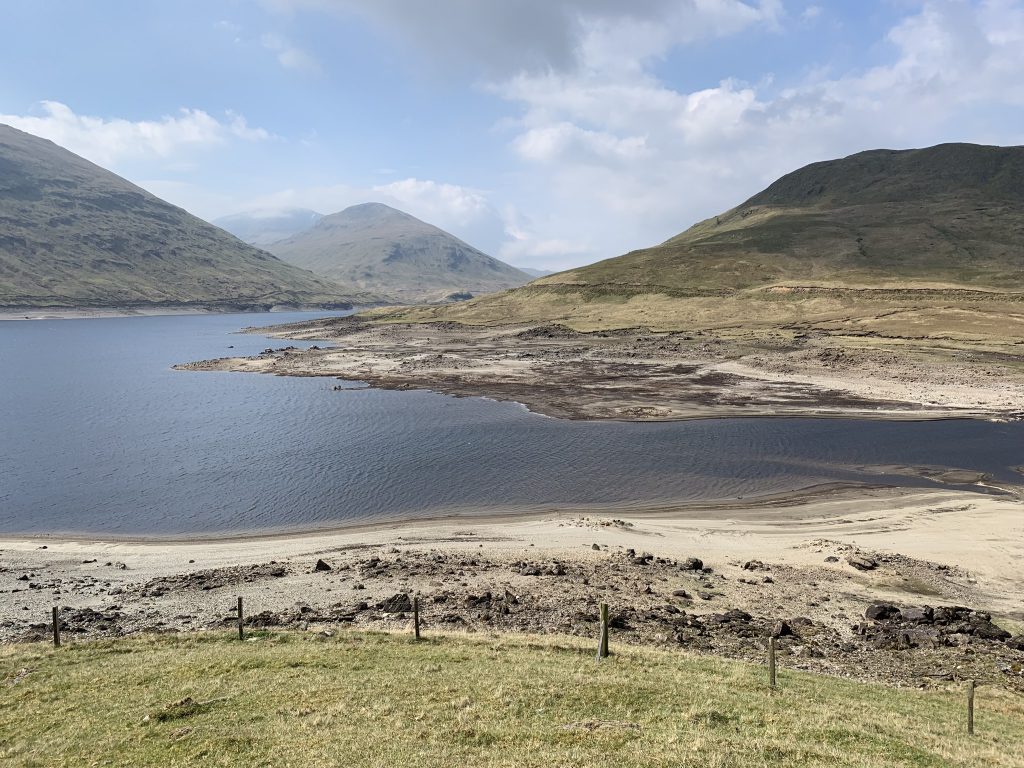
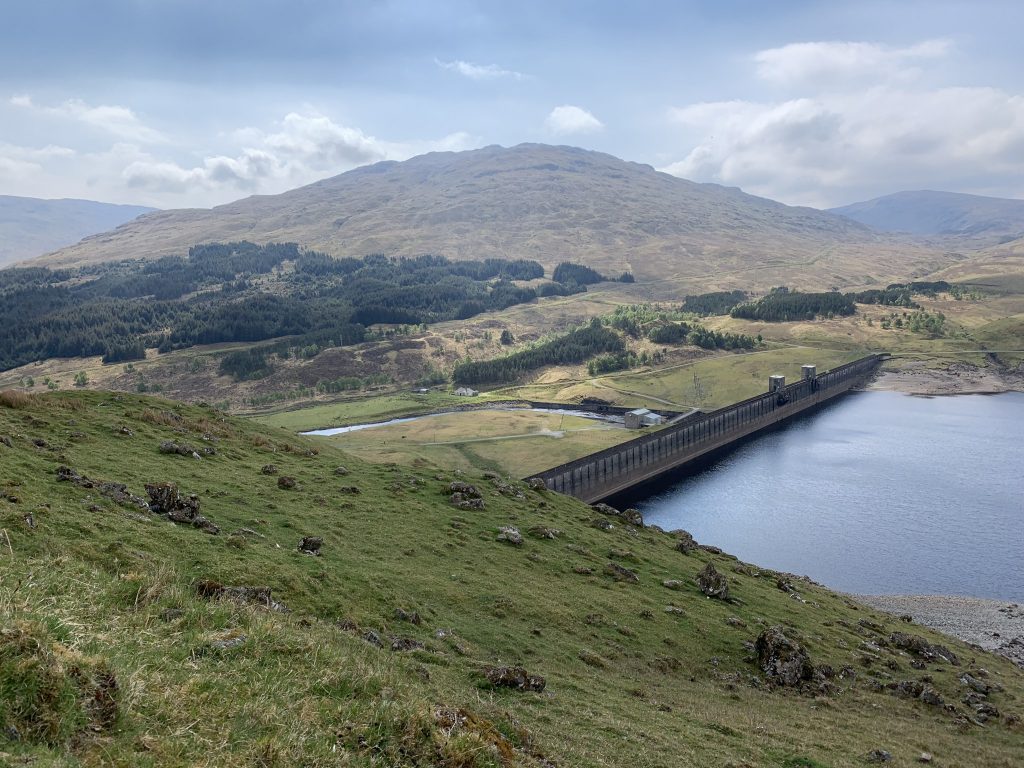
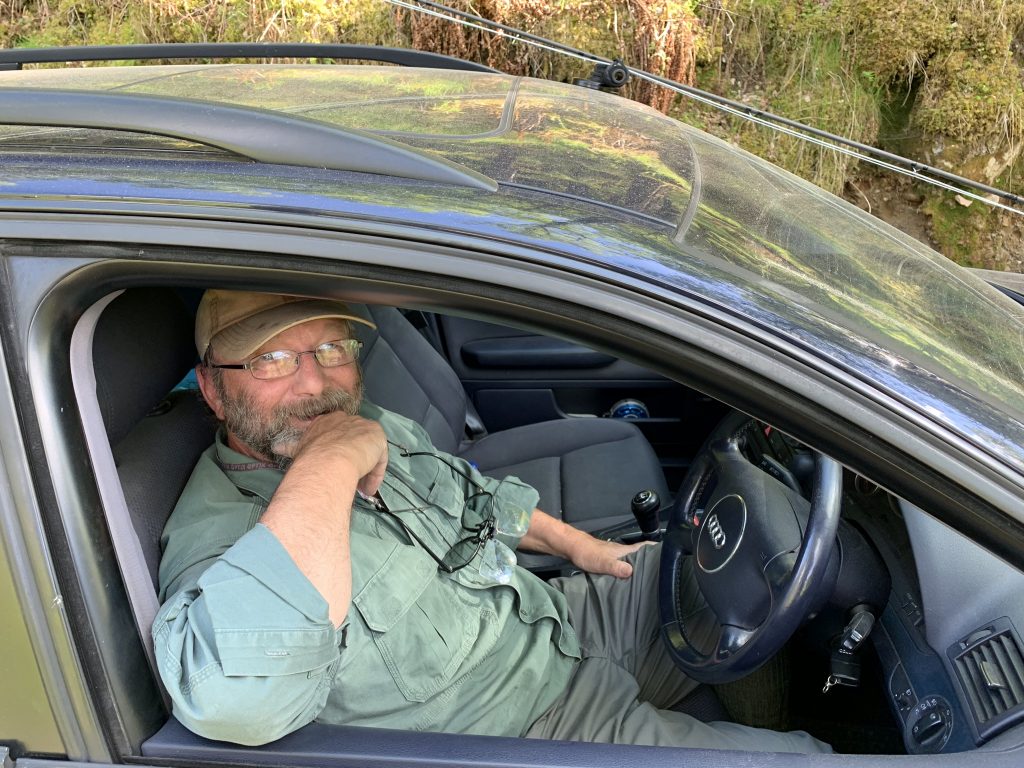
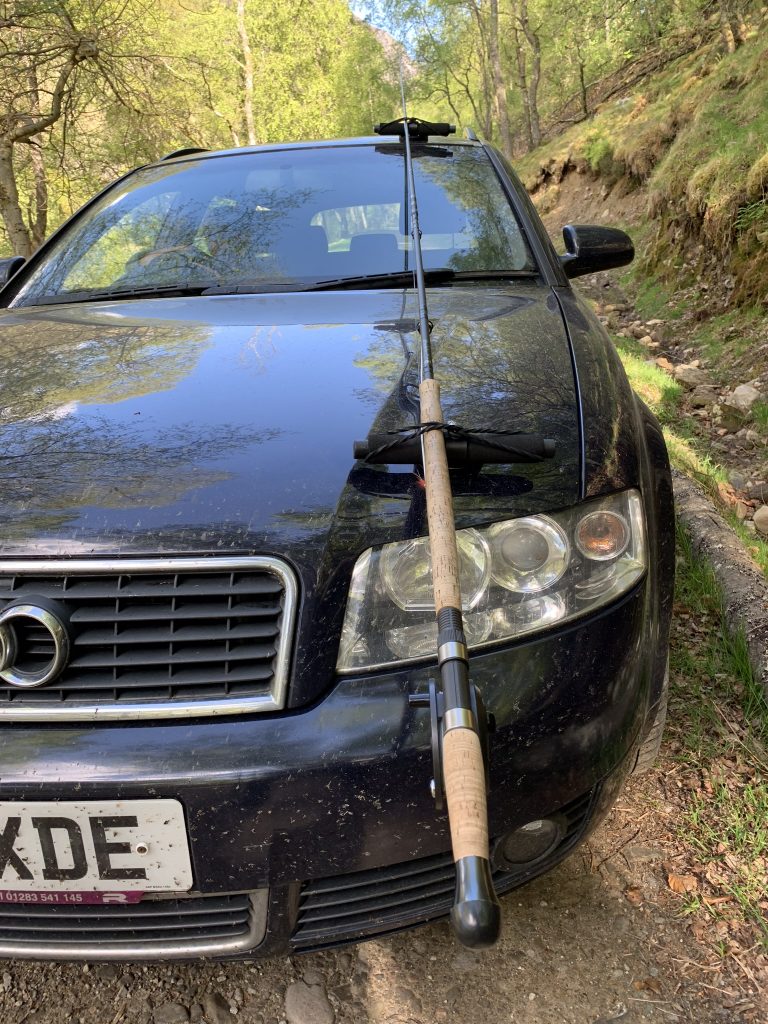

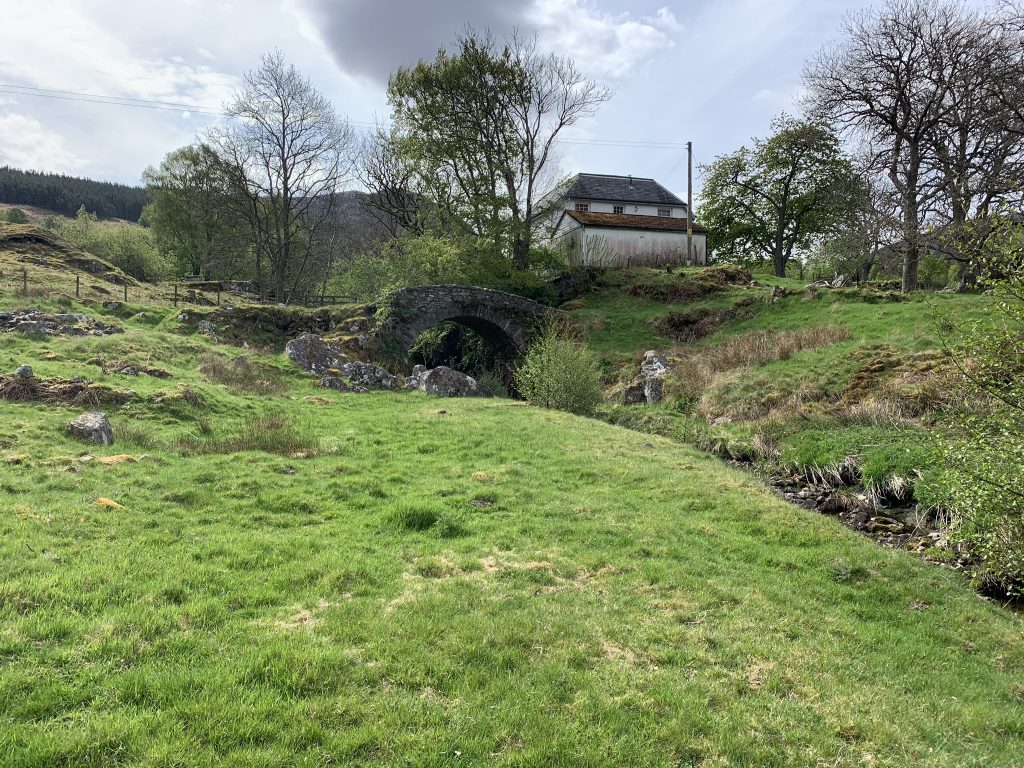
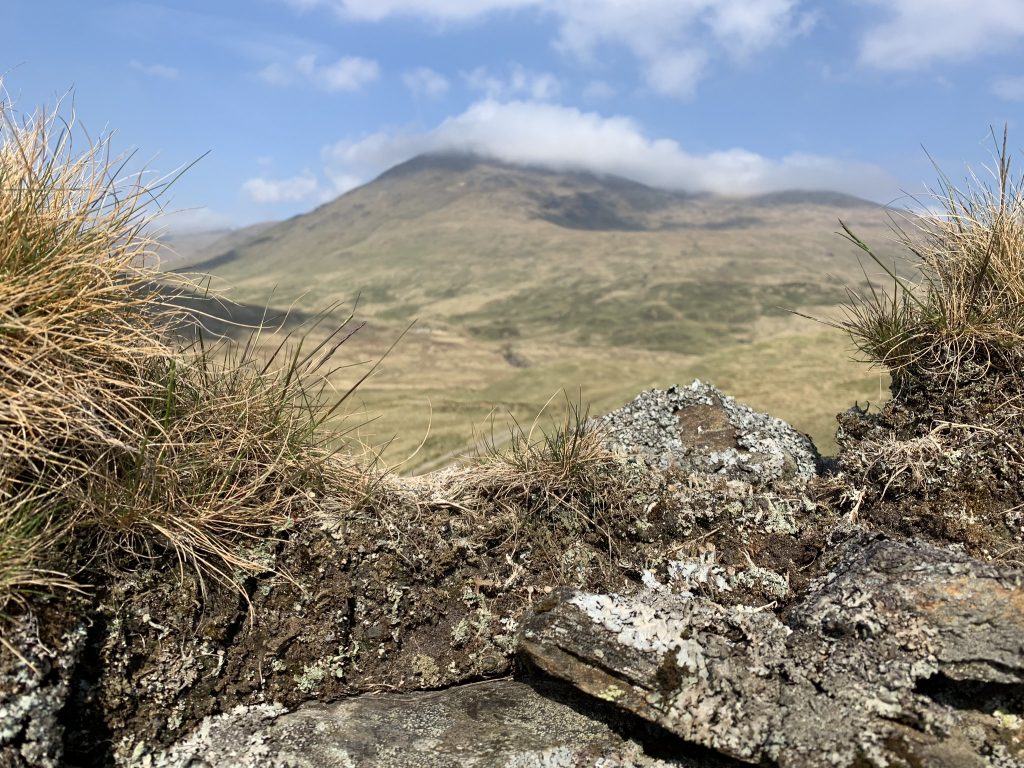
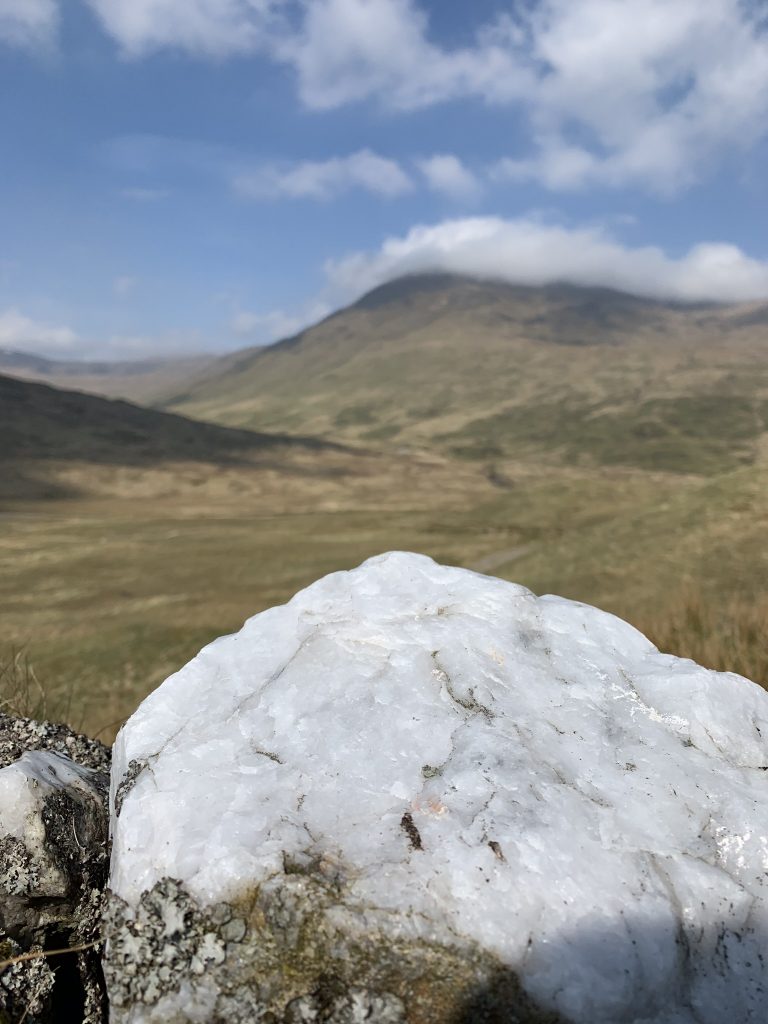



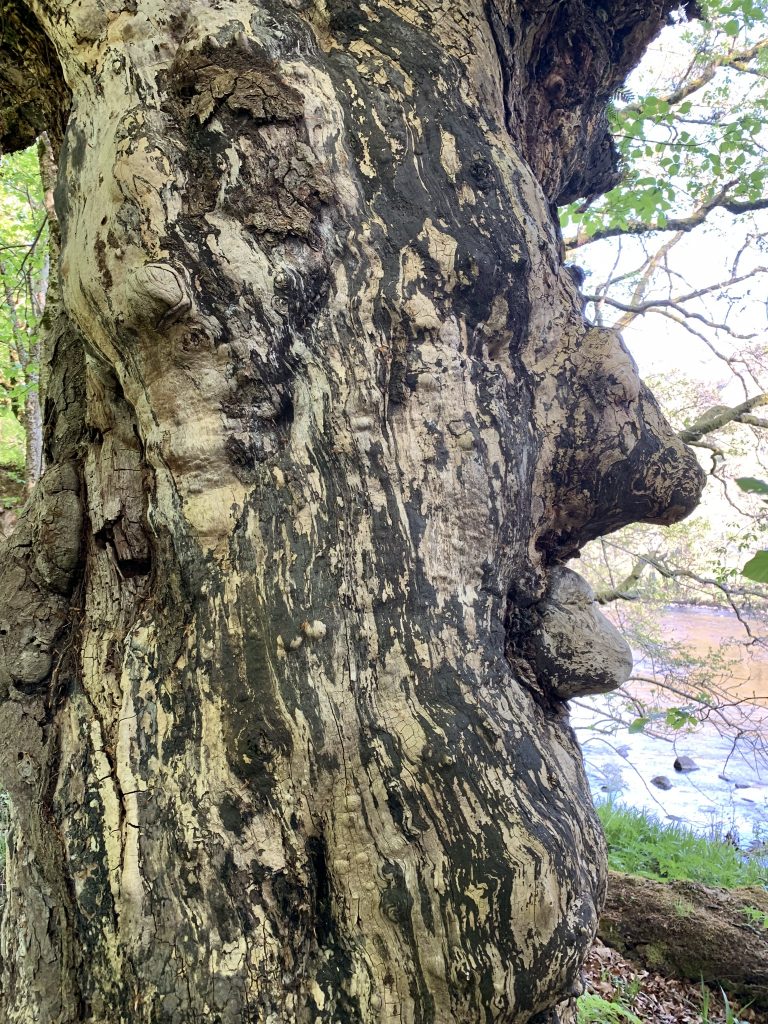
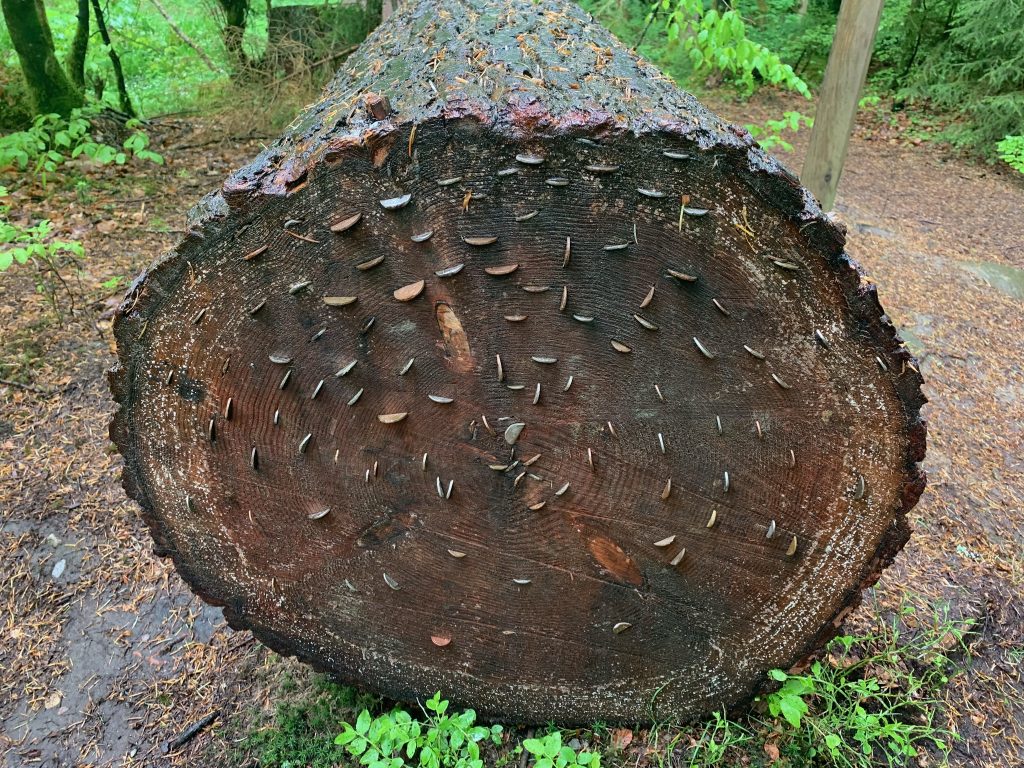
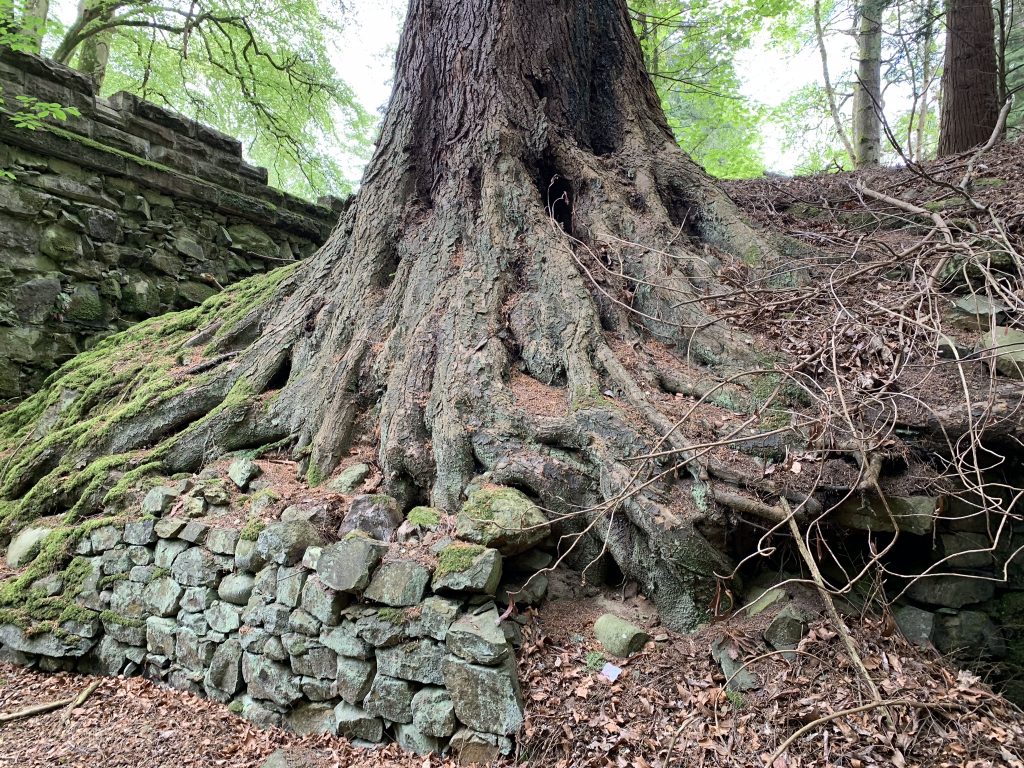
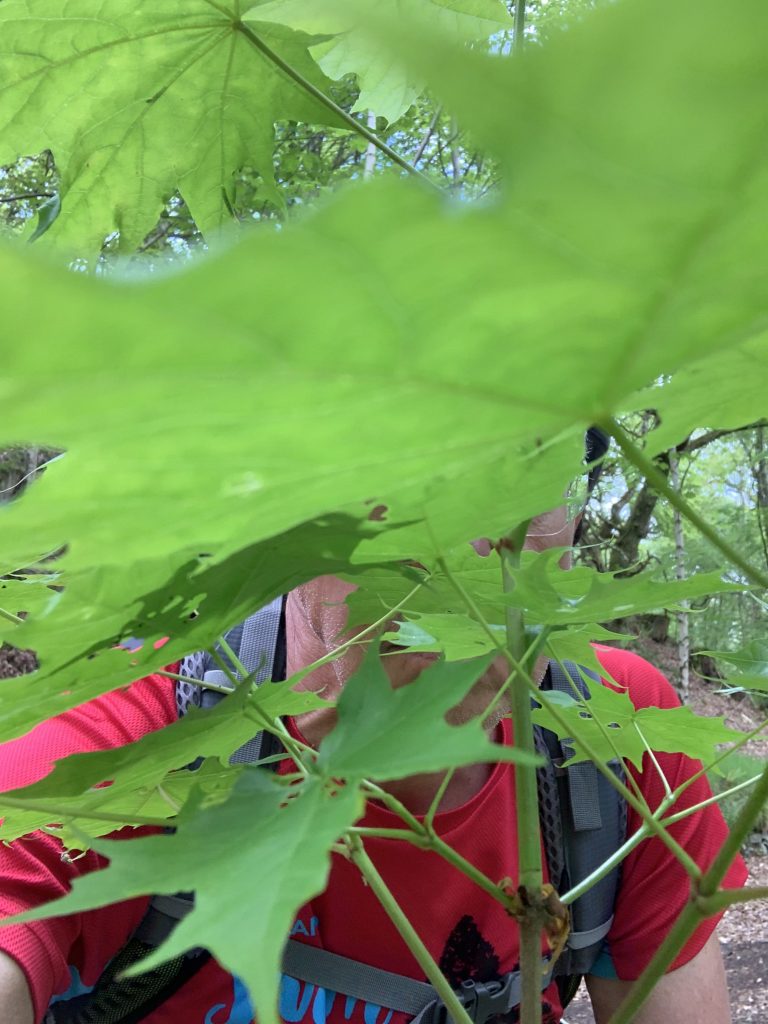
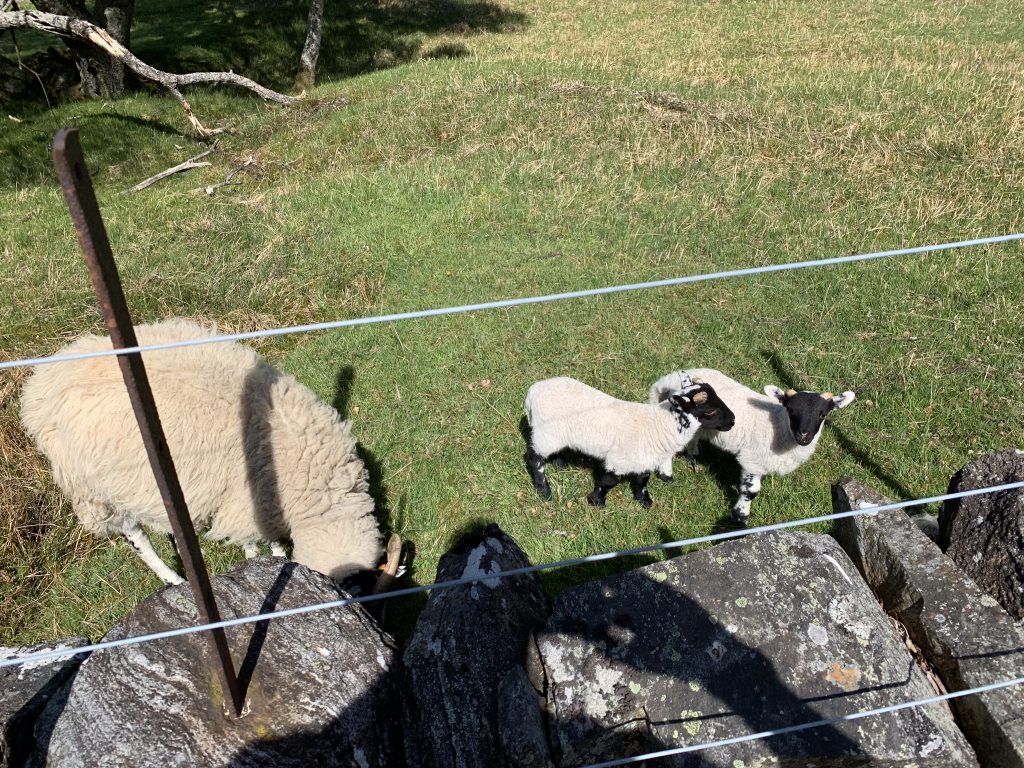
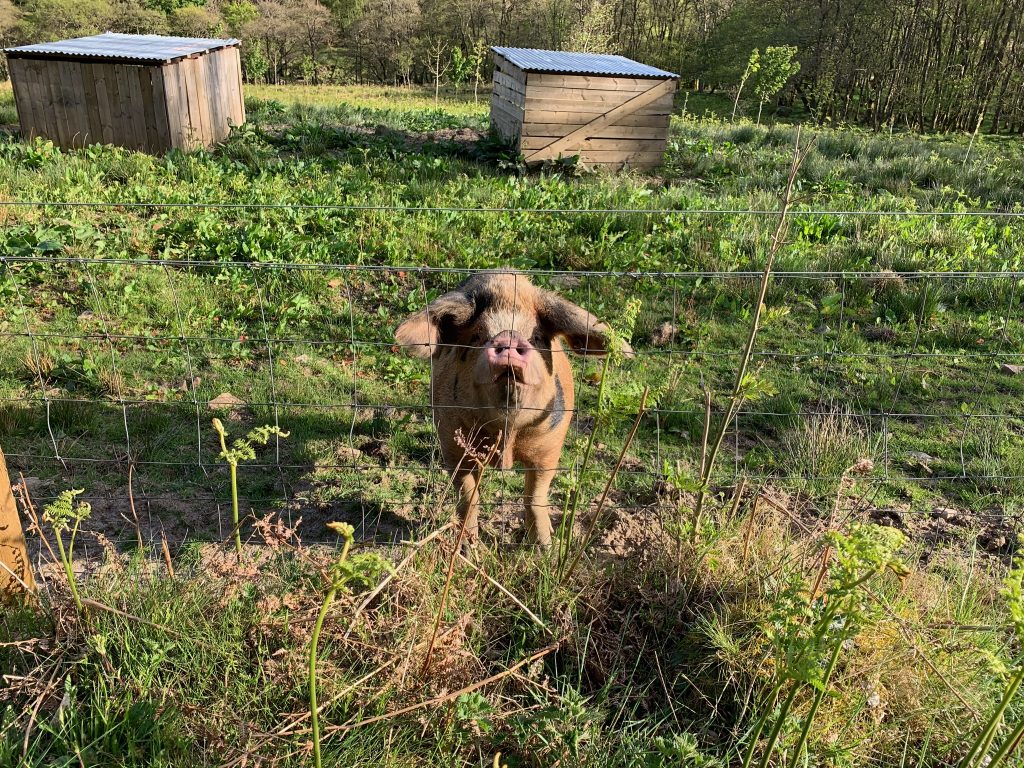


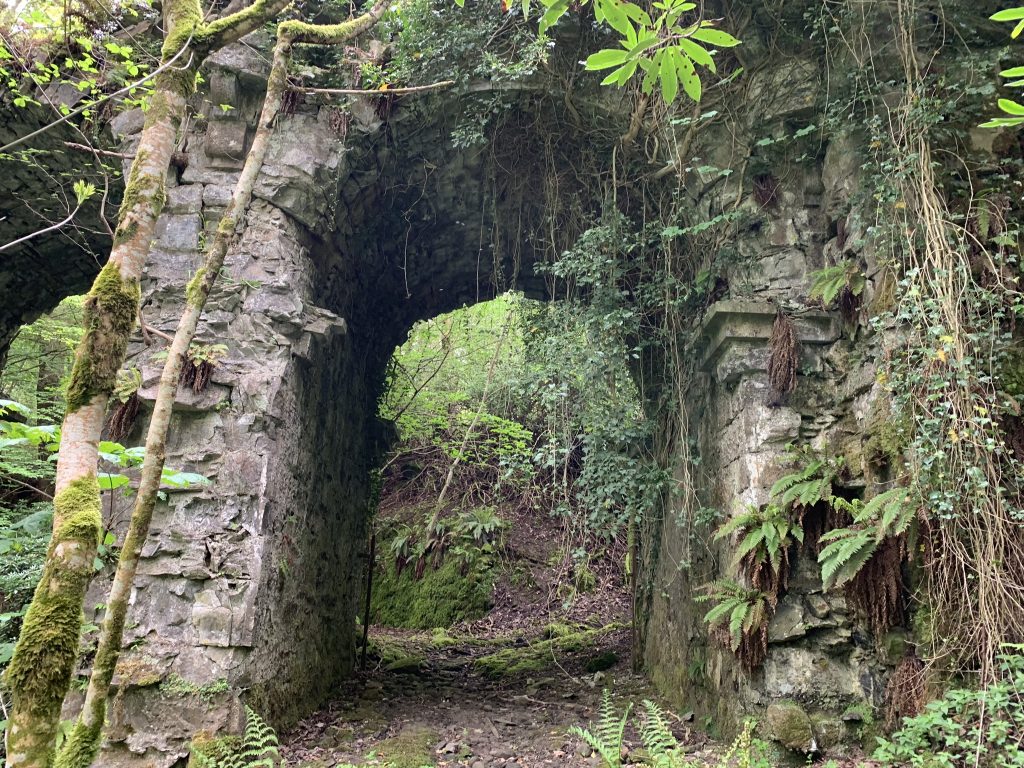

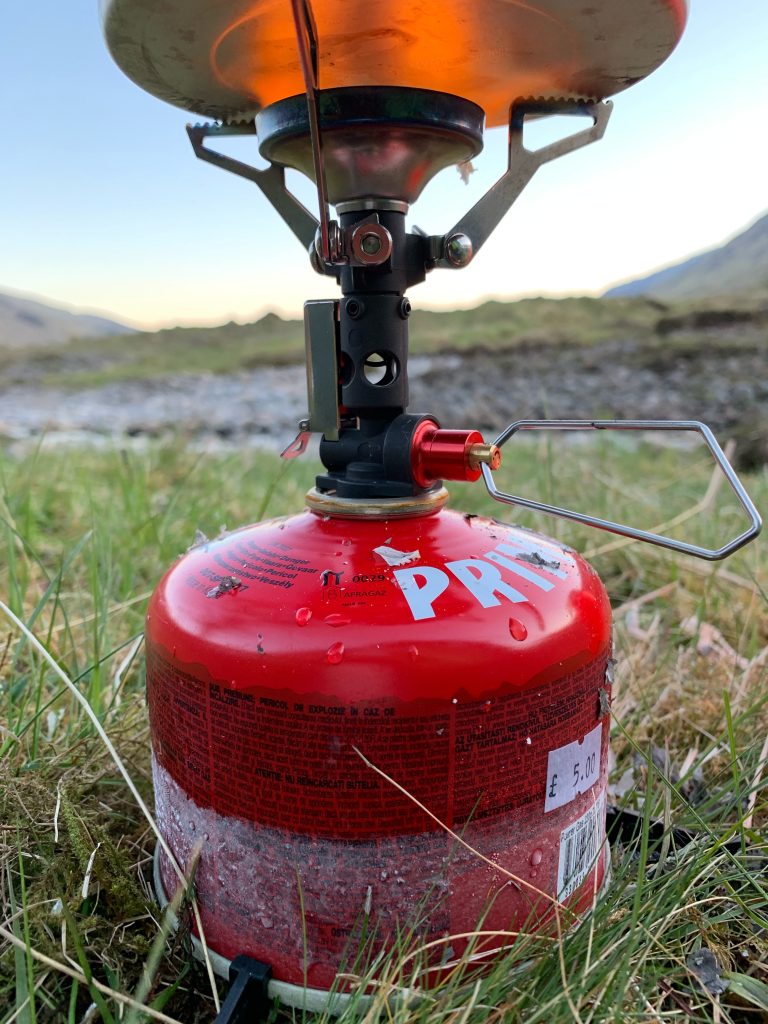


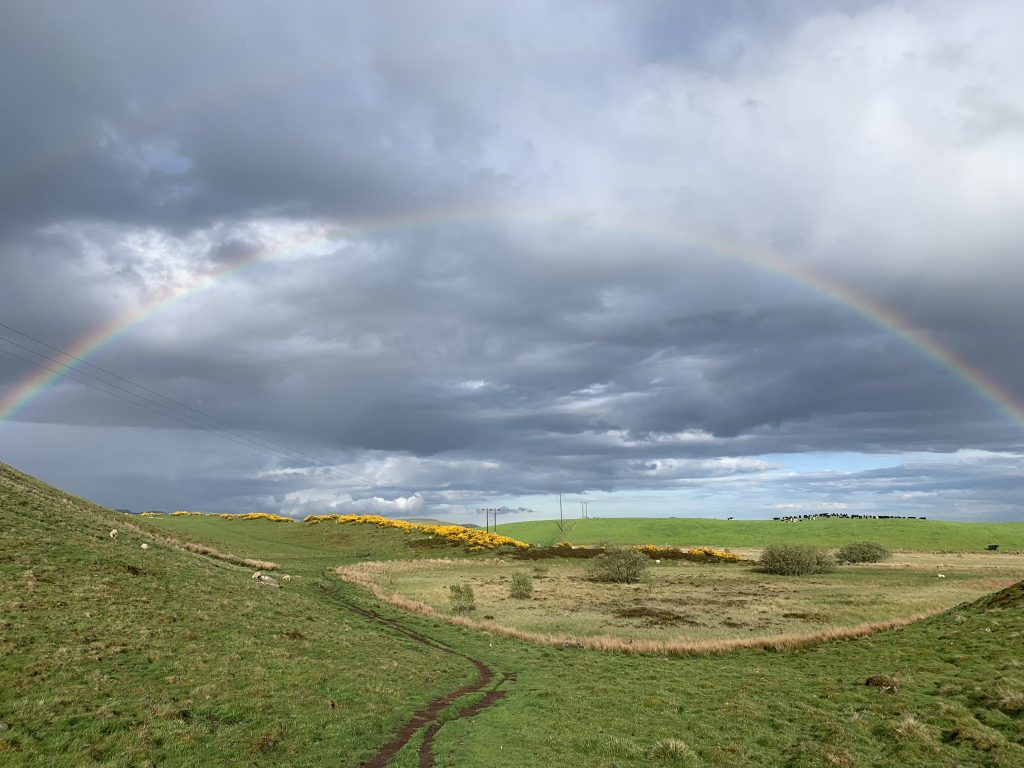
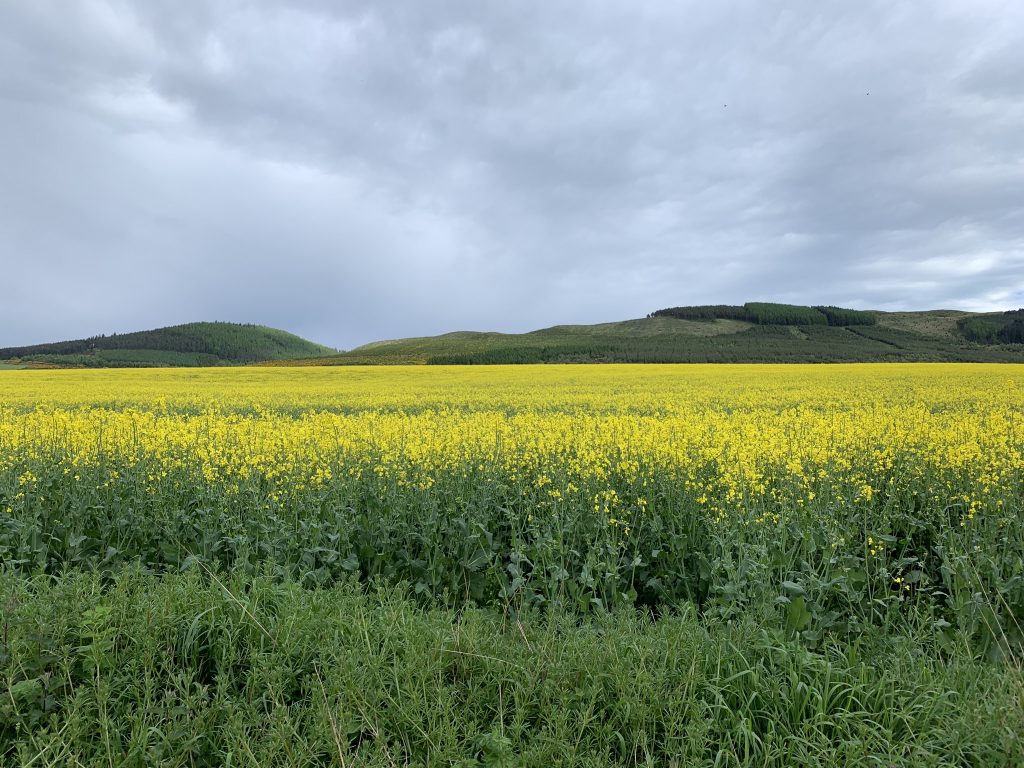
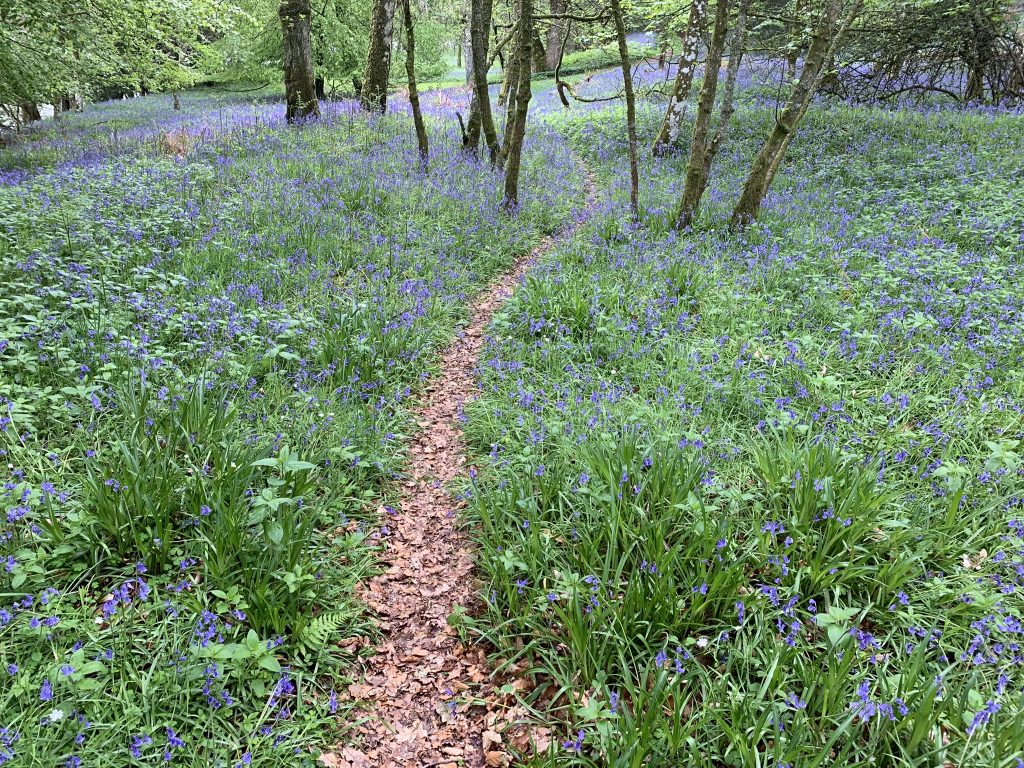

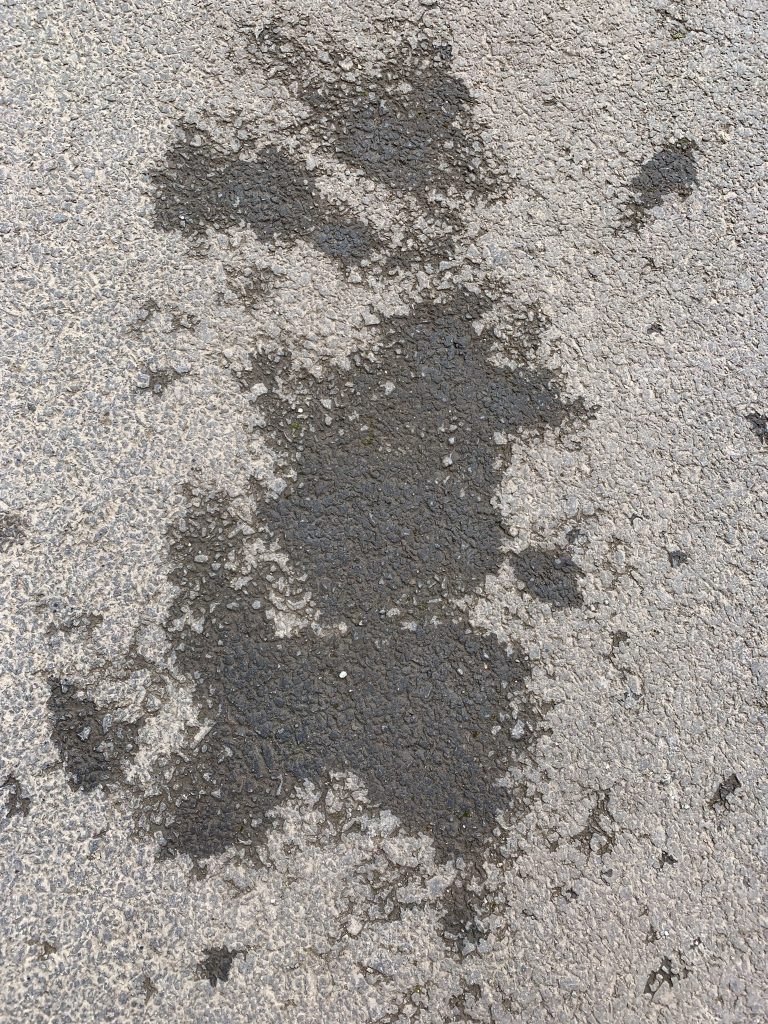

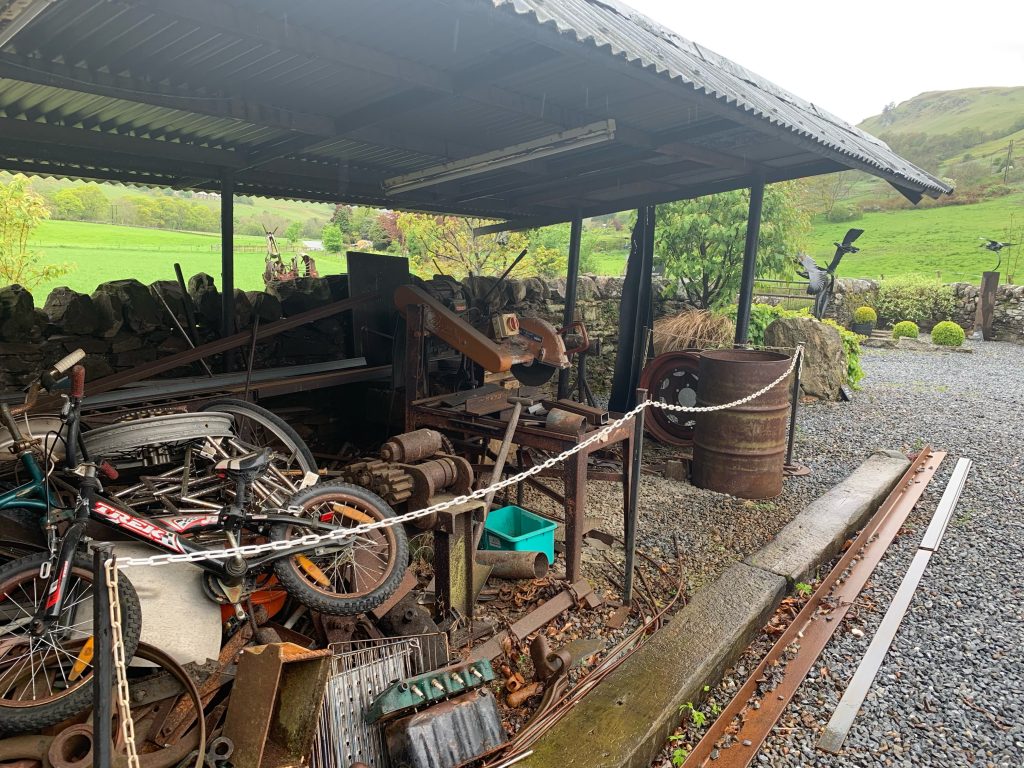
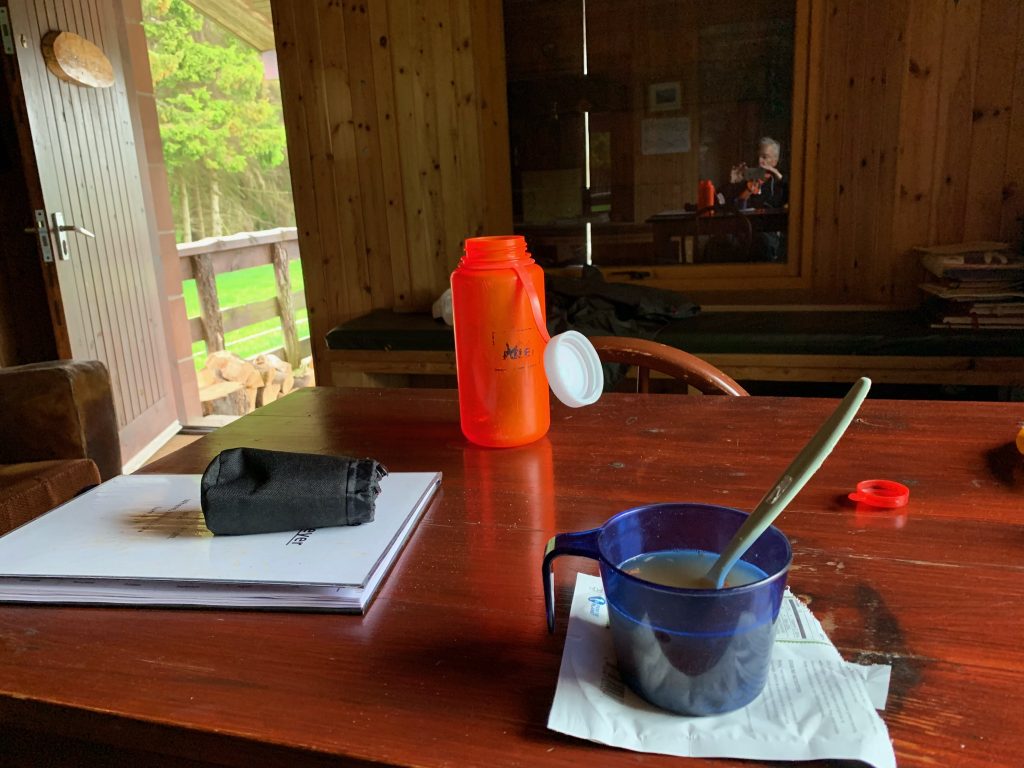
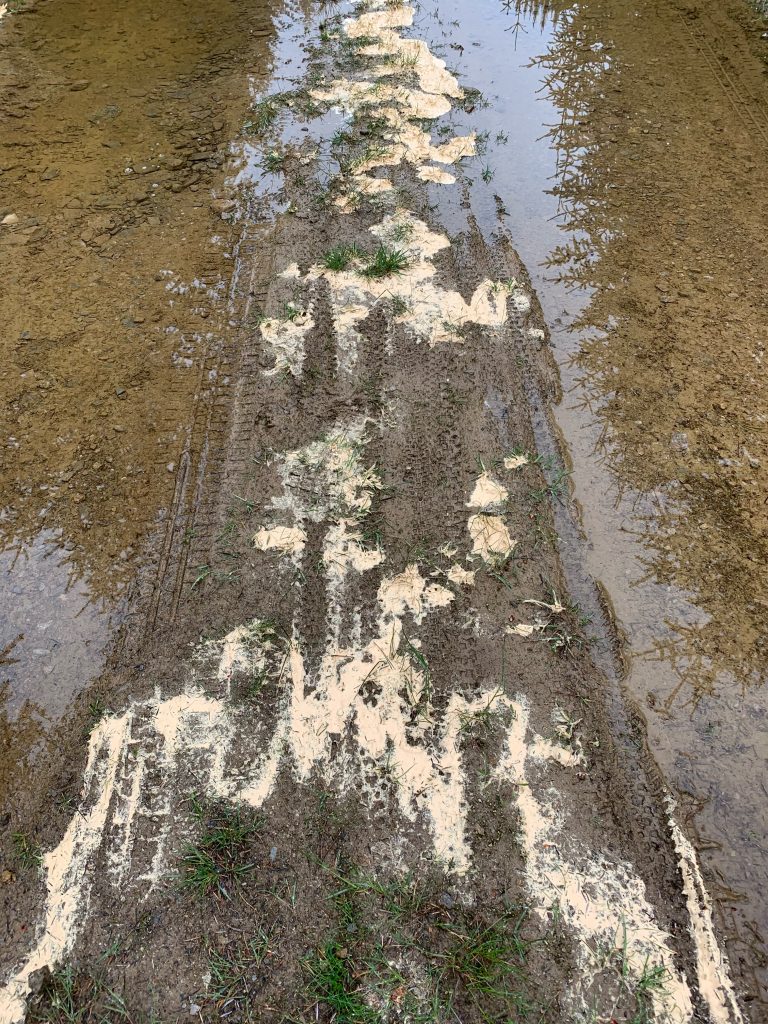
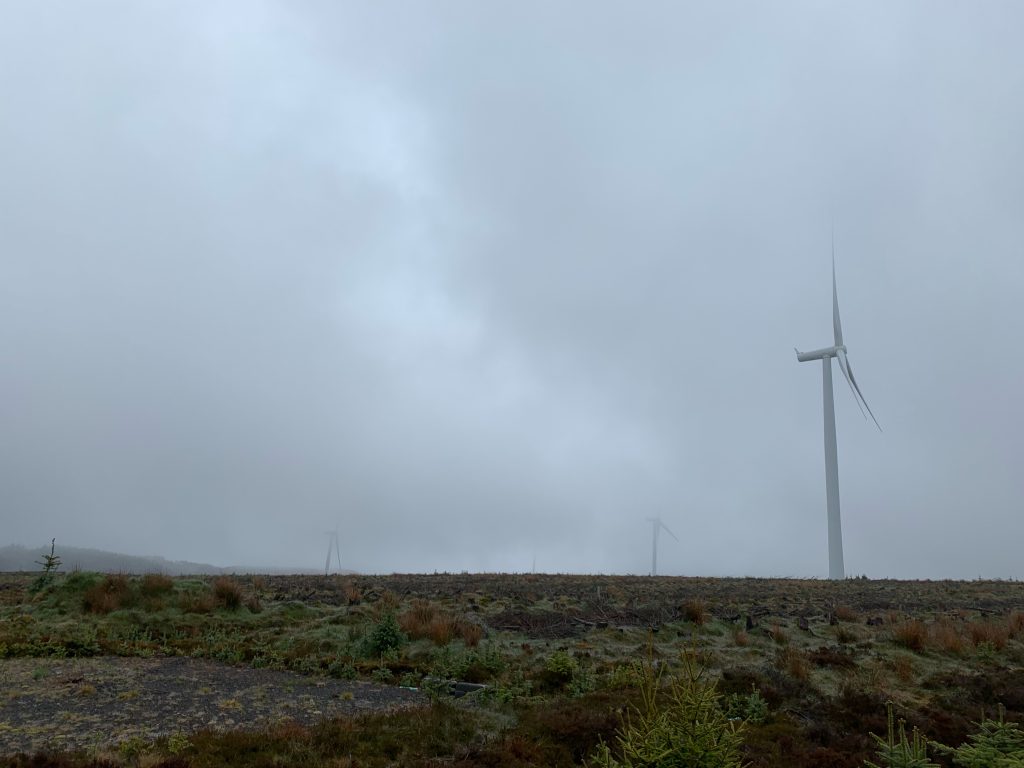
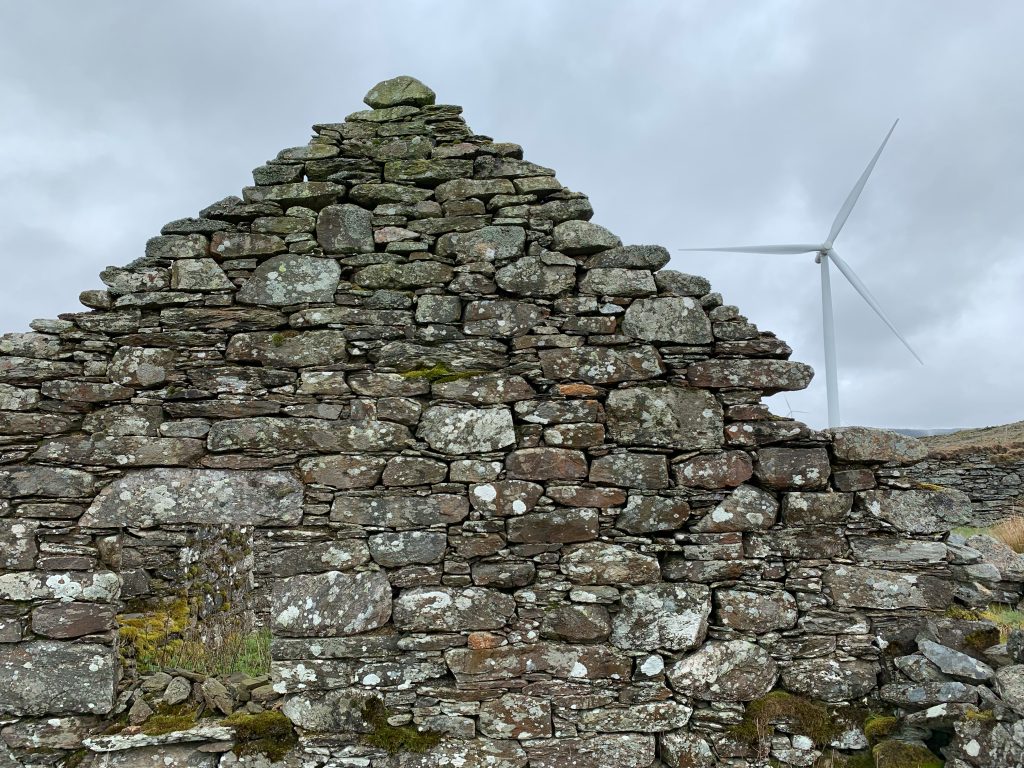

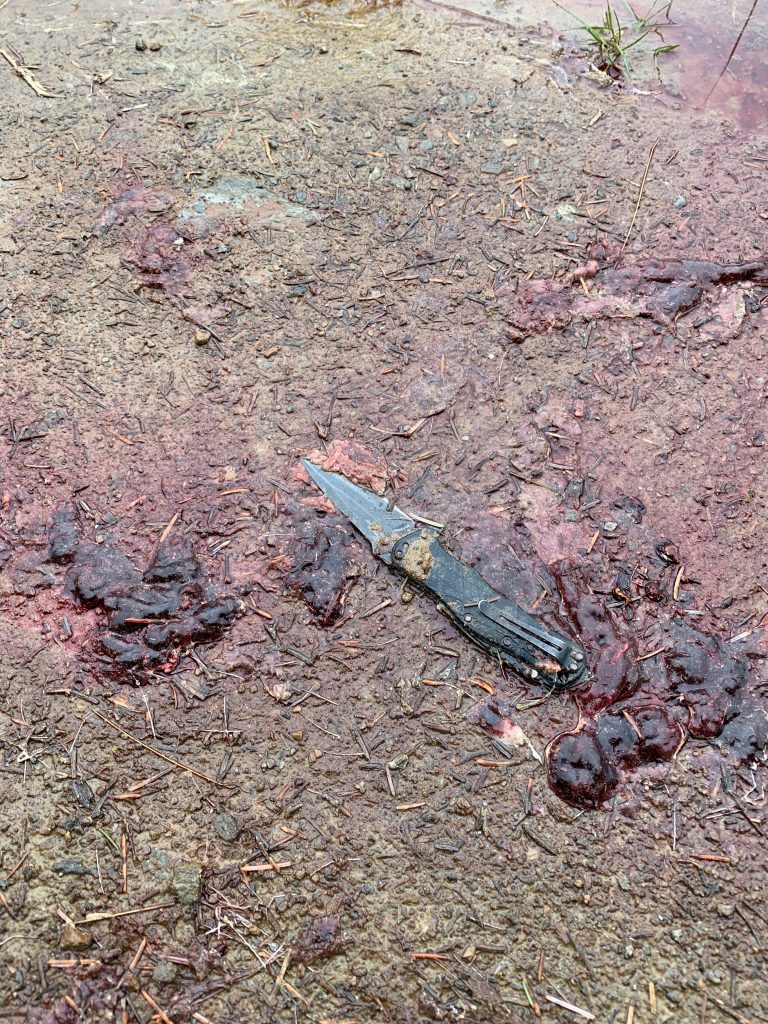
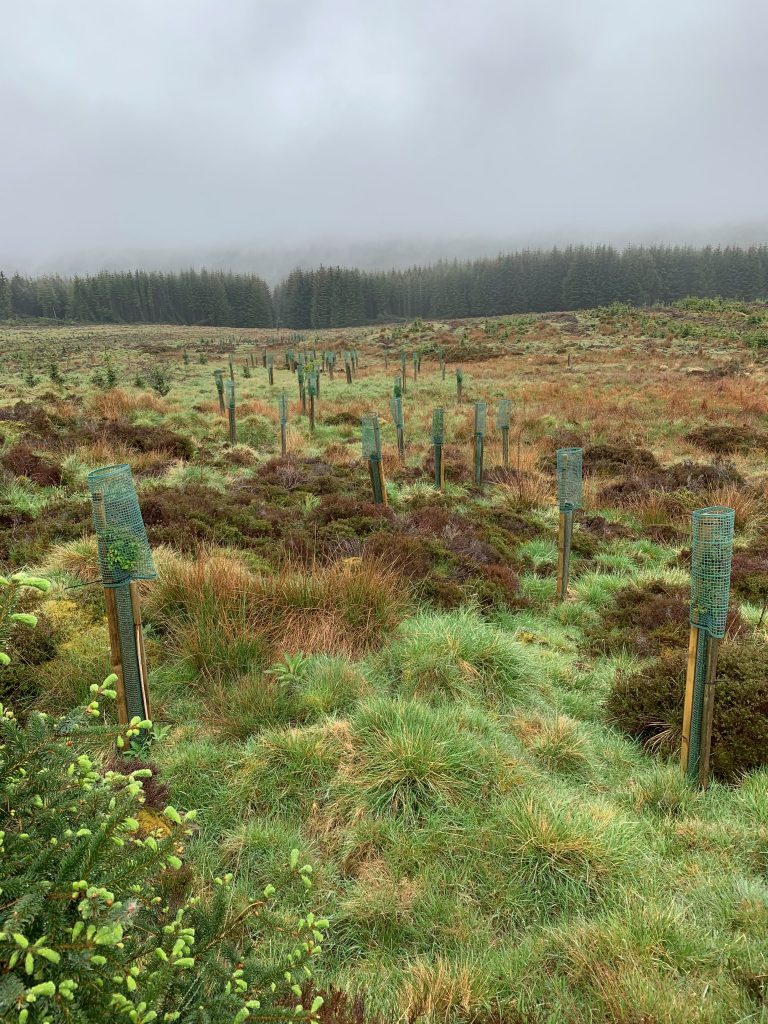
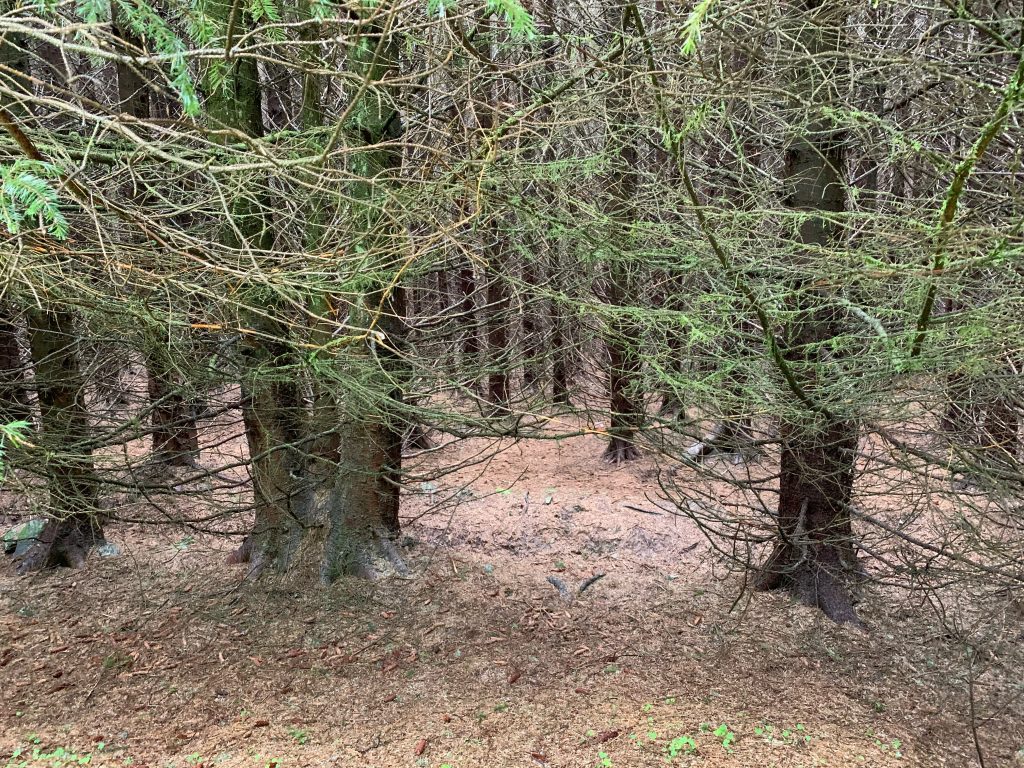
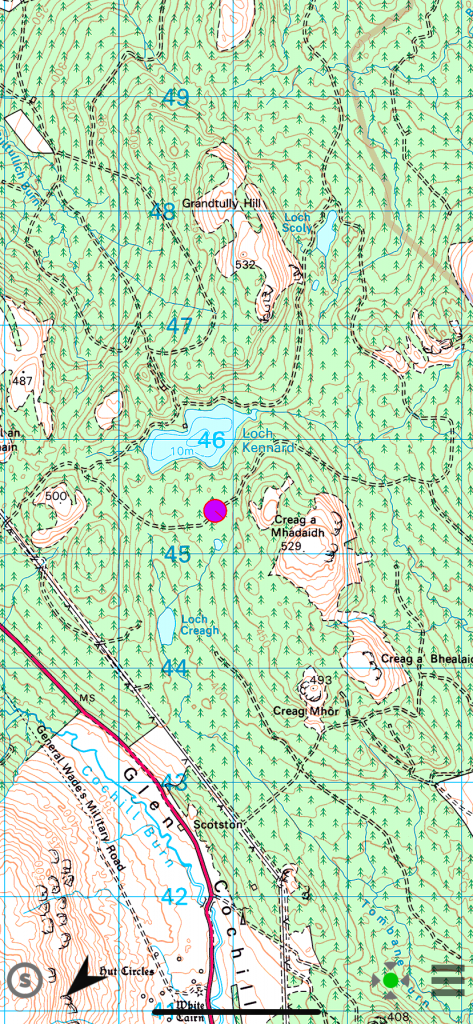

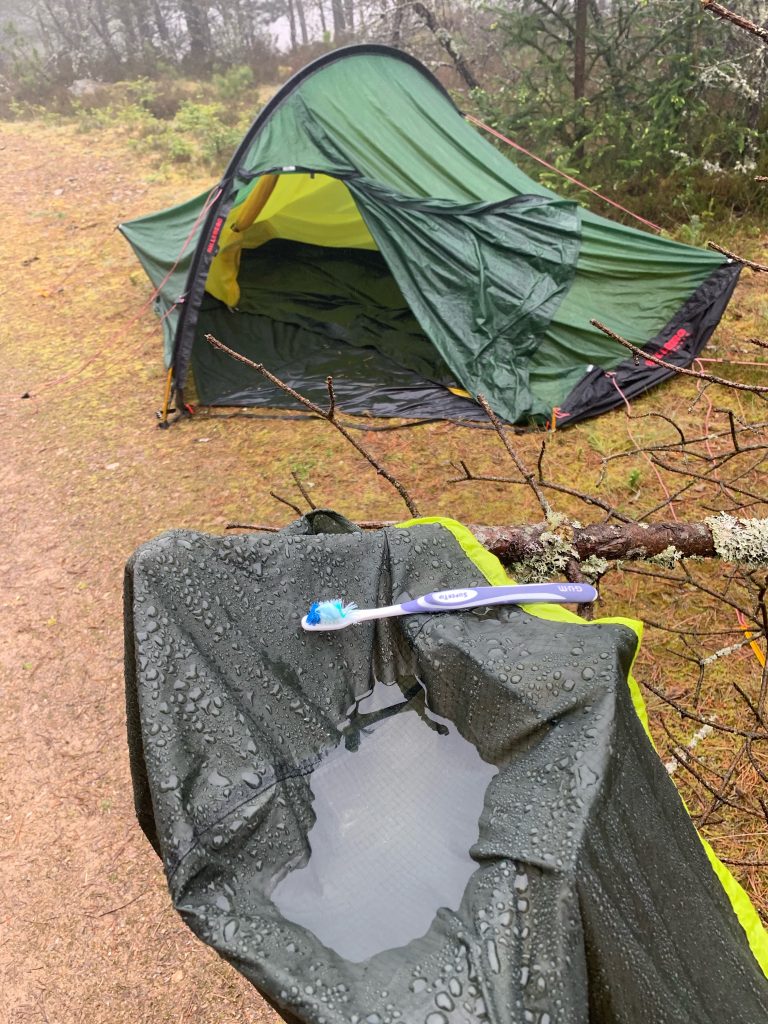

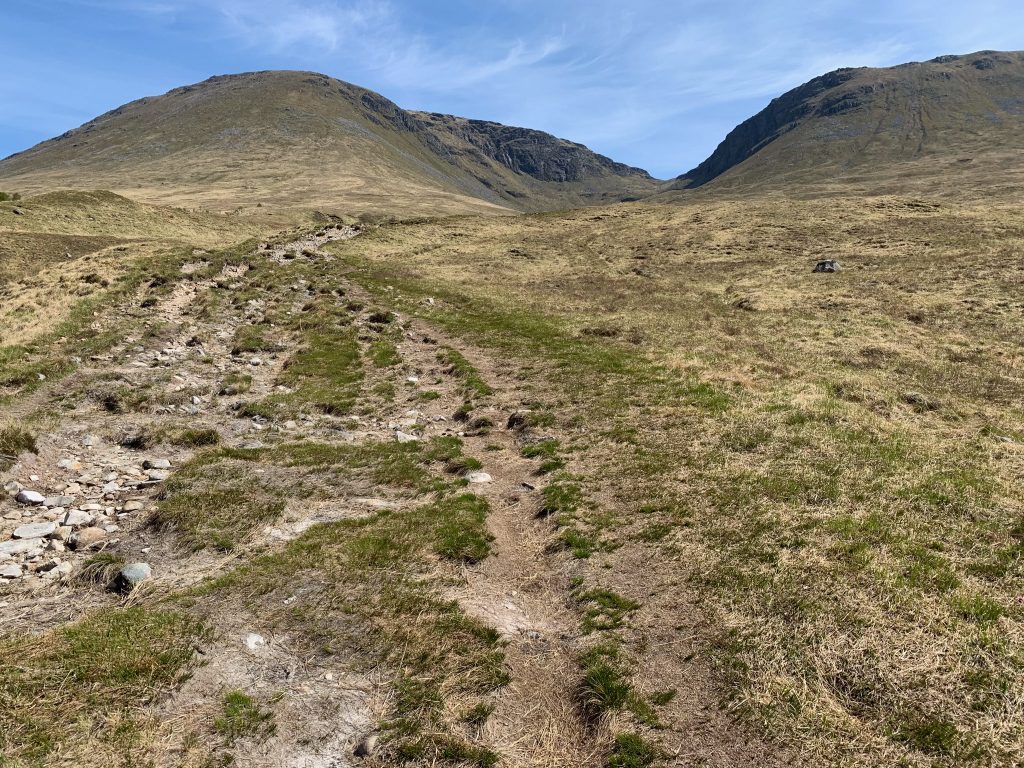
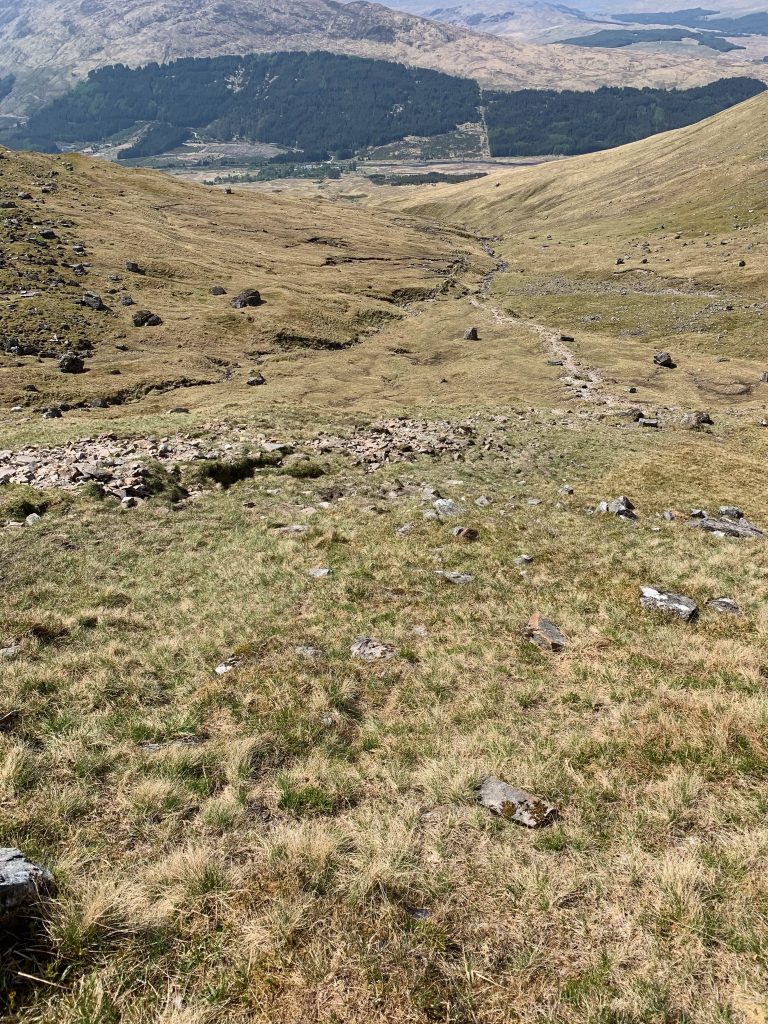
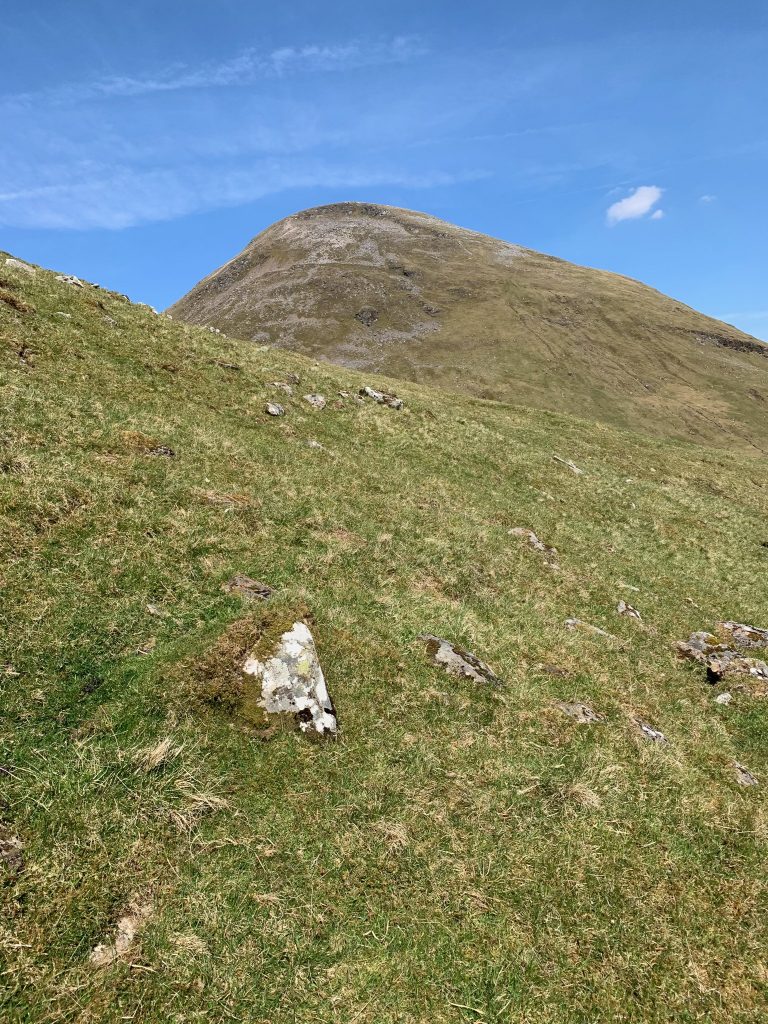

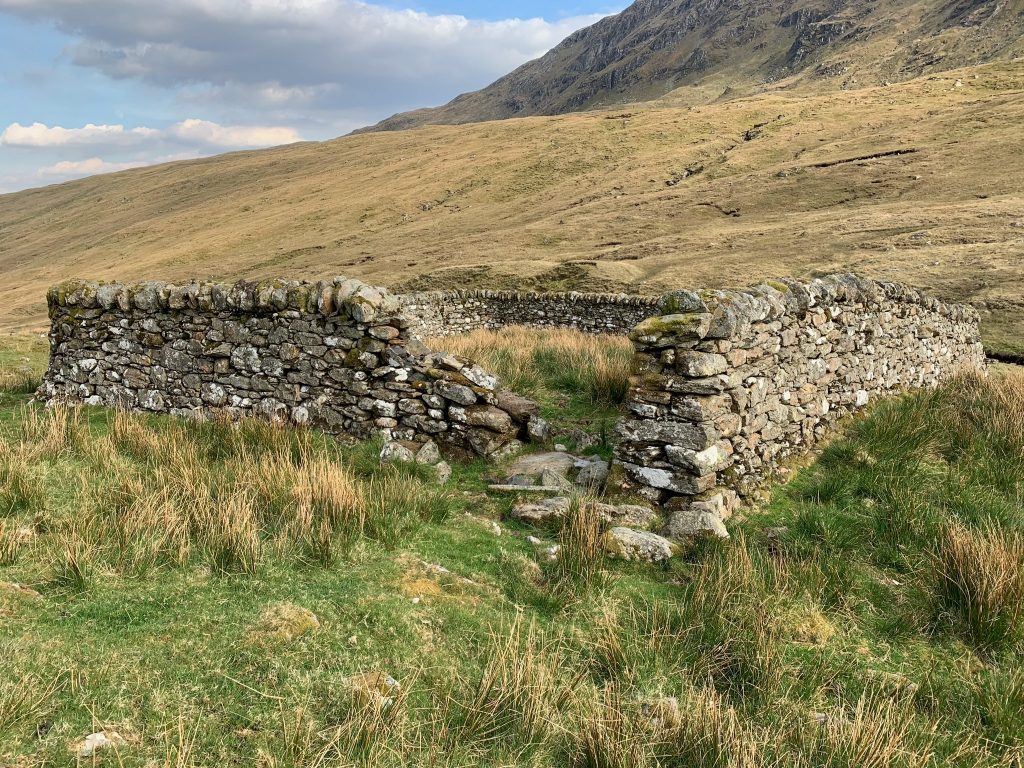
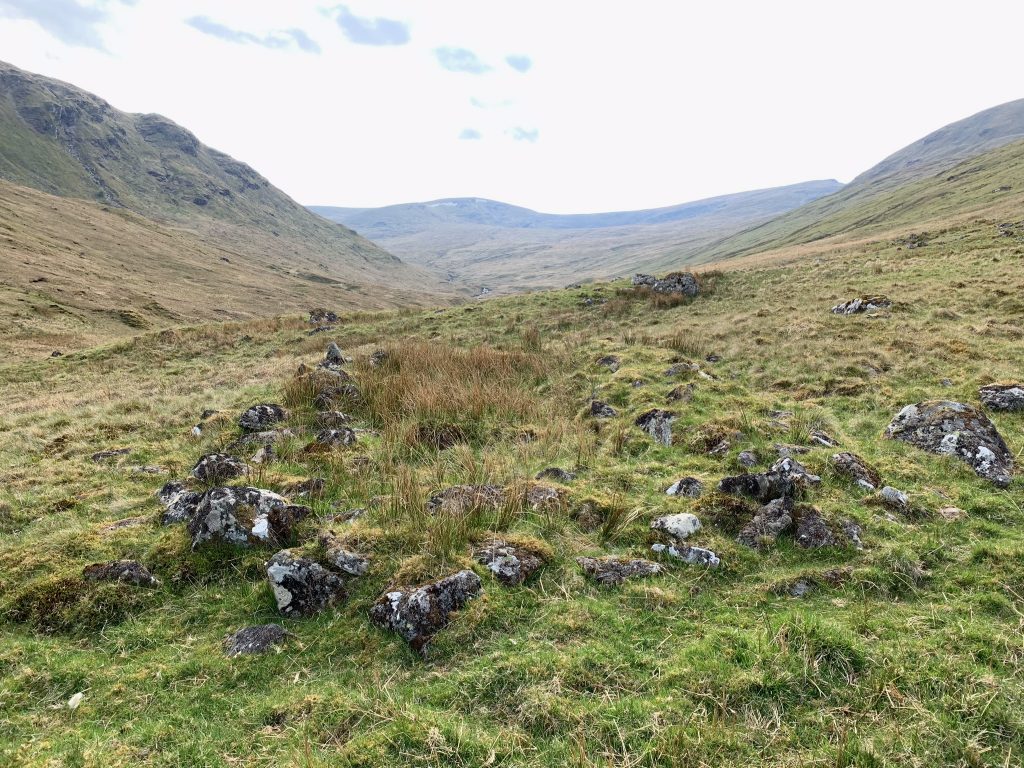
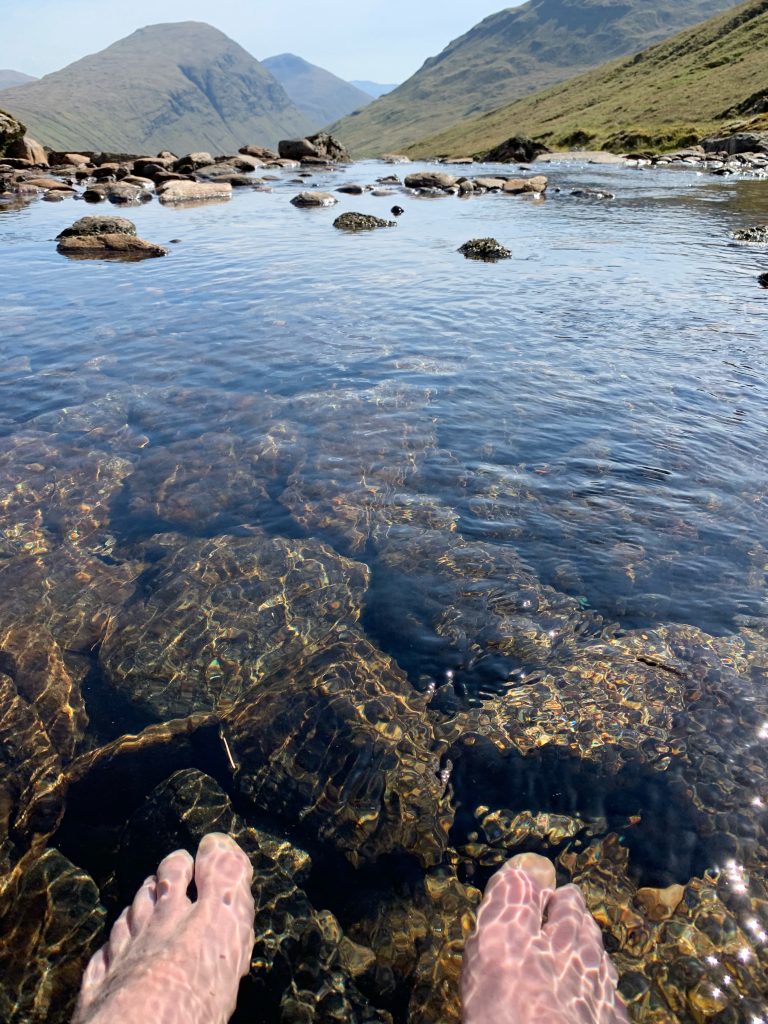
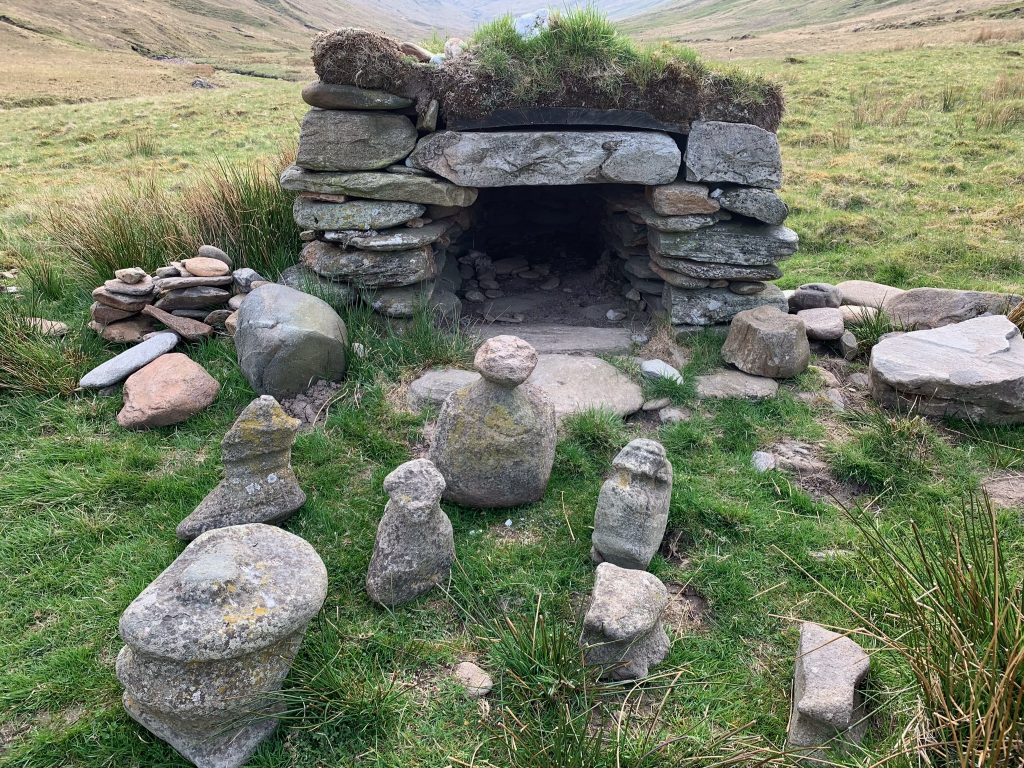
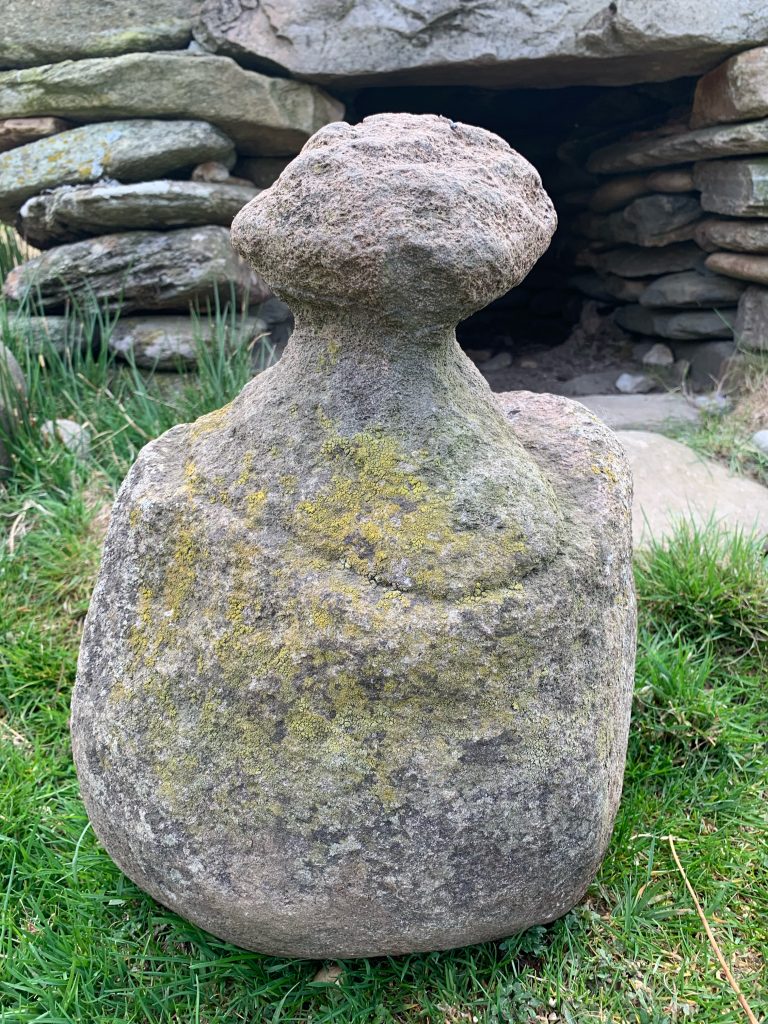



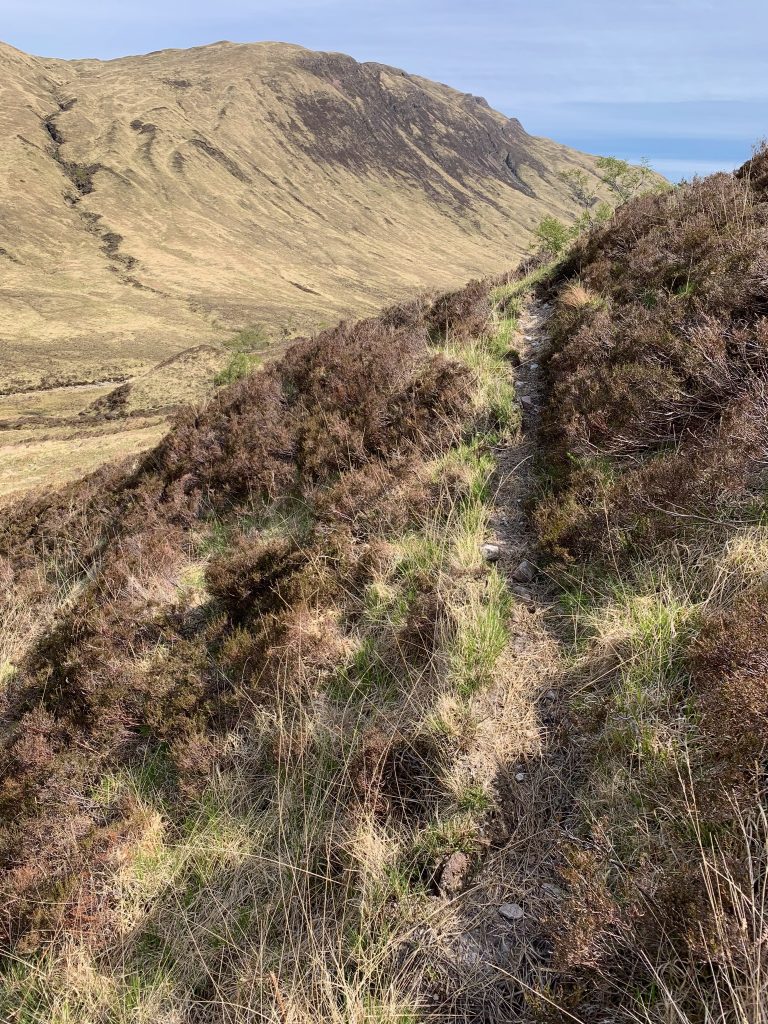
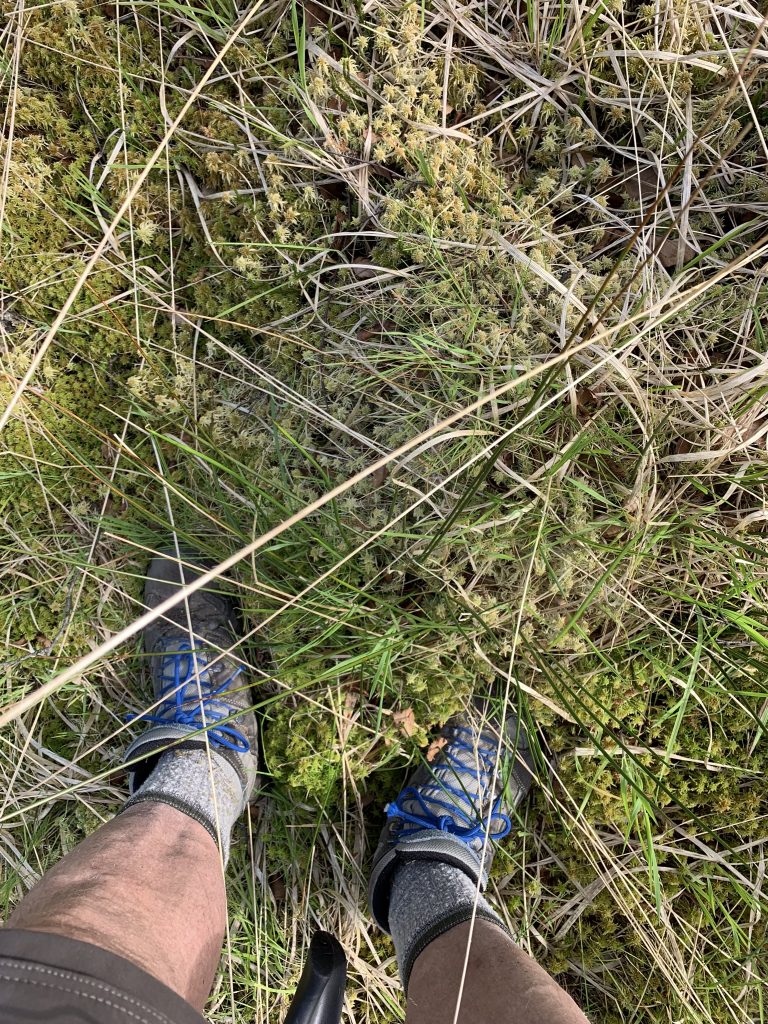
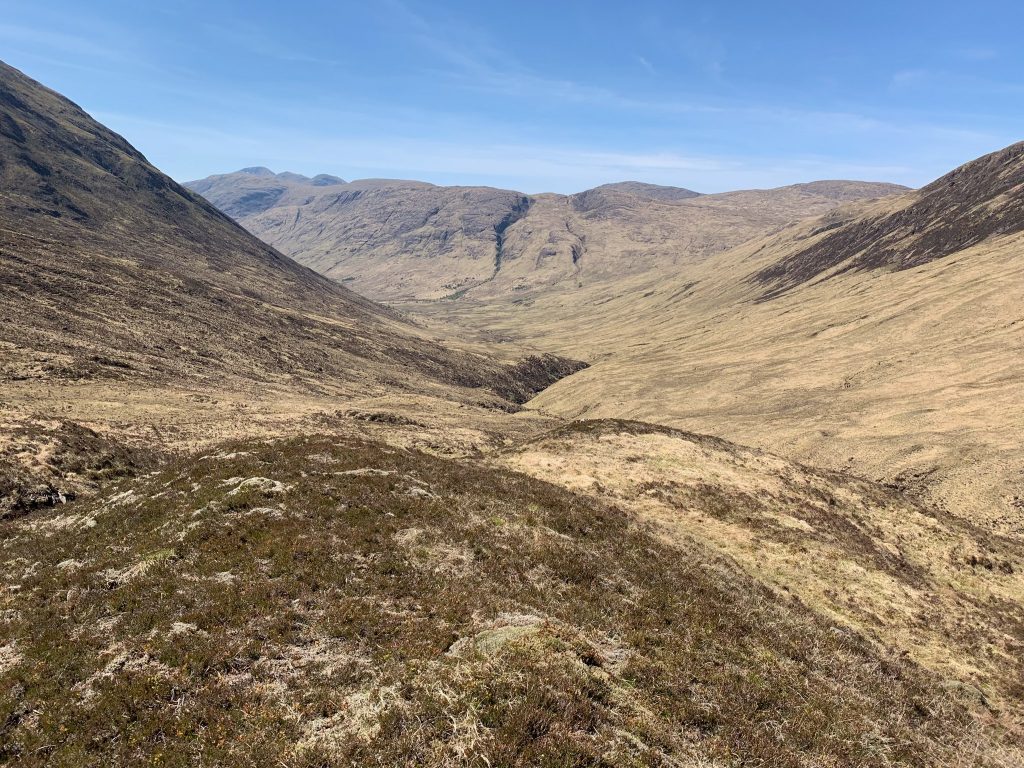
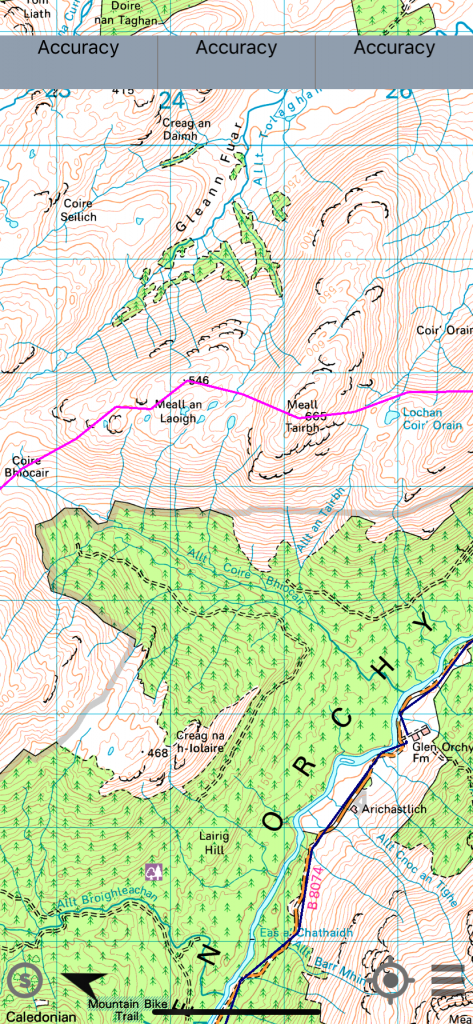


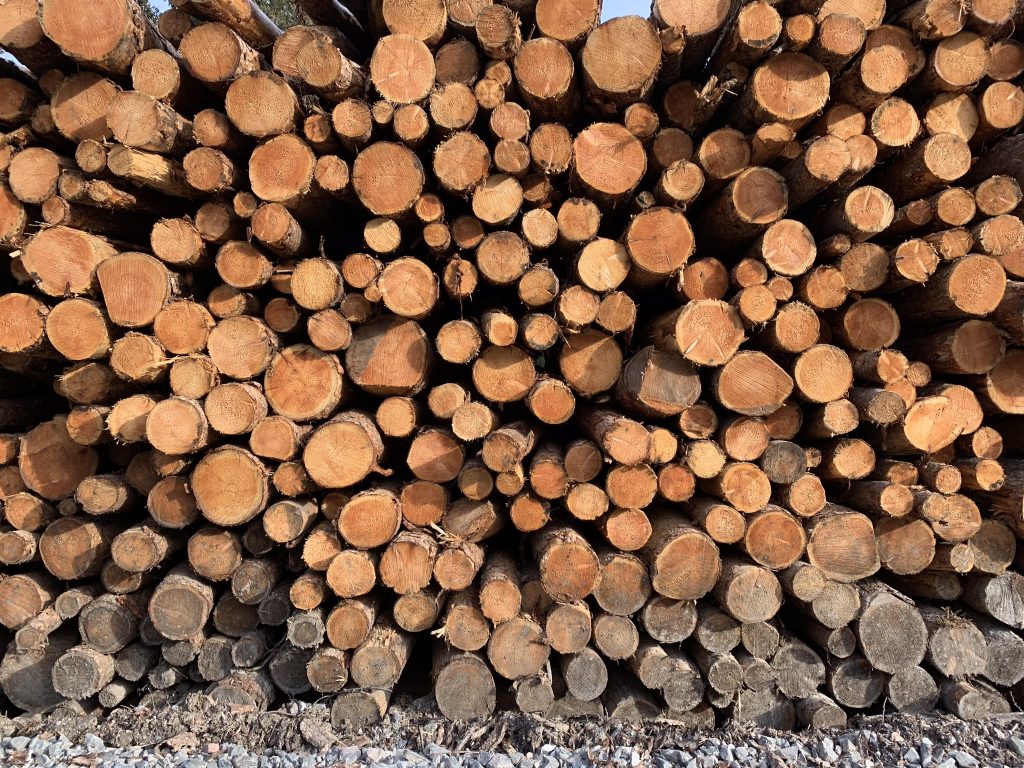
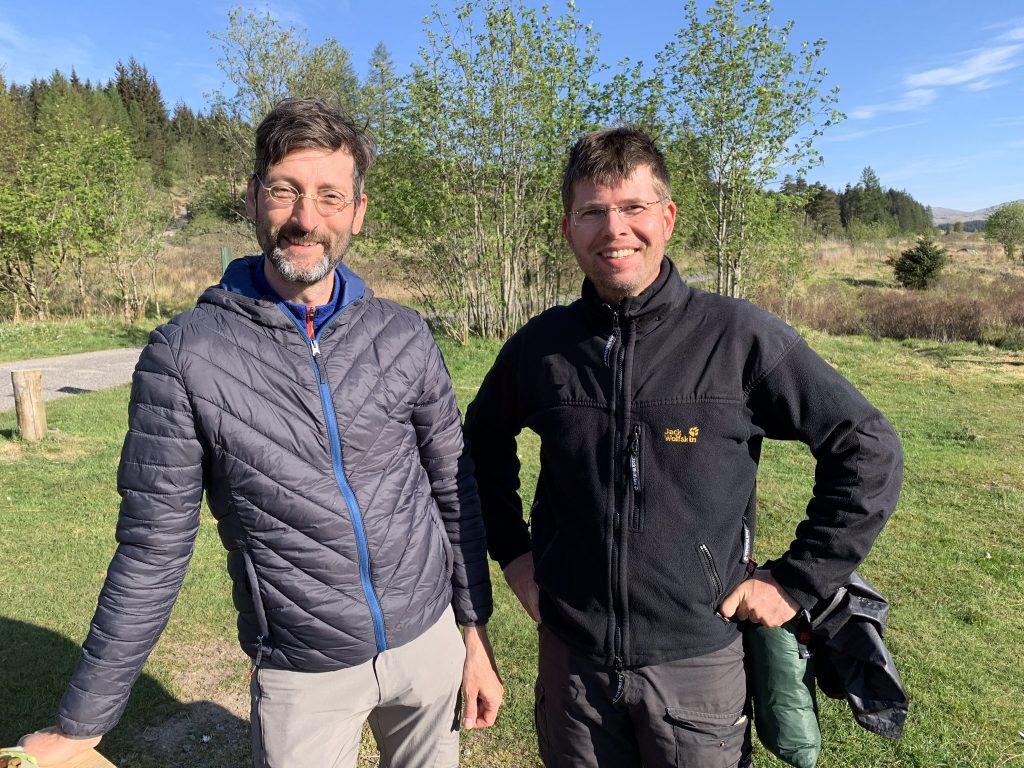



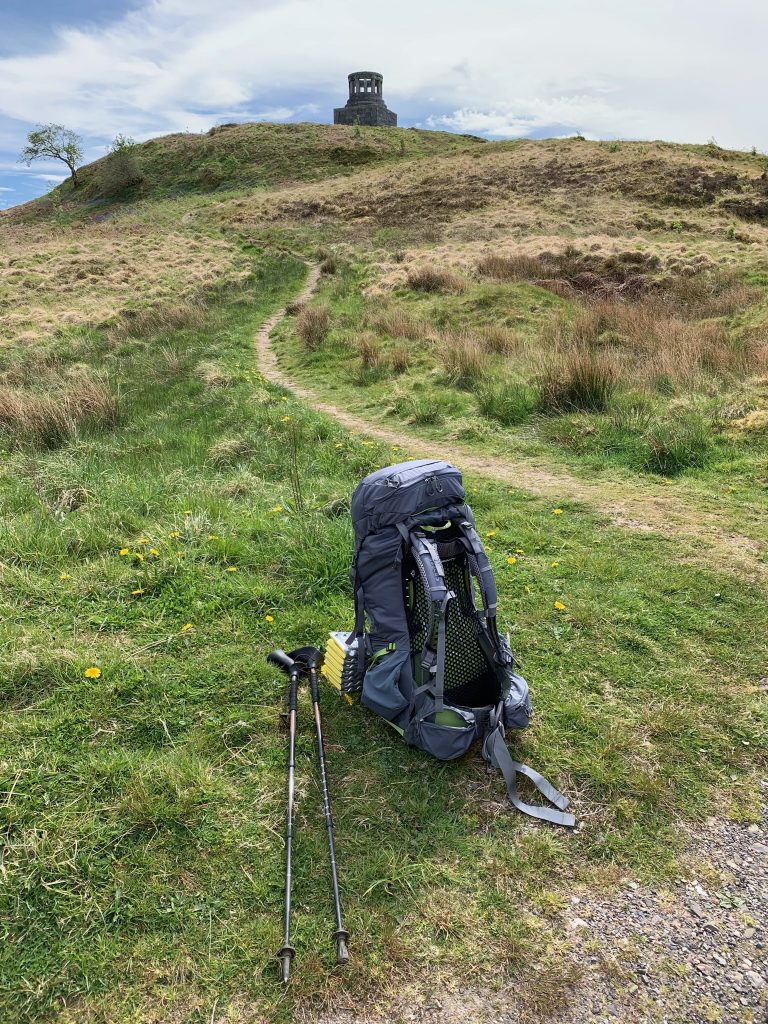
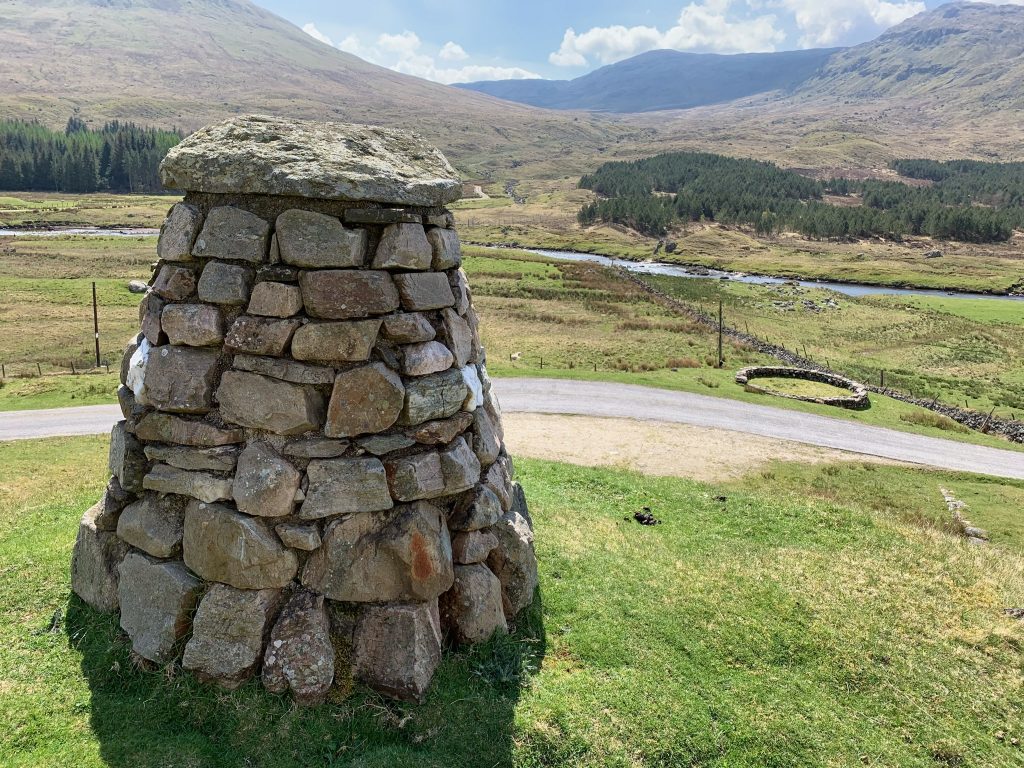
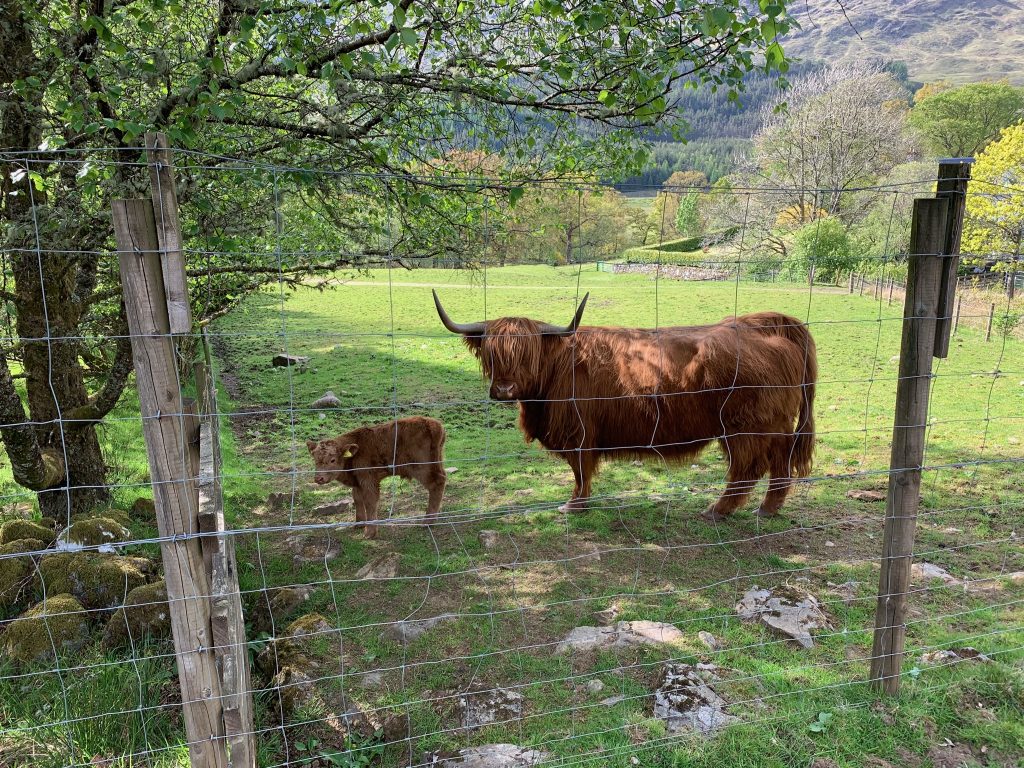
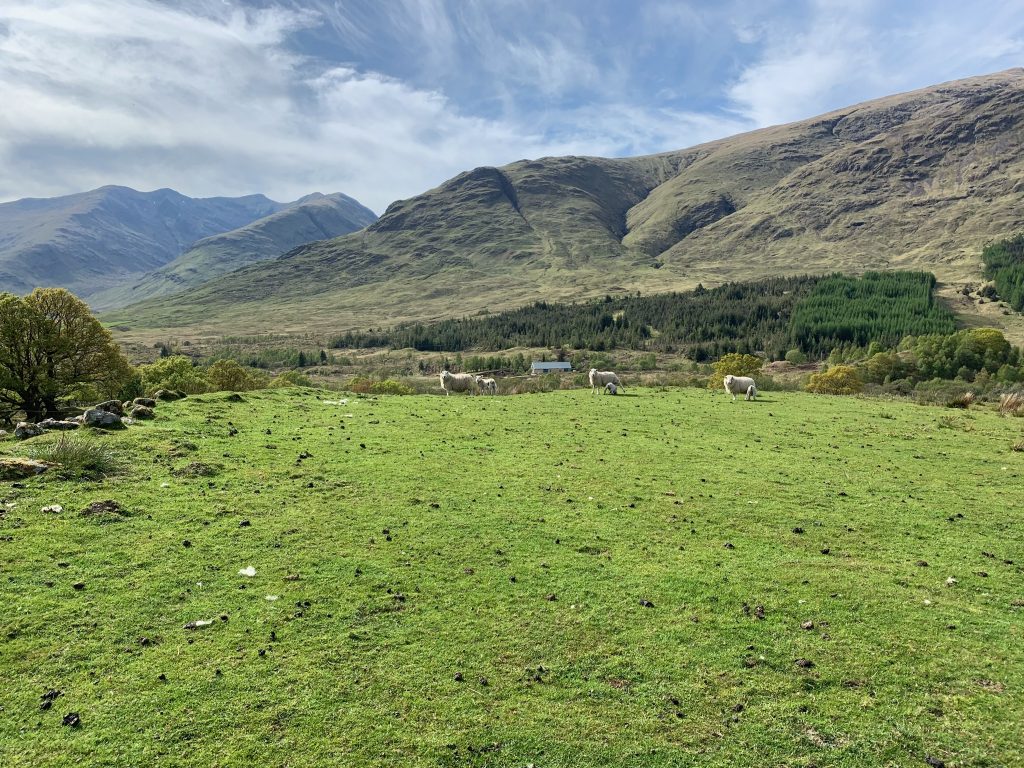
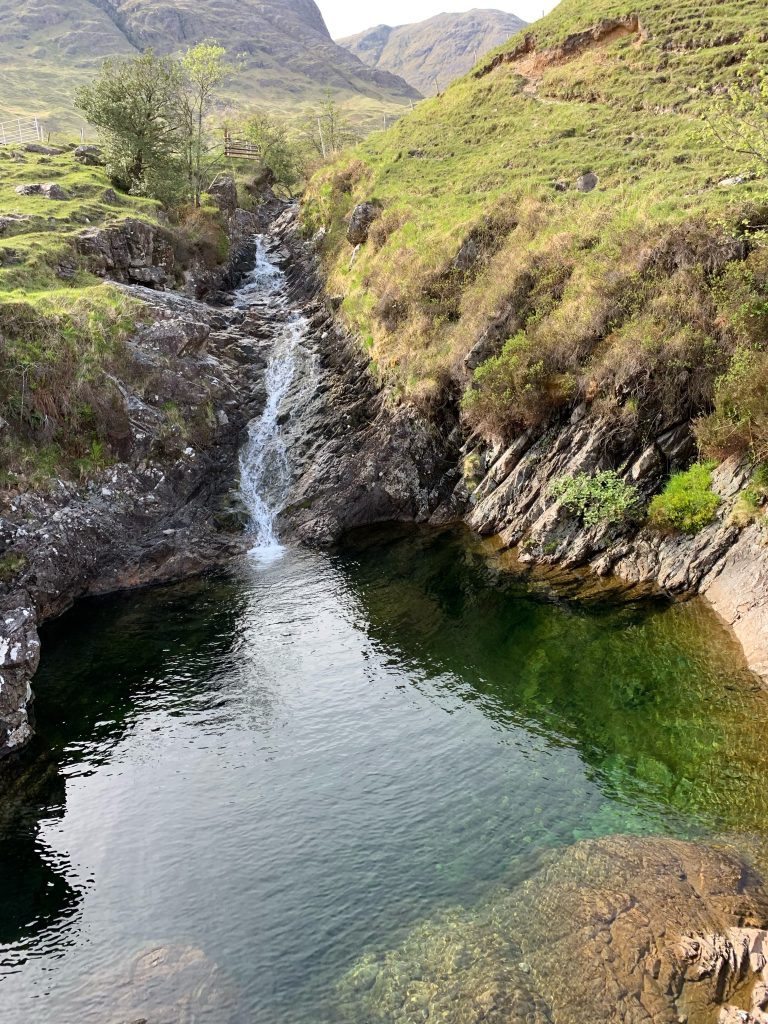
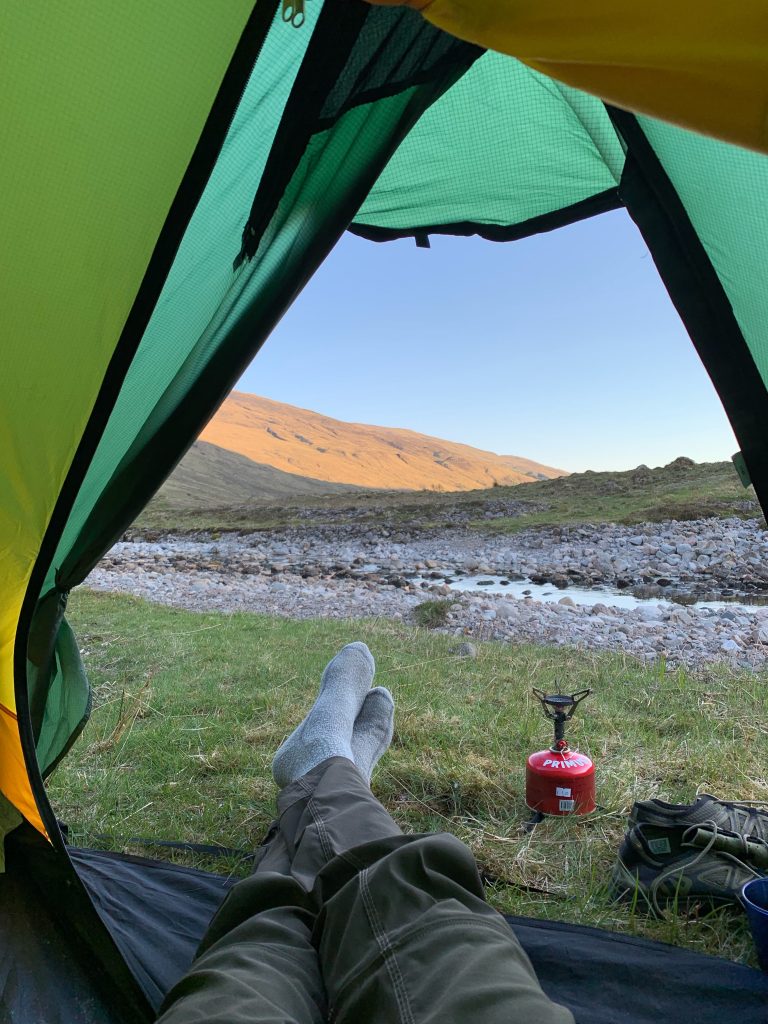
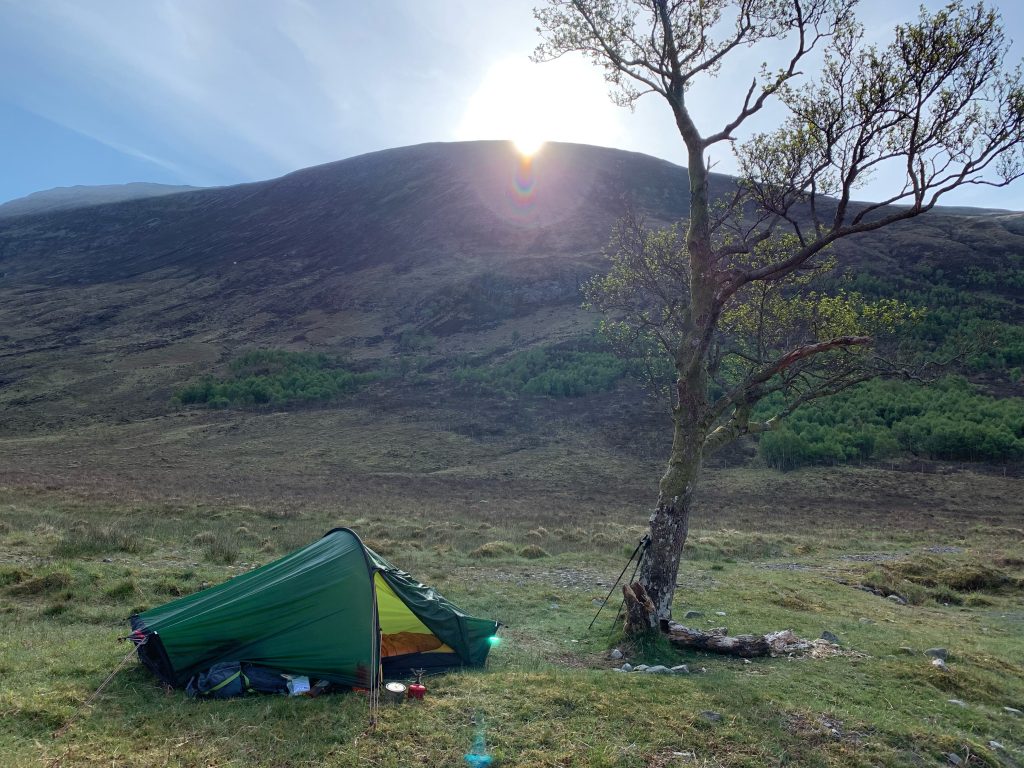
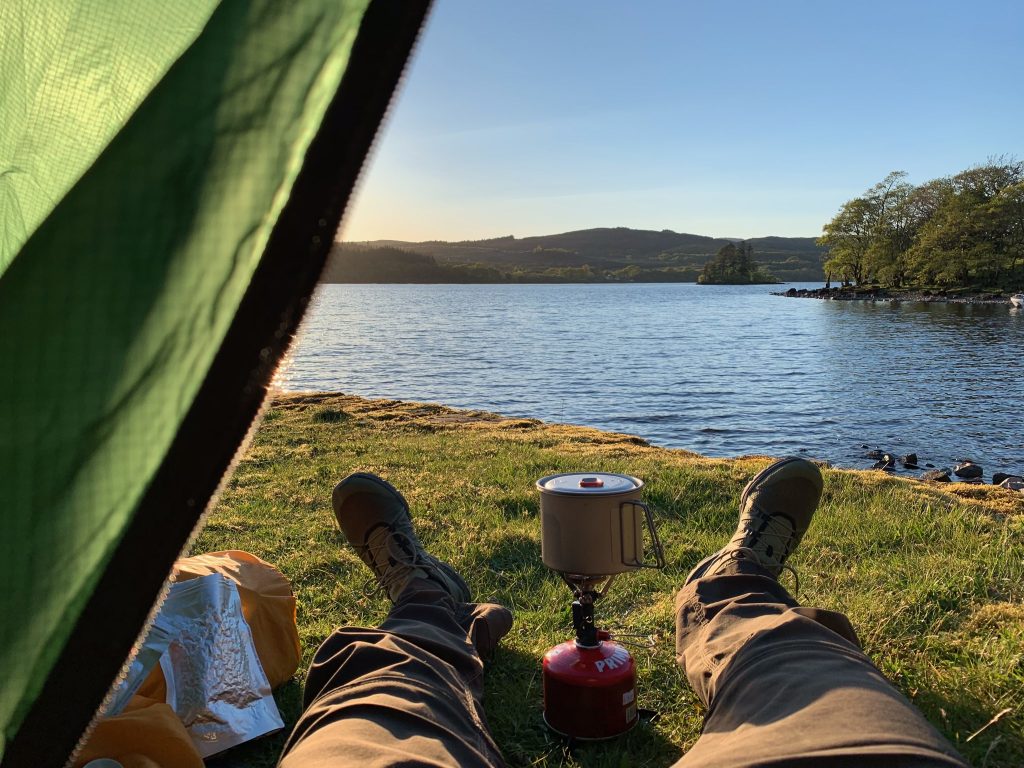
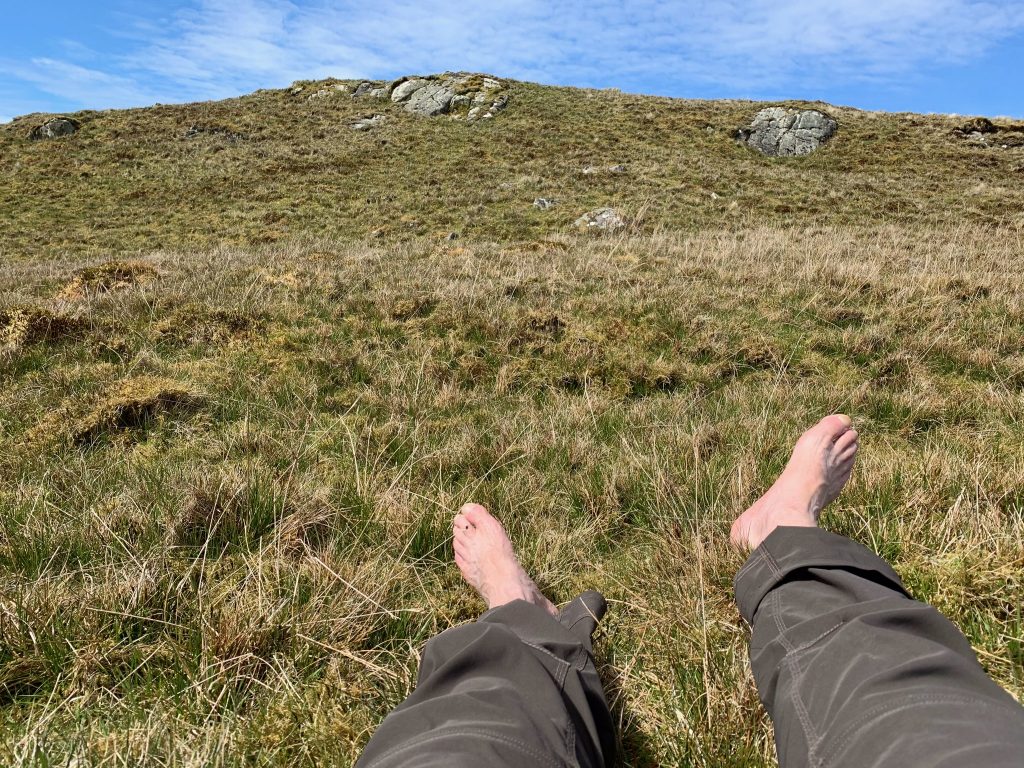
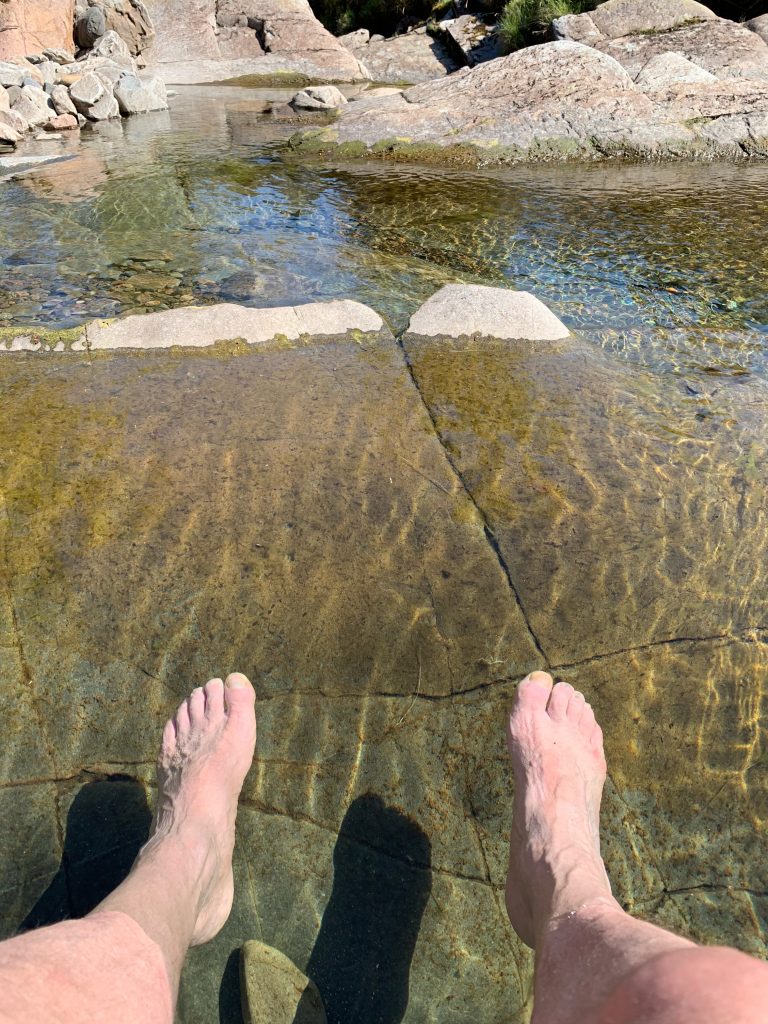

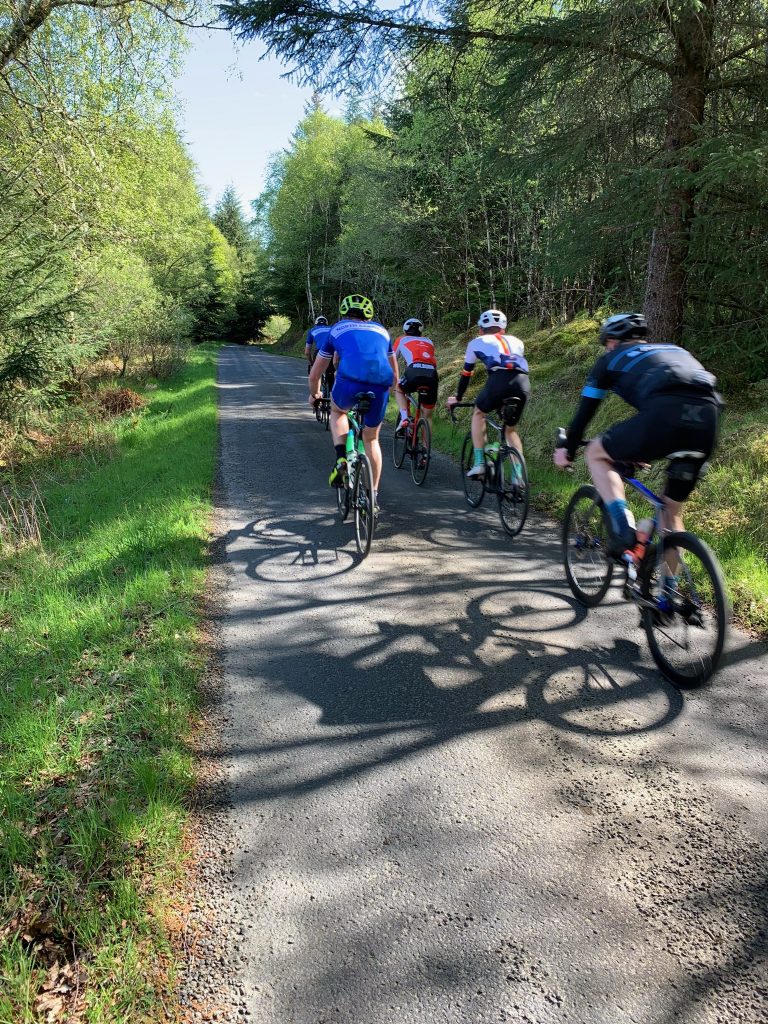

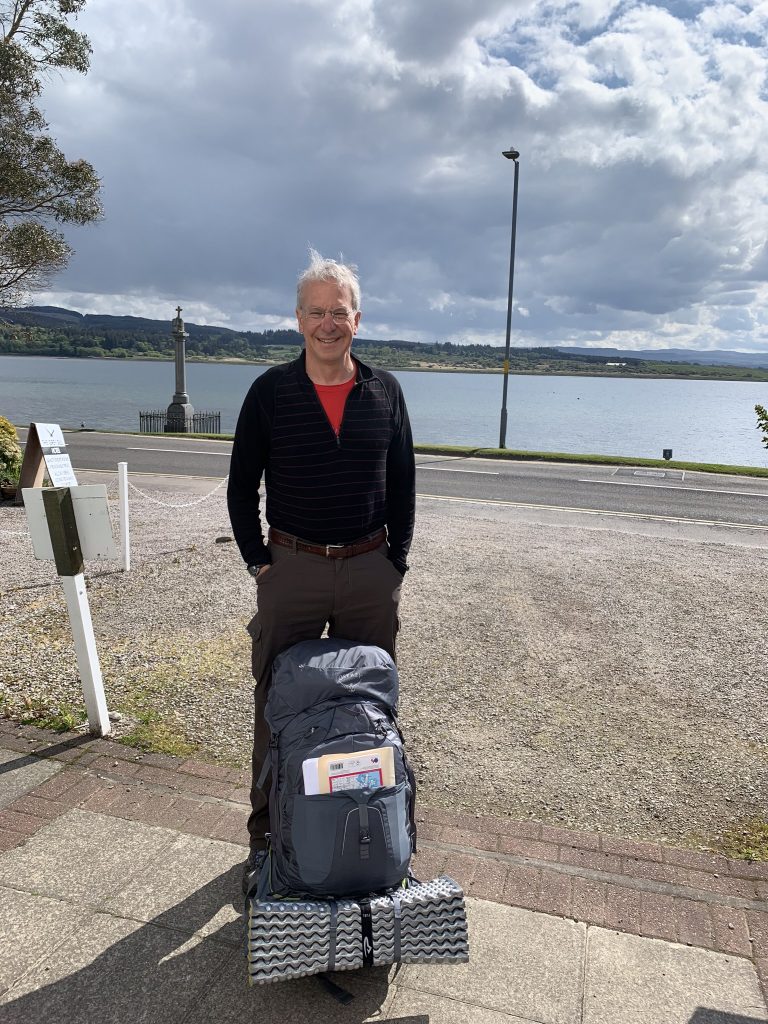
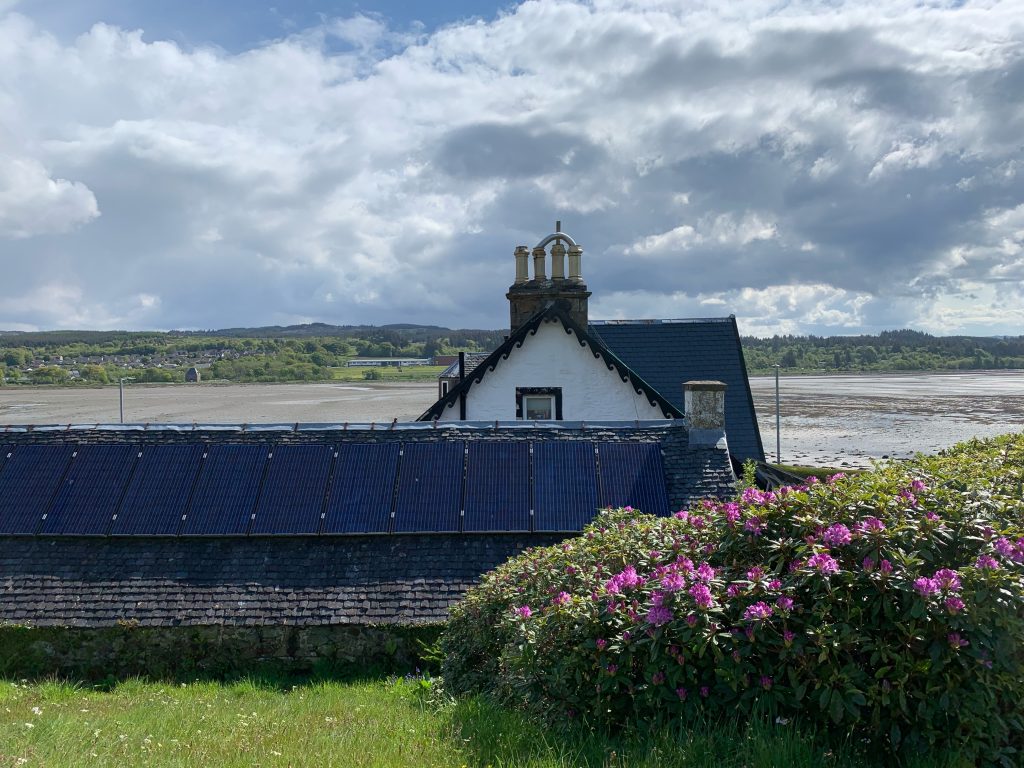
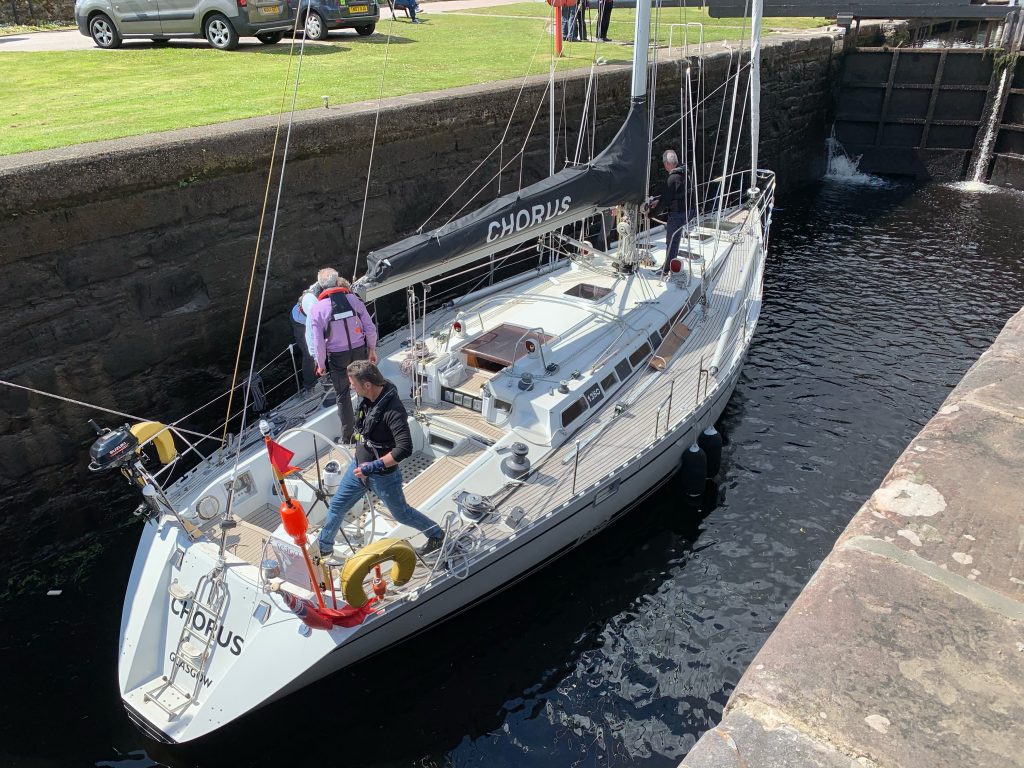
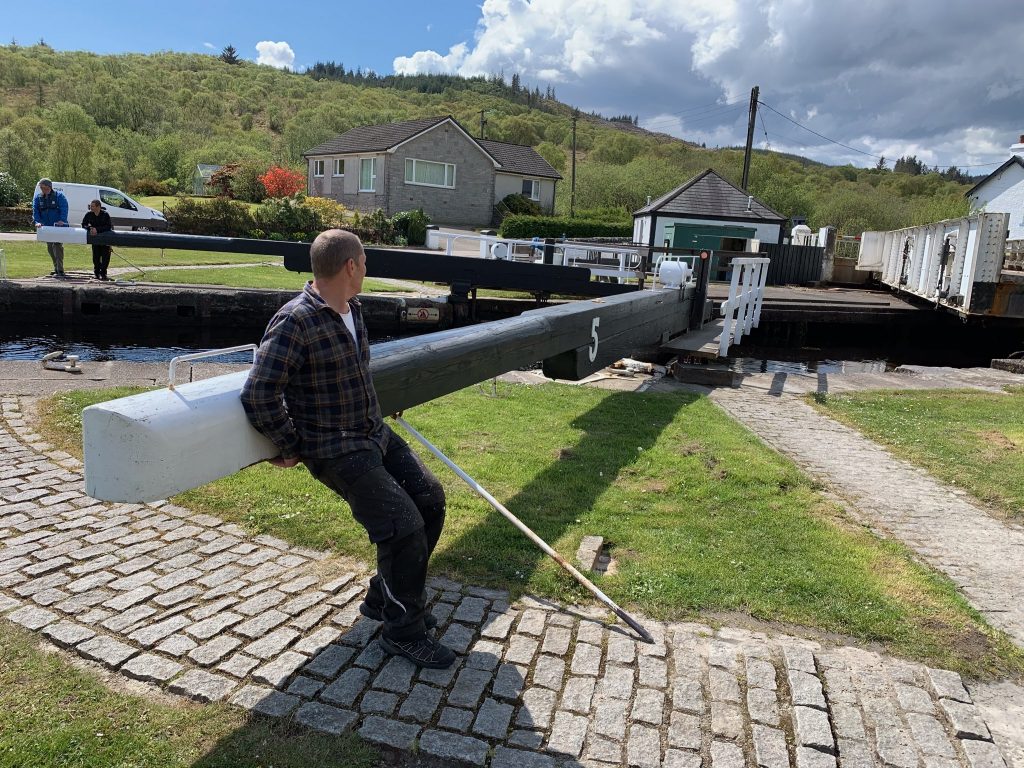
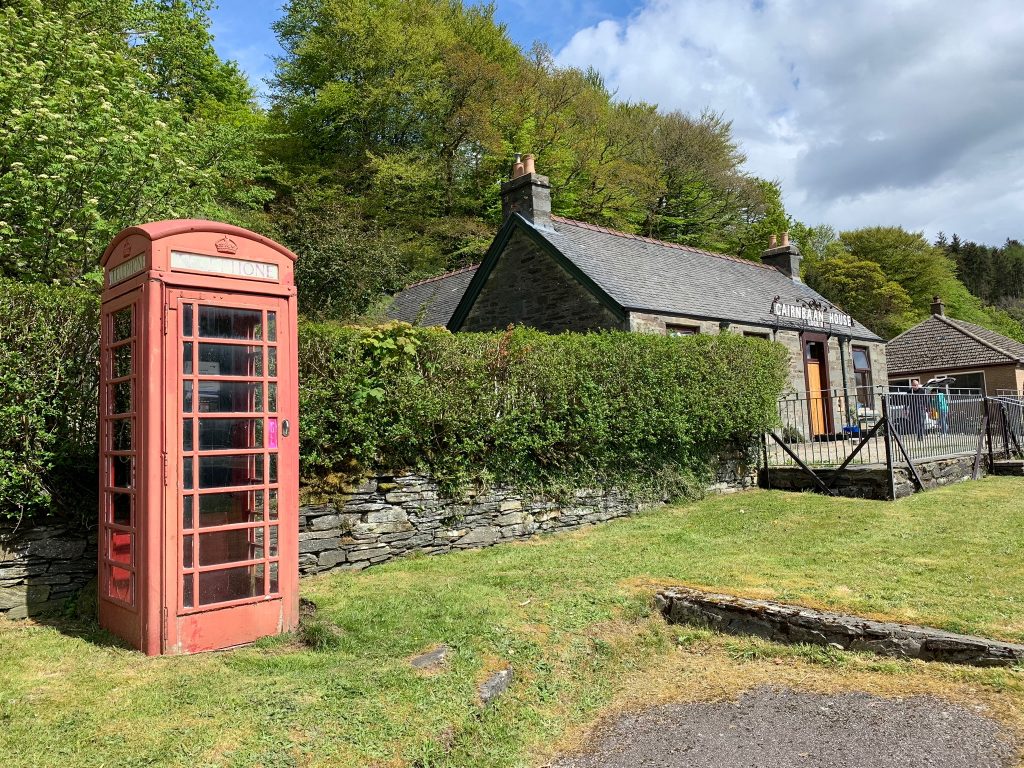
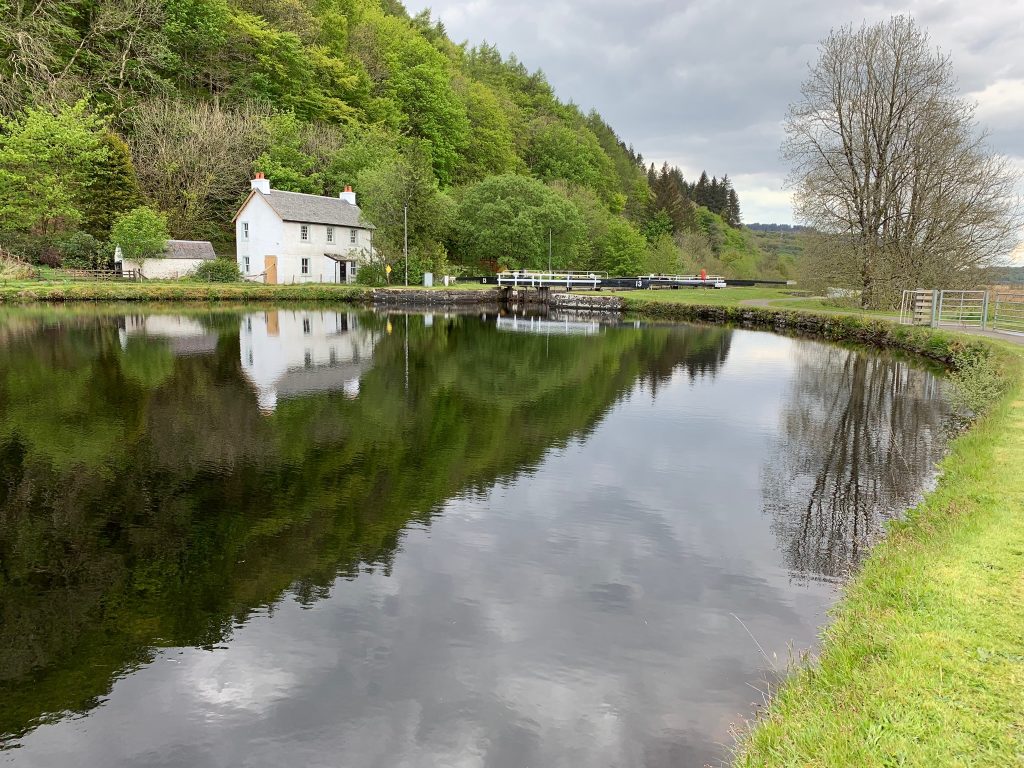
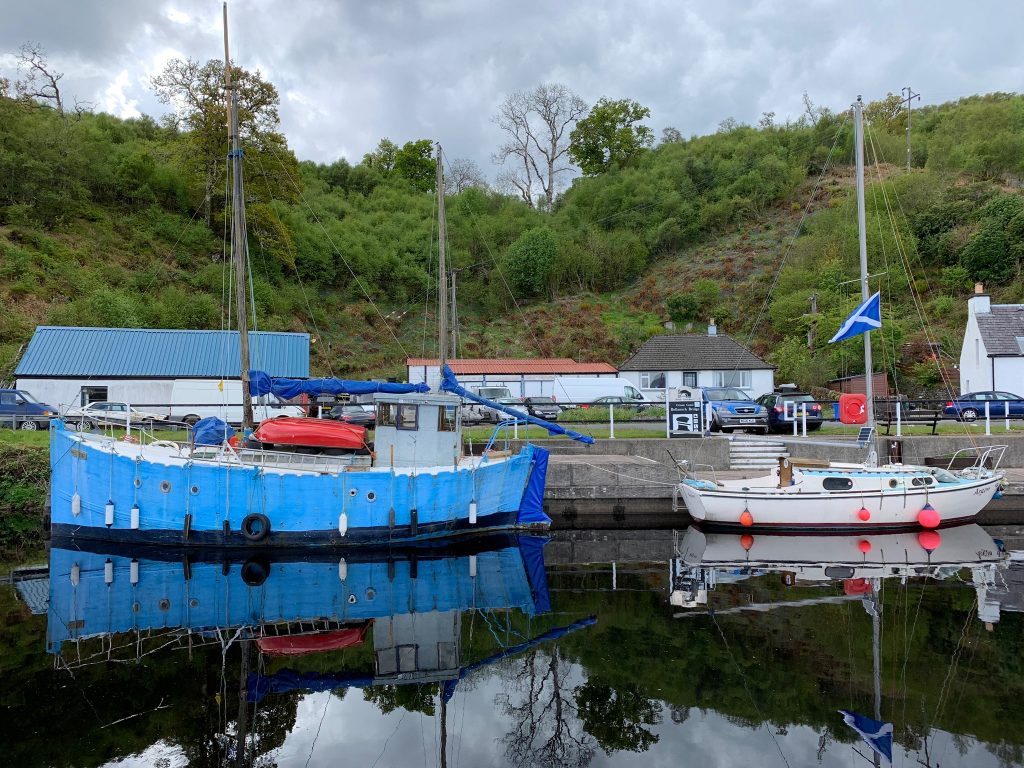
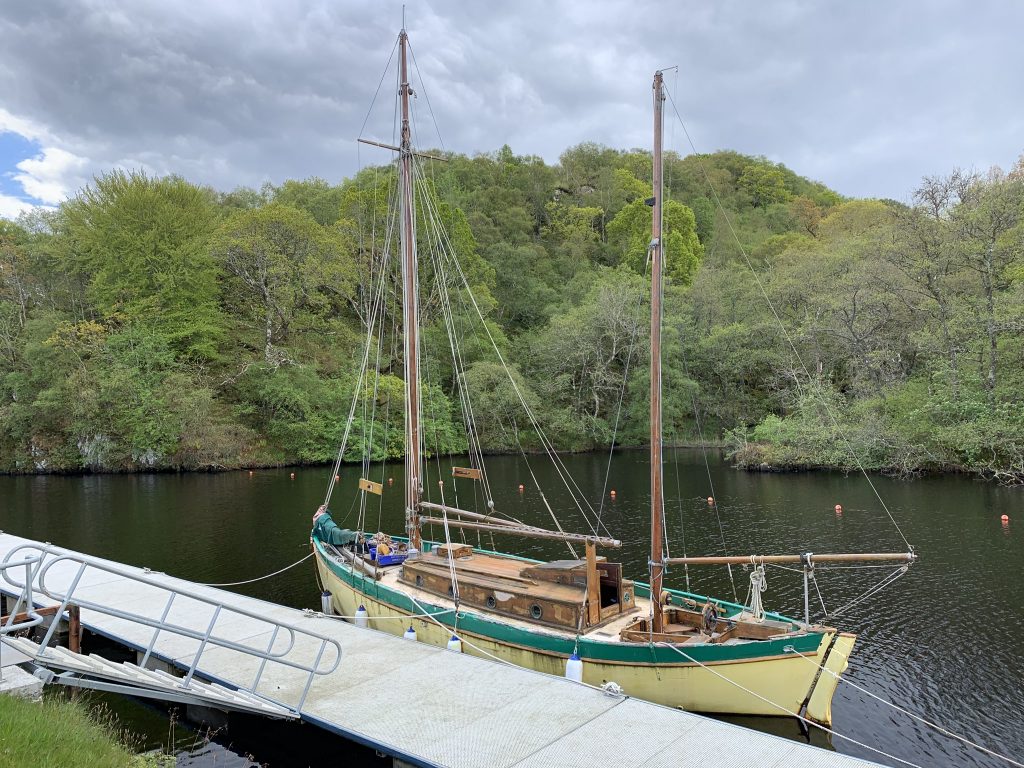
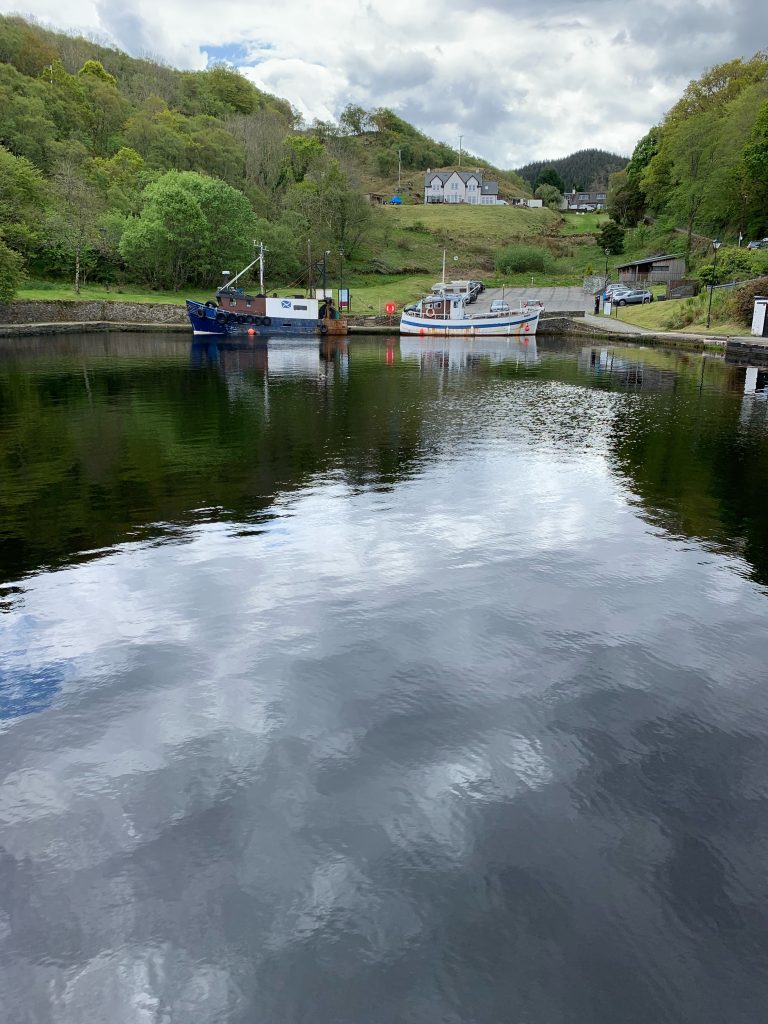


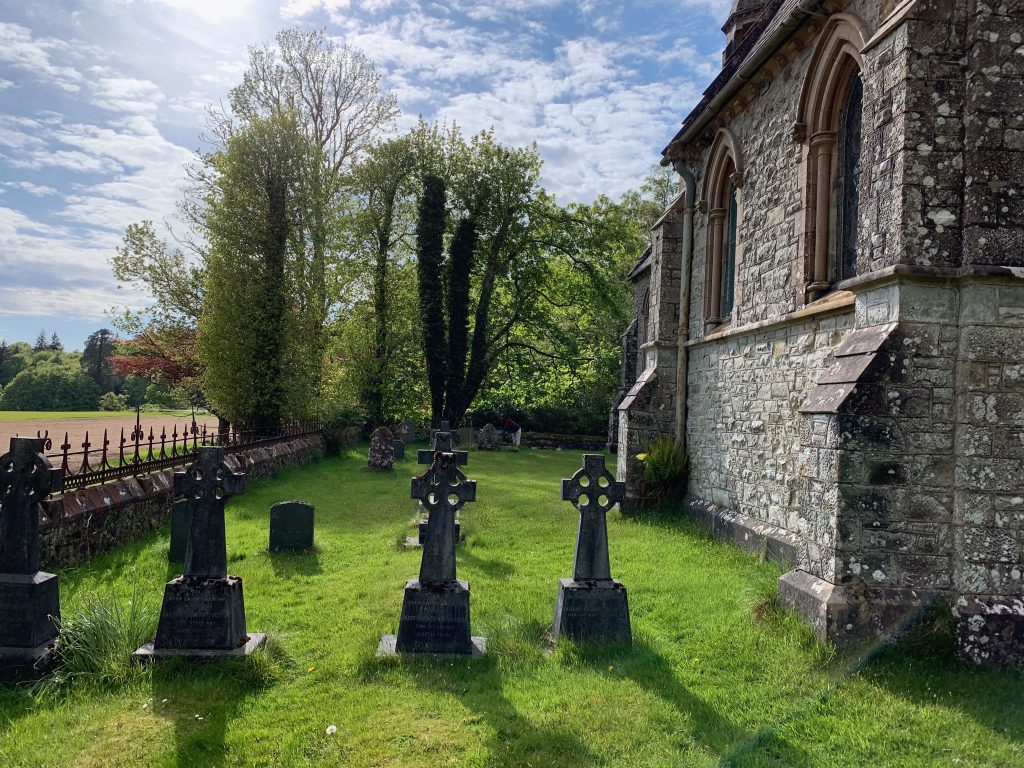
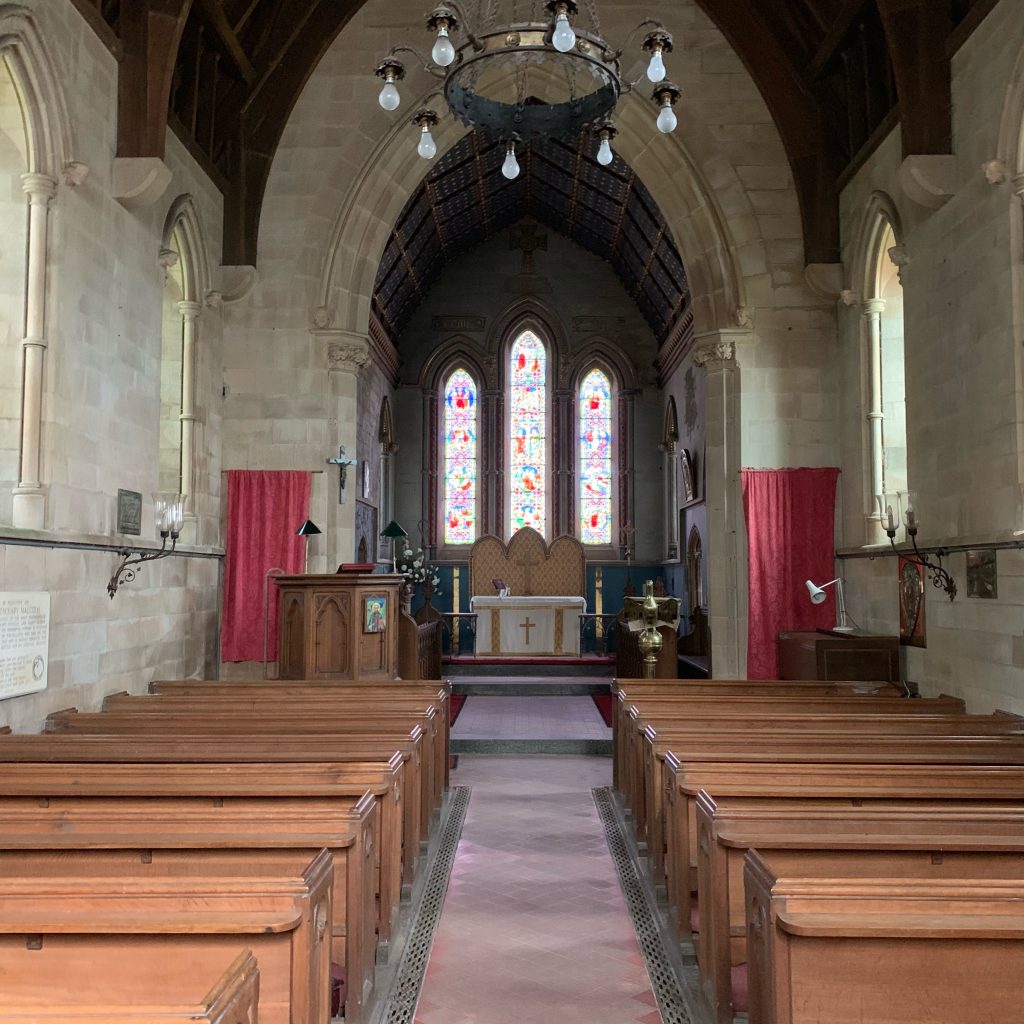
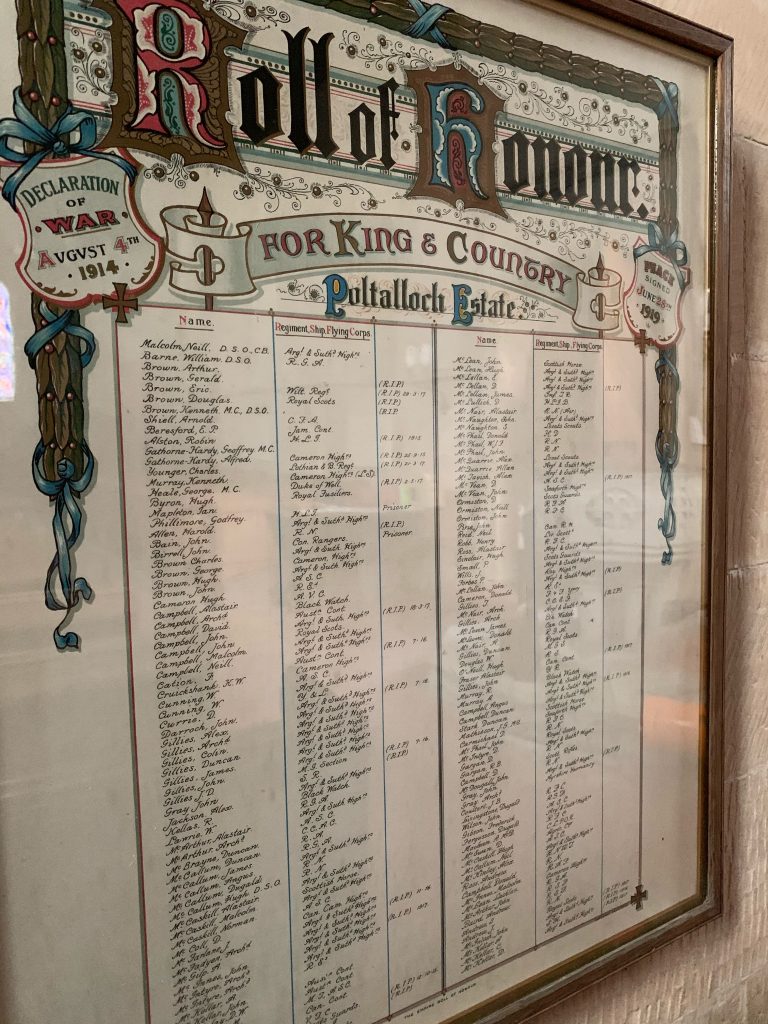
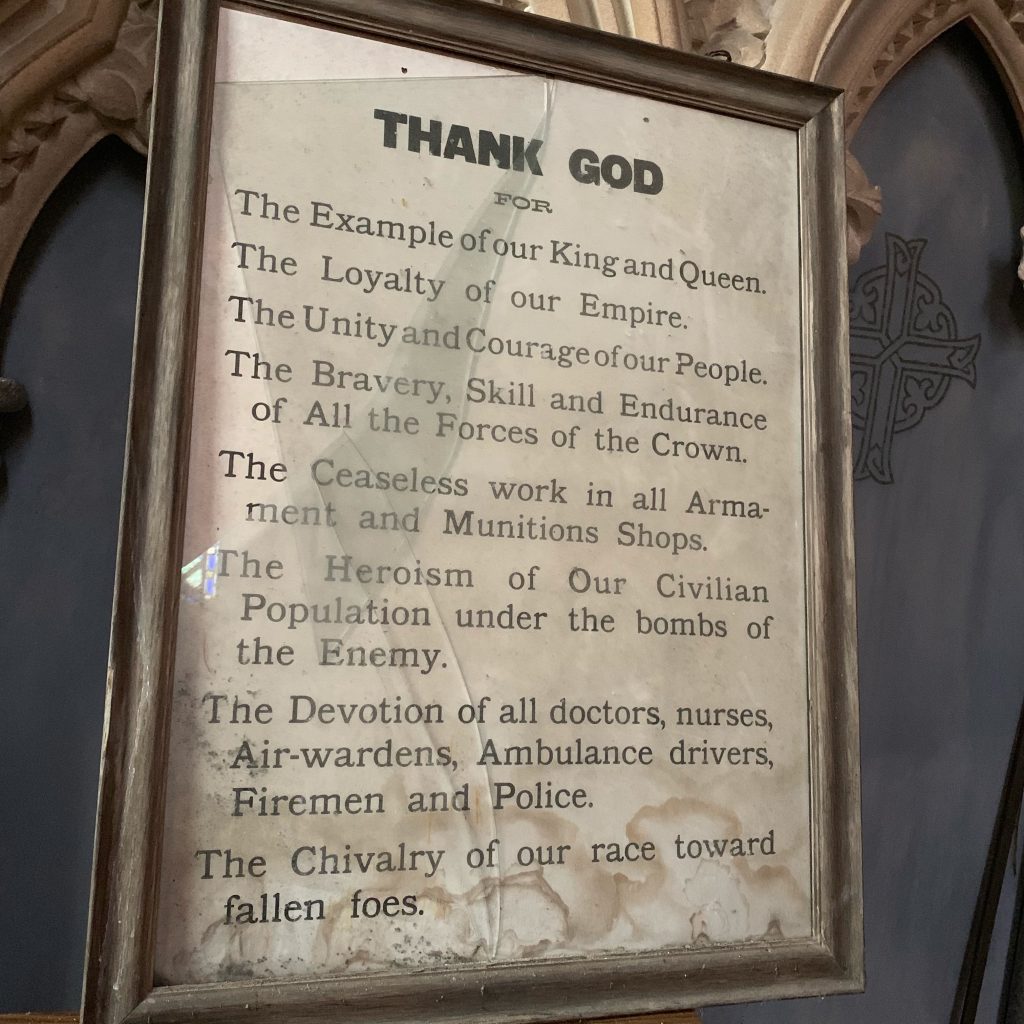
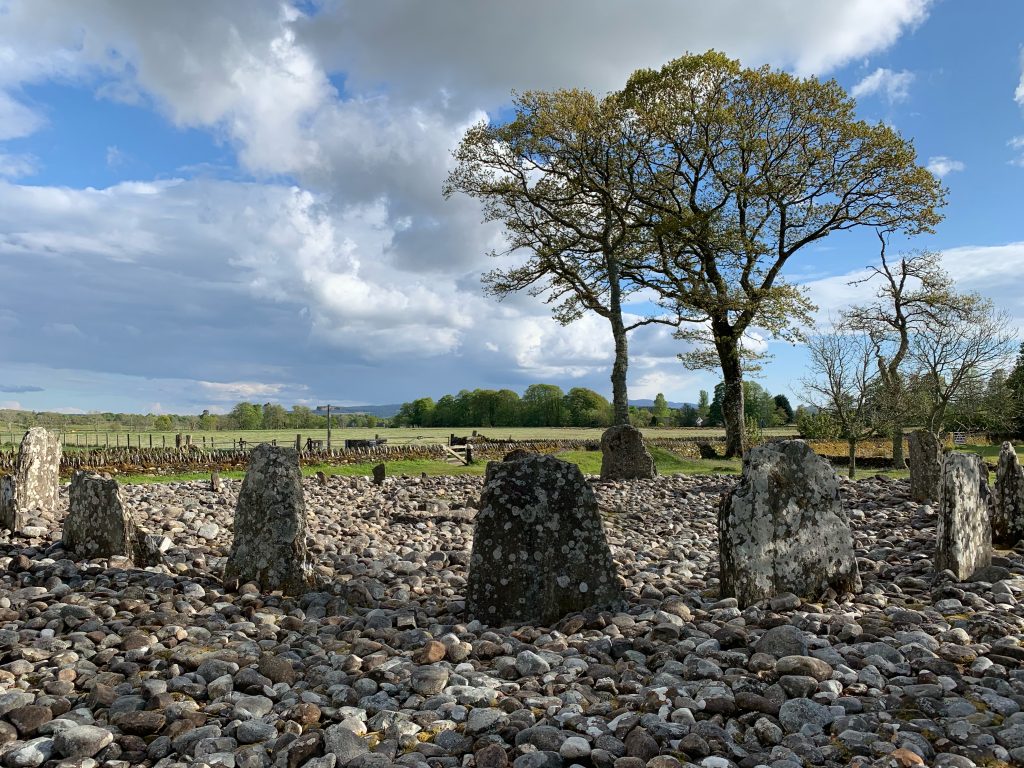
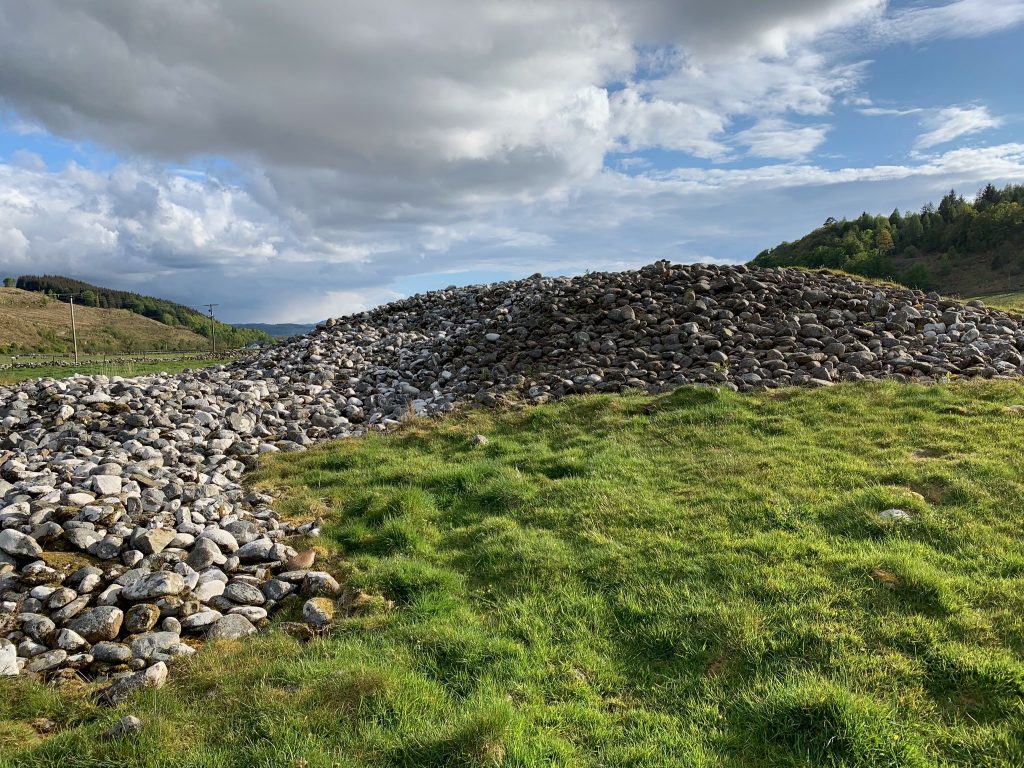
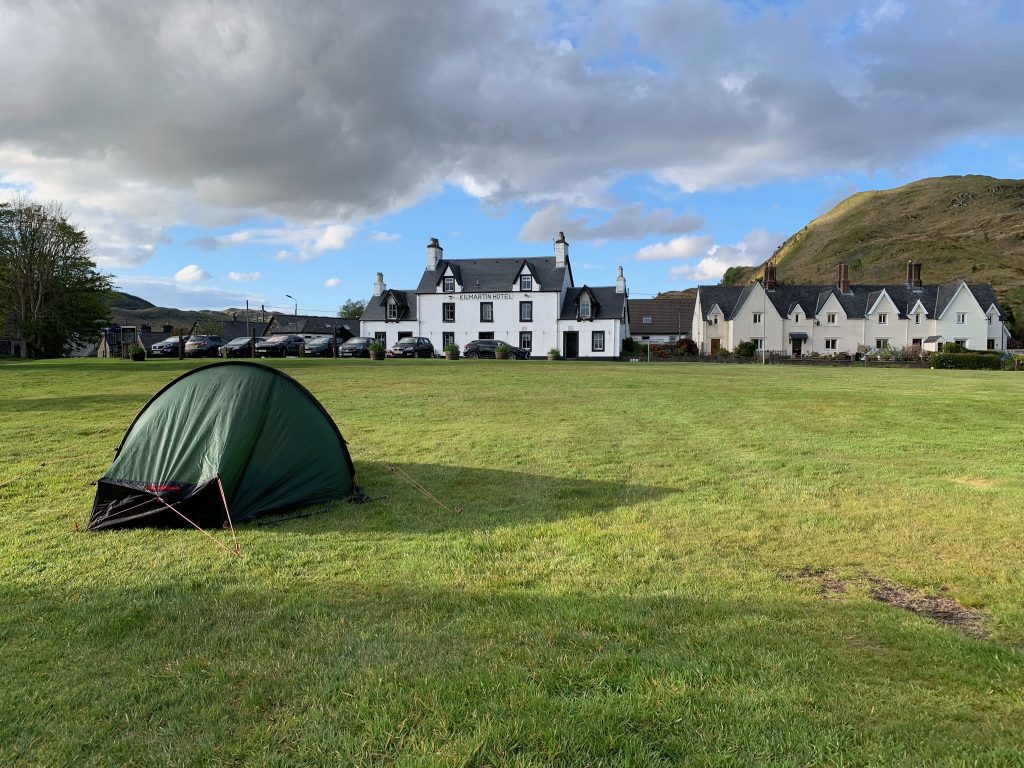
Recent Comments